More Photo Galleries
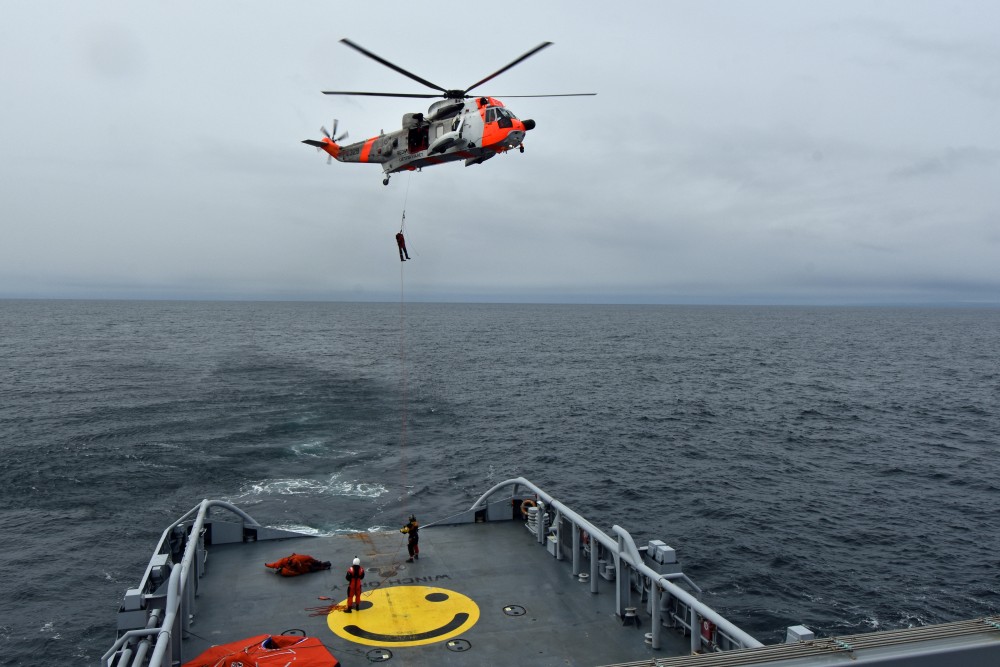 Norwegian Sea King rescue helicopter exercising evacuation of people found at sea to a Coast Guard vessel. Photo: Thomas Nilsen
Norwegian Sea King rescue helicopter exercising evacuation of people found at sea to a Coast Guard vessel. Photo: Thomas Nilsen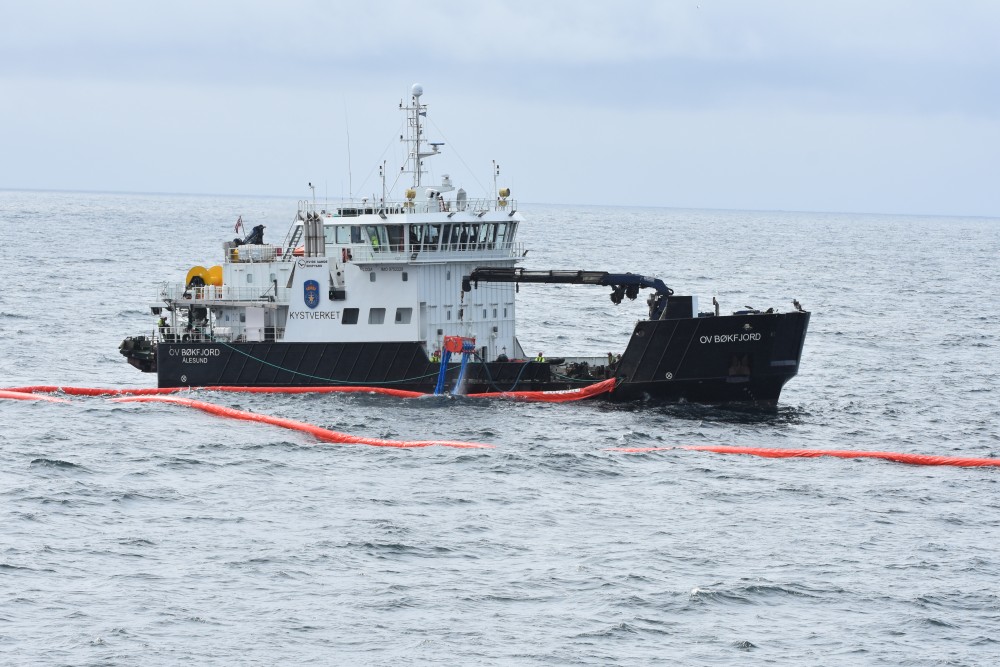 "OV Bøkfjord" - Operated by Norwegian Coastal Administration - participates in collecting oil spill at sea. Photo: Thomas Nilsen
"OV Bøkfjord" - Operated by Norwegian Coastal Administration - participates in collecting oil spill at sea. Photo: Thomas Nilsen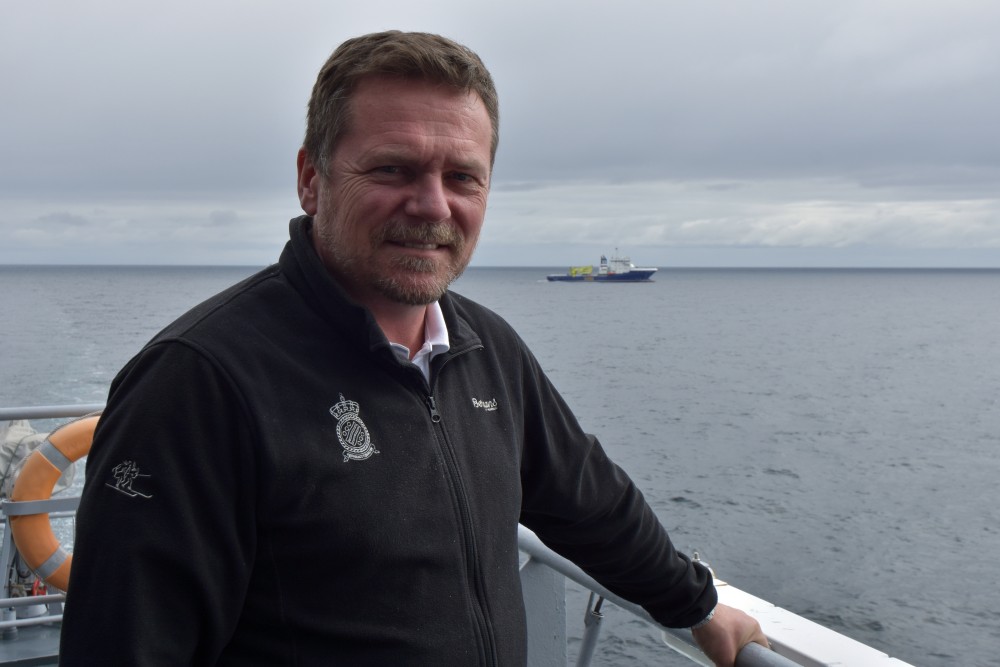 Bent-Ove Jamtli is Director of the Joint Rescue Coordination Centre of North Norway. Photo: Thomas Nilsen
Bent-Ove Jamtli is Director of the Joint Rescue Coordination Centre of North Norway. Photo: Thomas Nilsen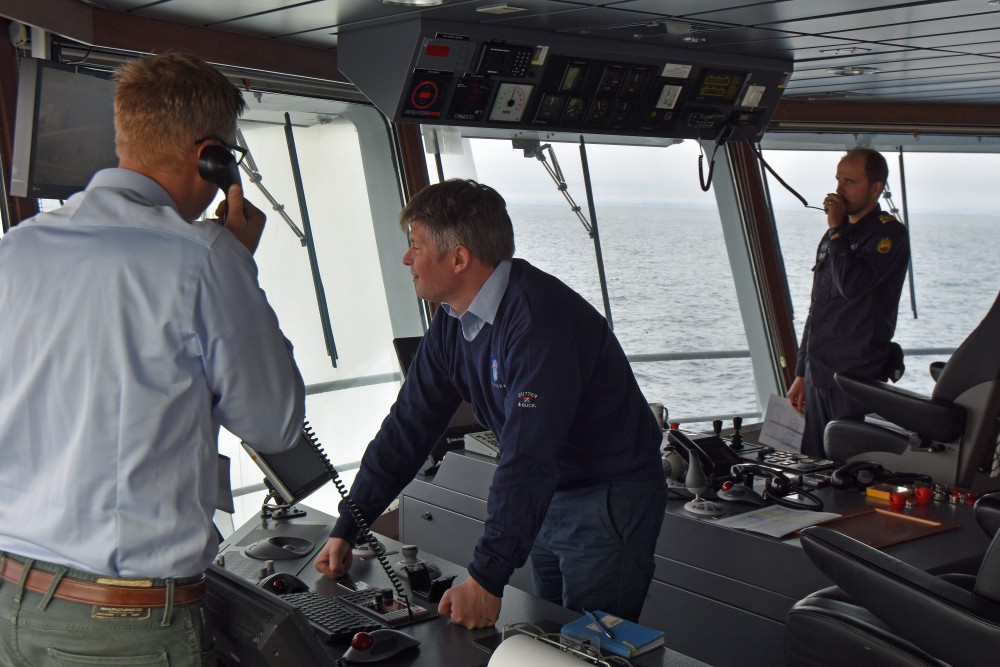 Coordinating radio traffic on the bridge of "KV Barentshav" during exercise Barents 2018. Photo: Thomas Nilsen
Coordinating radio traffic on the bridge of "KV Barentshav" during exercise Barents 2018. Photo: Thomas Nilsen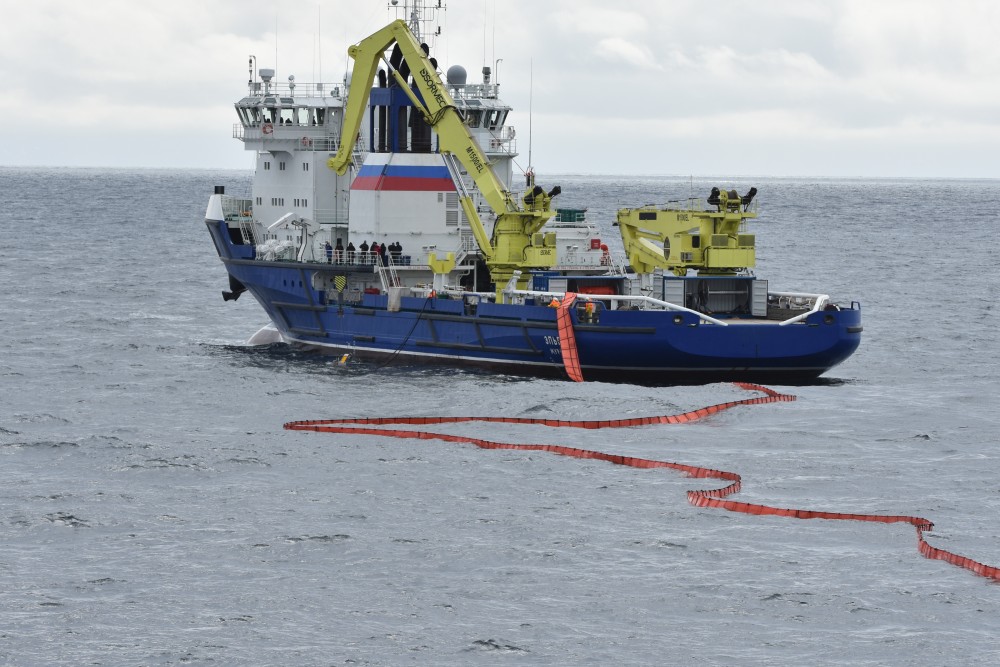 The Russian navy vessel "Elbrus" exercising oil spill cleanup with lense and skimmer. Photo: Thomas Nilsen
The Russian navy vessel "Elbrus" exercising oil spill cleanup with lense and skimmer. Photo: Thomas Nilsen Key players in exercise Barents 2018, Norwegians and Russians. Photo: Thomas Nilsen
Key players in exercise Barents 2018, Norwegians and Russians. Photo: Thomas Nilsen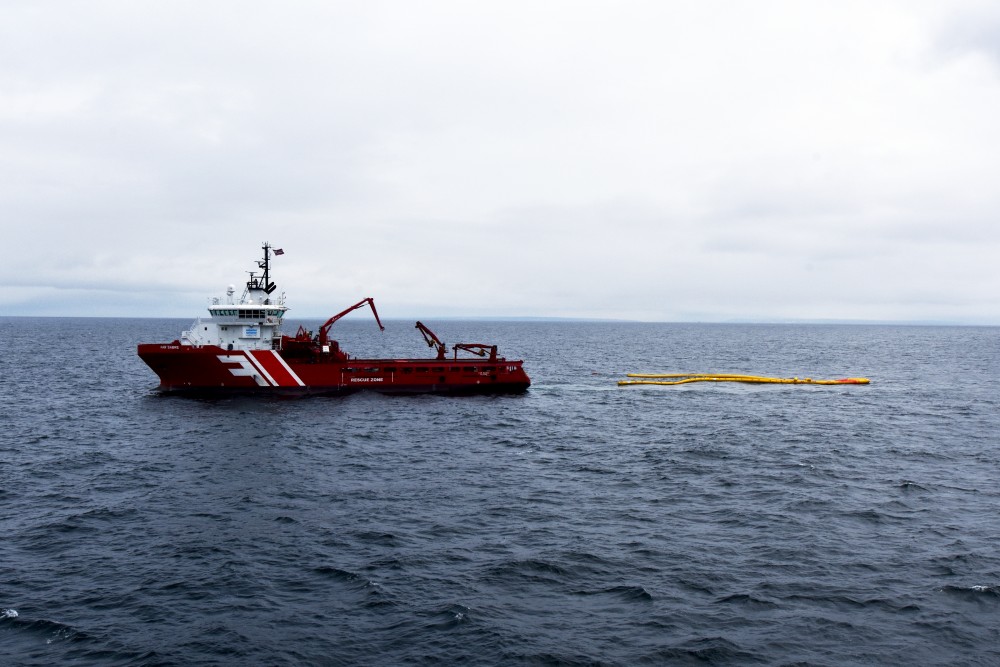 Norwegian offshore and tug vessel "Far Sabre" with oil spill lense. Photo: Thomas Nilsen
Norwegian offshore and tug vessel "Far Sabre" with oil spill lense. Photo: Thomas Nilsen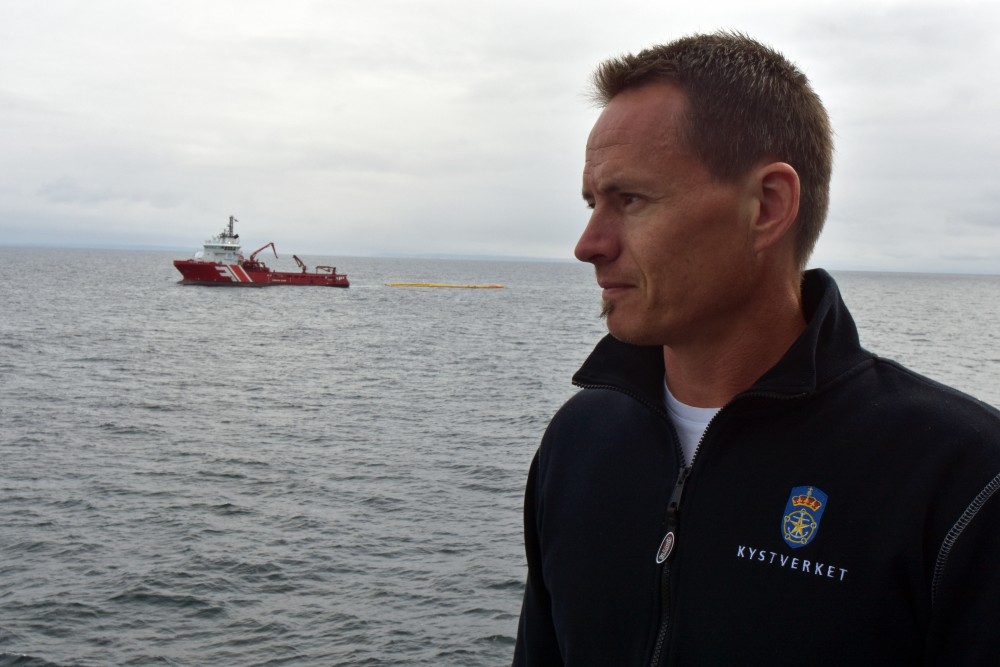 Jan Pedersen is Senior Advisor with the Norwegian Coastal Administration's Centre for Emergency Preparedness. Photo: Thomas Nilsen
Jan Pedersen is Senior Advisor with the Norwegian Coastal Administration's Centre for Emergency Preparedness. Photo: Thomas Nilsen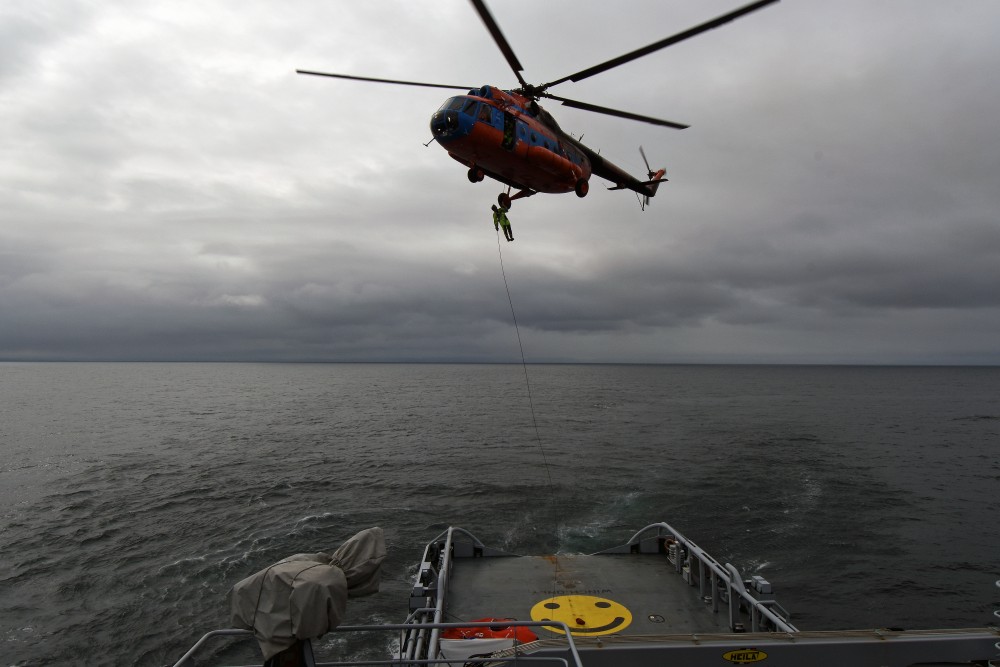 Fast-roping to the deck of the Norwegian Coast Guard ship "KV Barentshav" from a Russian Mi-8 helicopter operating for the rescue service based in Murmansk. Photo: Thomas Nilsen
Fast-roping to the deck of the Norwegian Coast Guard ship "KV Barentshav" from a Russian Mi-8 helicopter operating for the rescue service based in Murmansk. Photo: Thomas Nilsen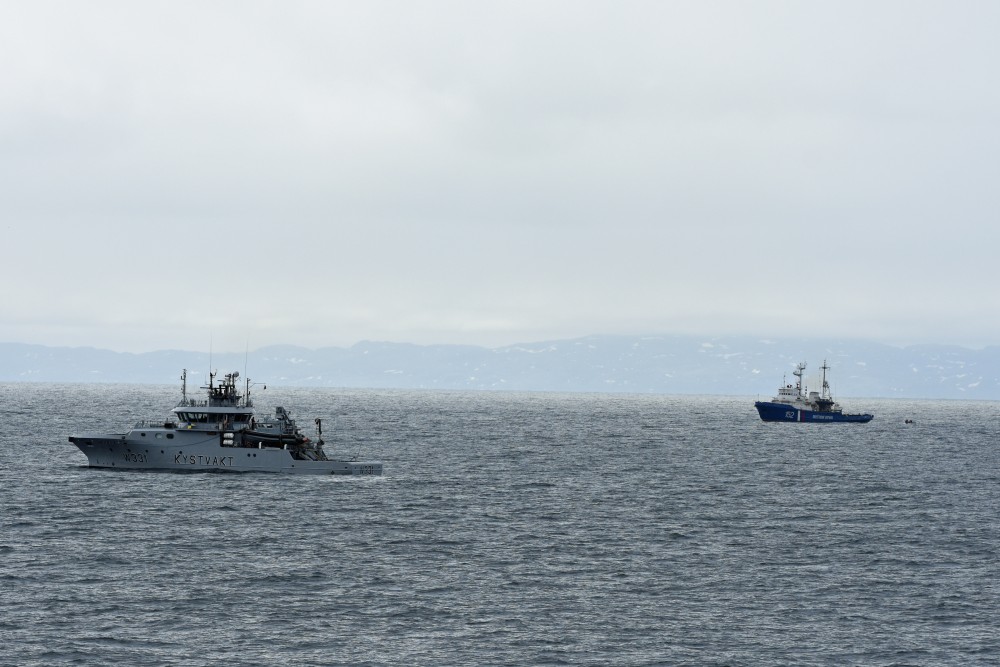 Norwegian Coast Guard vessel "Farm" sailing in pair with a FSB Coast Guard vessel. Photo: Thomas Nilsen
Norwegian Coast Guard vessel "Farm" sailing in pair with a FSB Coast Guard vessel. Photo: Thomas Nilsen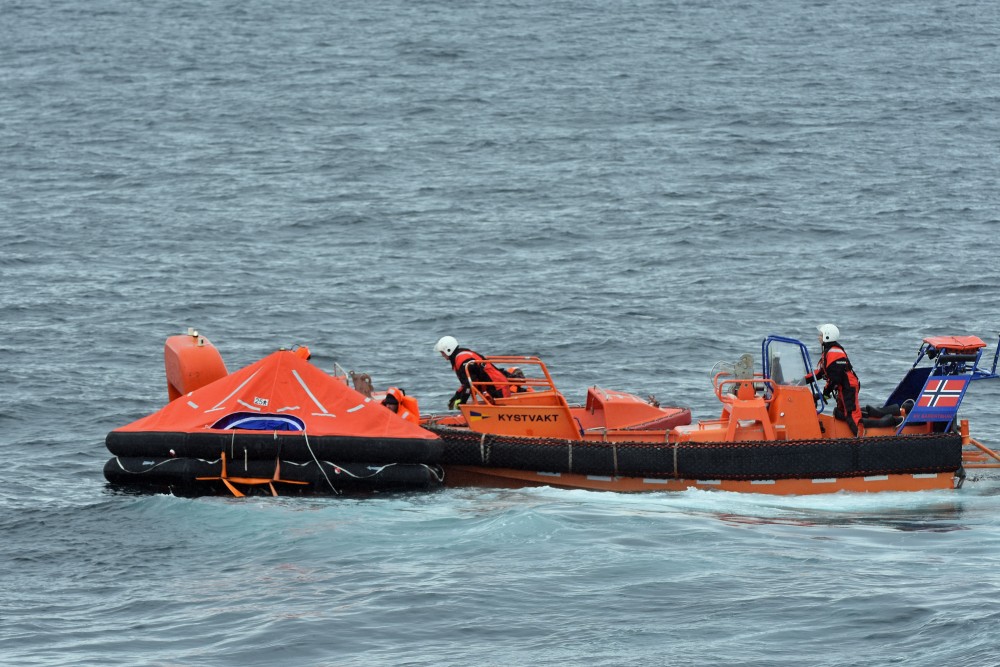 Two of the "missing people" in the exercise were found on board this lift raft. Photo: Thomas Nilsen
Two of the "missing people" in the exercise were found on board this lift raft. Photo: Thomas Nilsen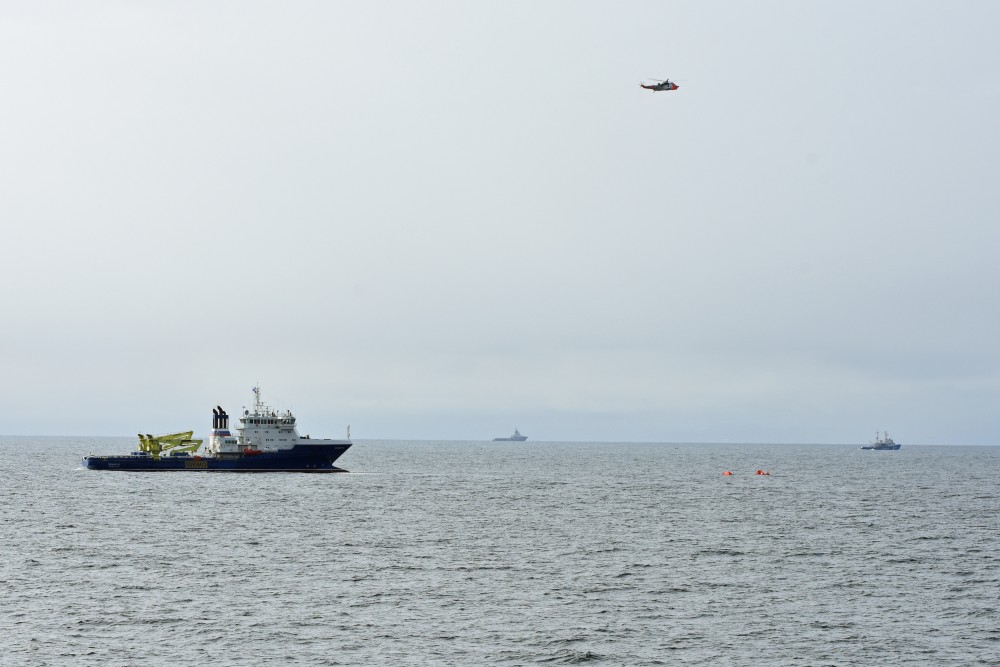 In search for the "missing life raft" - Norwegian and Russian military and civilian ships and helicopters participated. Photo: Thomas Nilsen
In search for the "missing life raft" - Norwegian and Russian military and civilian ships and helicopters participated. Photo: Thomas Nilsen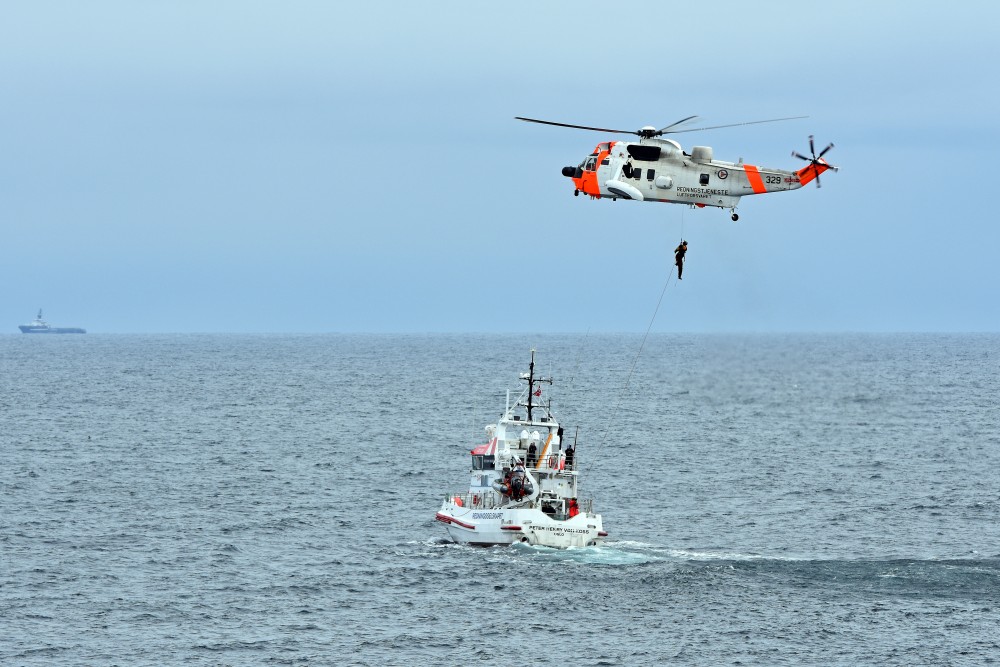 Fast-roping evacuation from a SAR-vessel to the helicopter. Photo: Thomas Nilsen
Fast-roping evacuation from a SAR-vessel to the helicopter. Photo: Thomas Nilsen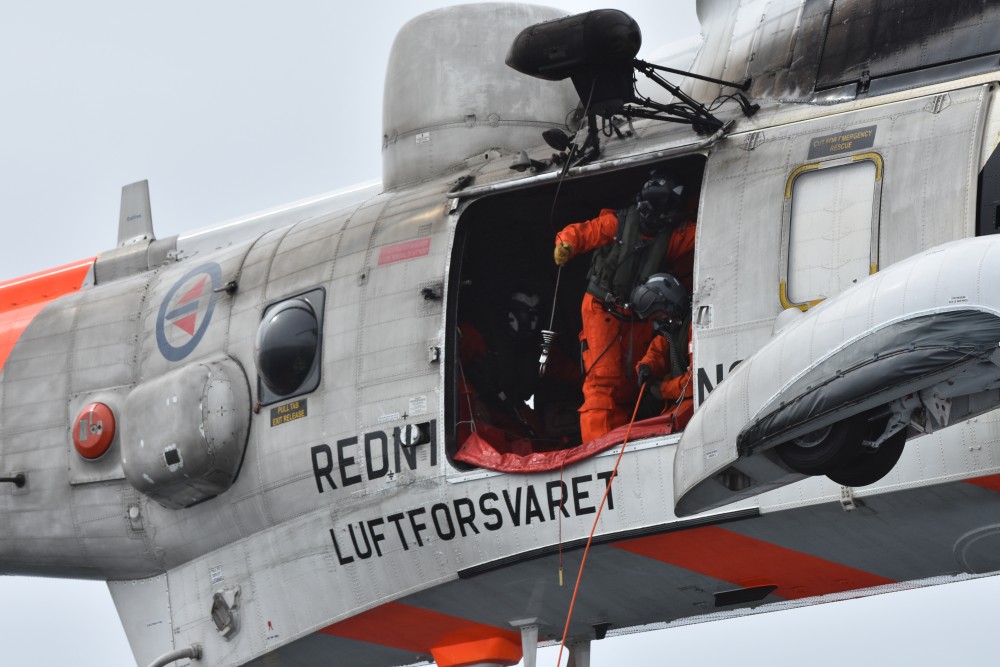 Preparing for fast-roping from a rescue helicopter. Photo: Thomas Nilsen
Preparing for fast-roping from a rescue helicopter. Photo: Thomas Nilsen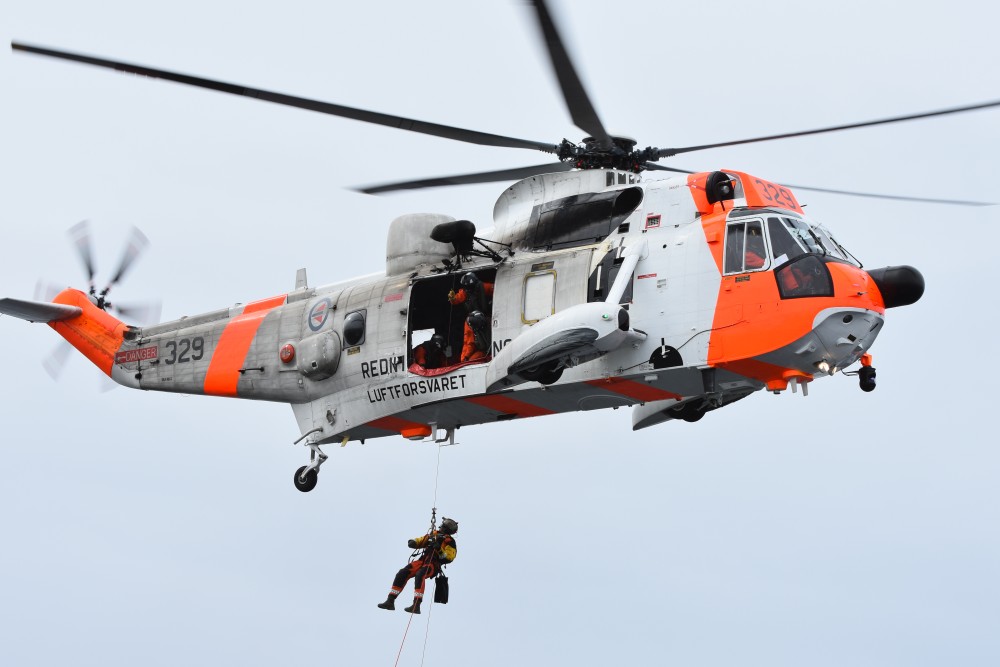 Lifting people to helicopter for evacuation is part of the exercise. Photo: Thomas Nilsen
Lifting people to helicopter for evacuation is part of the exercise. Photo: Thomas Nilsen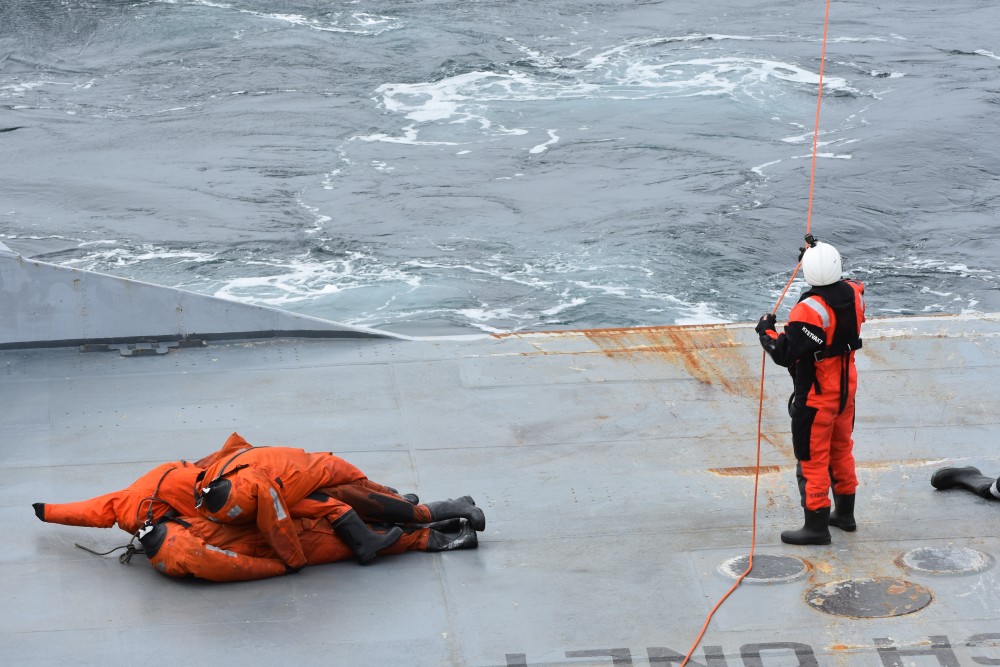 A few of the "survivors" are safely on board a Coast Guard vessel. Photo: Thomas Nilsen
A few of the "survivors" are safely on board a Coast Guard vessel. Photo: Thomas Nilsen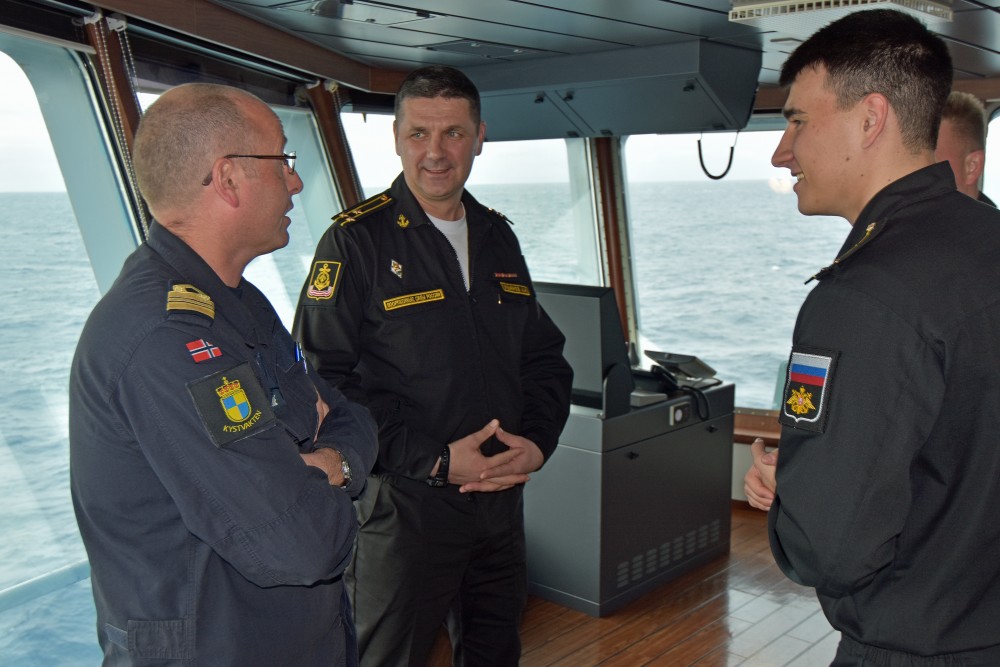 Smile for cooperation: Captain on bridge Frode Urke (left) and Head of the Northern Fleet's exercise unit Aleksandr Ulyanov (in the middle). Photo: Thomas Nilsen
Smile for cooperation: Captain on bridge Frode Urke (left) and Head of the Northern Fleet's exercise unit Aleksandr Ulyanov (in the middle). Photo: Thomas Nilsen Speedy working boat shuttles people in between the Norwegian and Russian participating ships. Photo: Thomas Nilsen
Speedy working boat shuttles people in between the Norwegian and Russian participating ships. Photo: Thomas Nilsen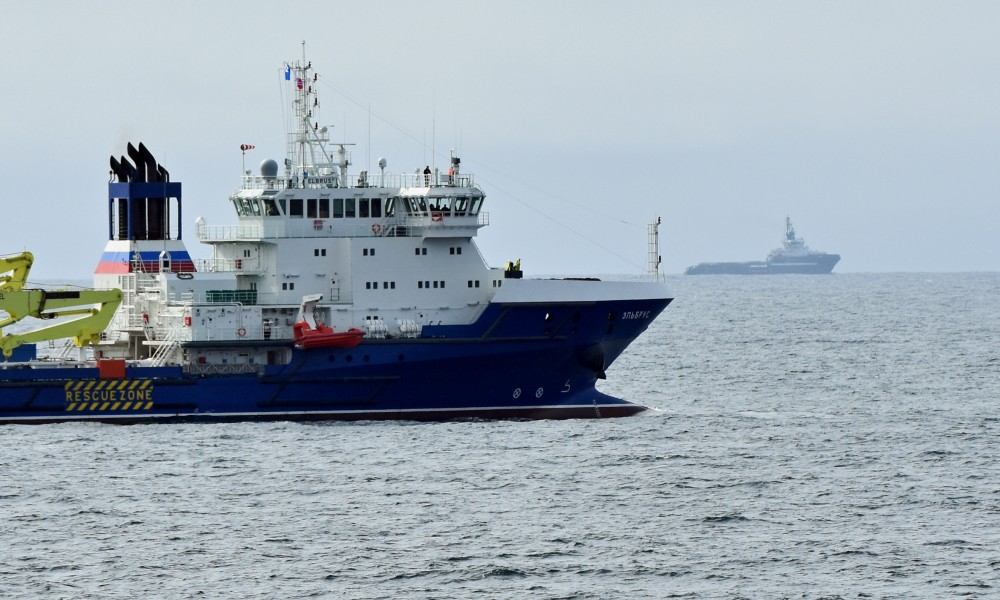 The Russian Northern Fleet's new logistics support ship "Elbrus" and the civilian offfshore- and tug vessel "Umka" (in the horizon). Photo: Thomas Nilsen
The Russian Northern Fleet's new logistics support ship "Elbrus" and the civilian offfshore- and tug vessel "Umka" (in the horizon). Photo: Thomas Nilsen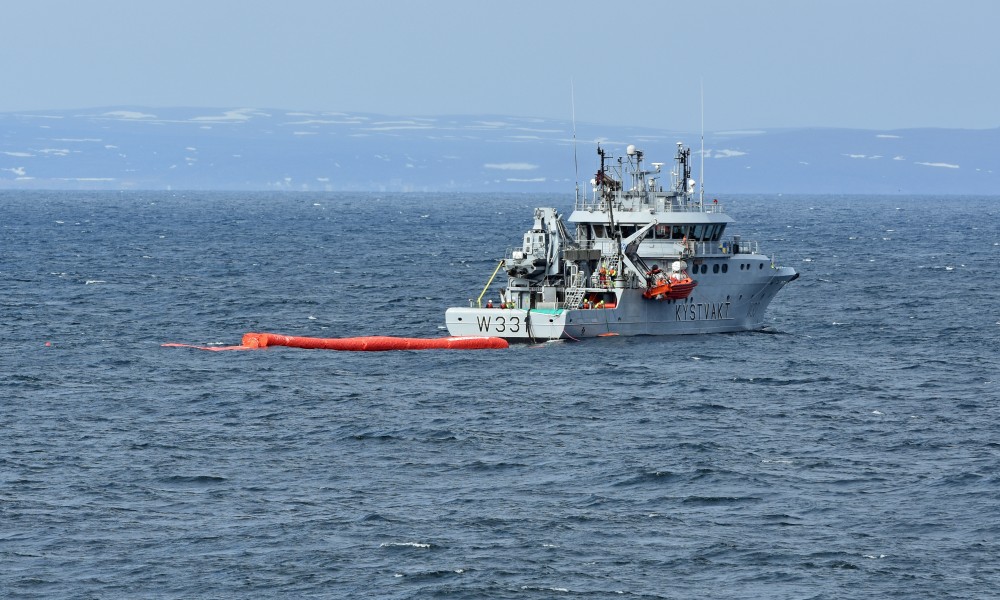 Norwegian Coast Guard vessel "Farm" with oil spill lense. Photo: Thomas Nilsen
Norwegian Coast Guard vessel "Farm" with oil spill lense. Photo: Thomas Nilsen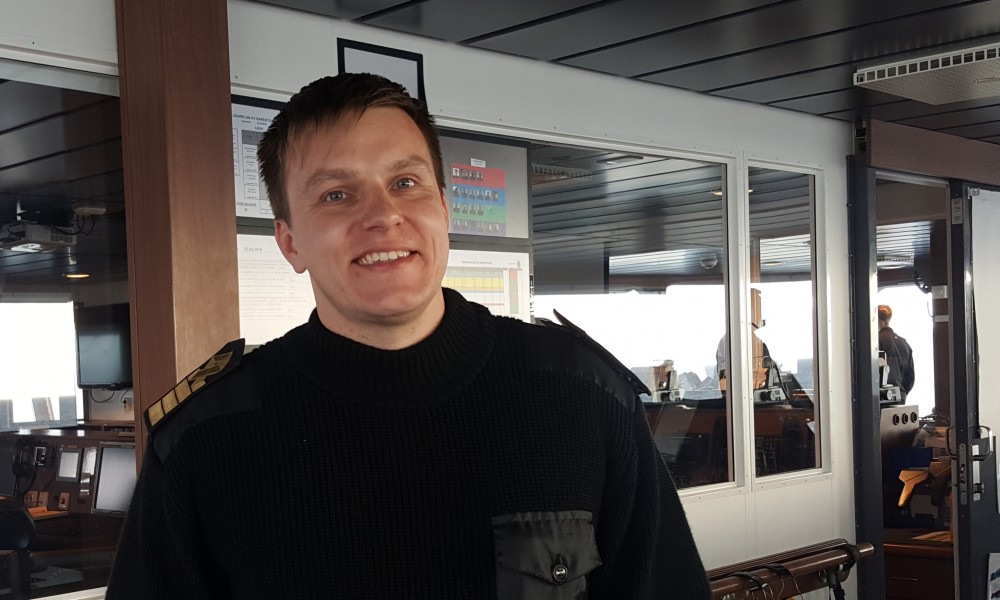 Igor Makeev is Captain Coordinator with Murmansk Sea Rescue Centre. Photo: Thomas Nilsen
Igor Makeev is Captain Coordinator with Murmansk Sea Rescue Centre. Photo: Thomas Nilsen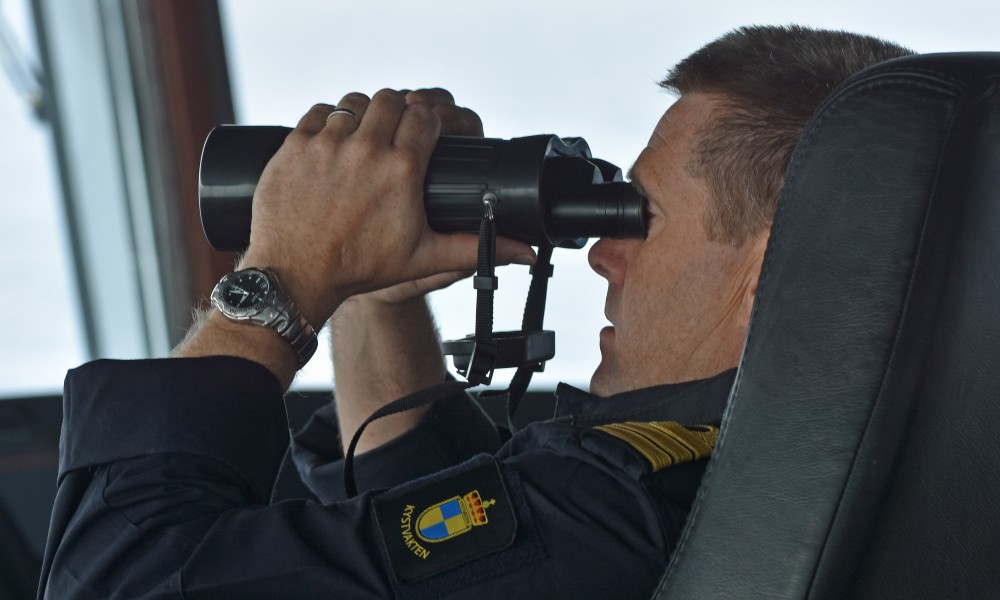 Coast Guard officer on watch. Photo: Thomas Nilsen
Coast Guard officer on watch. Photo: Thomas Nilsen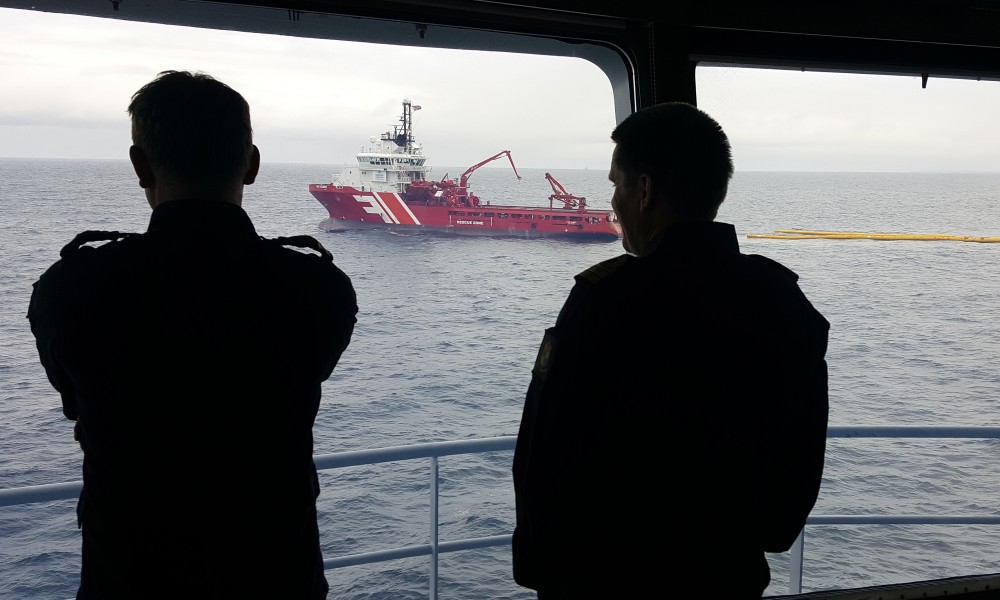 From the bridge of "KV Barentshav" team coordinators watching oil-spill cleanup practicing by the Norwegian vessel "Far Sabre" towing a lense in the sea. Photo: Thomas Nilsen
From the bridge of "KV Barentshav" team coordinators watching oil-spill cleanup practicing by the Norwegian vessel "Far Sabre" towing a lense in the sea. Photo: Thomas Nilsen This special equipped aircraft can both search for people at sea and possible oil-spill. Photo: Thomas Nilsen
This special equipped aircraft can both search for people at sea and possible oil-spill. Photo: Thomas Nilsen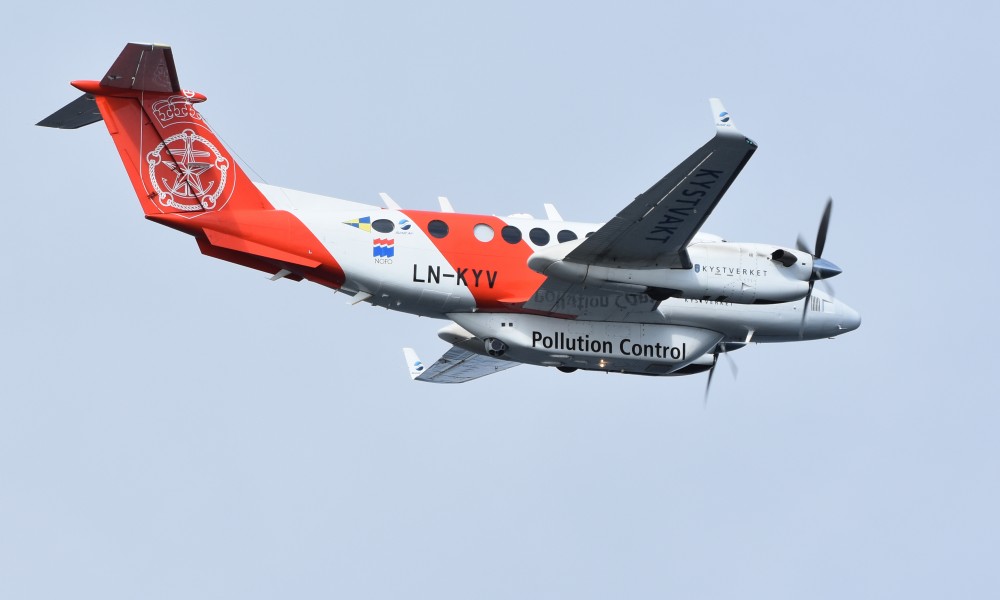 This special equipped aircraft can both search for people at sea and possible oil-spill. Photo: Thomas Nilsen
This special equipped aircraft can both search for people at sea and possible oil-spill. Photo: Thomas Nilsen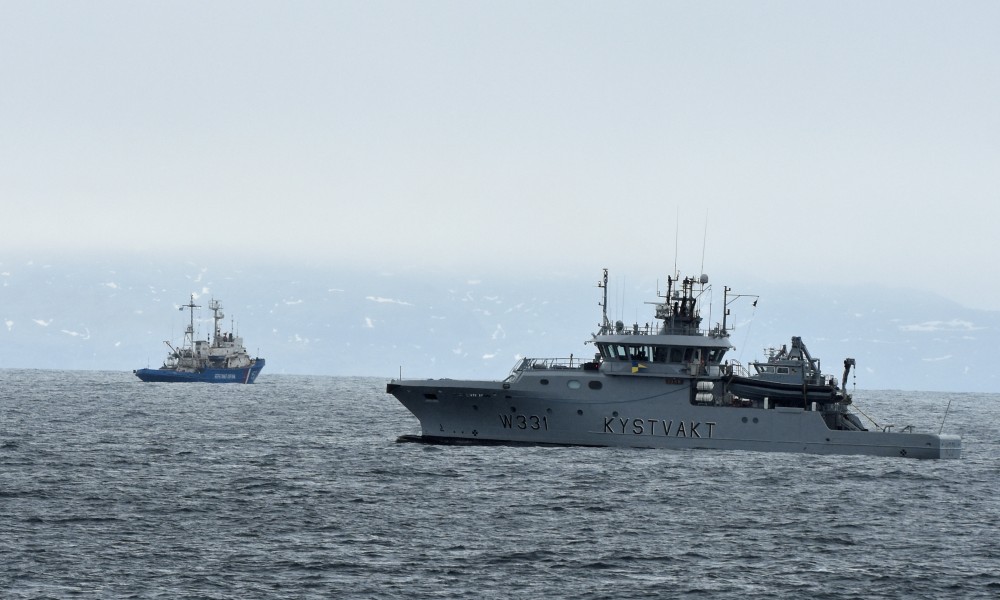 Norwegian Coast Guard vessel "KV Farm" and a Russian FSB Coast Guard vessel. Photo: Thomas Nilsen
Norwegian Coast Guard vessel "KV Farm" and a Russian FSB Coast Guard vessel. Photo: Thomas Nilsen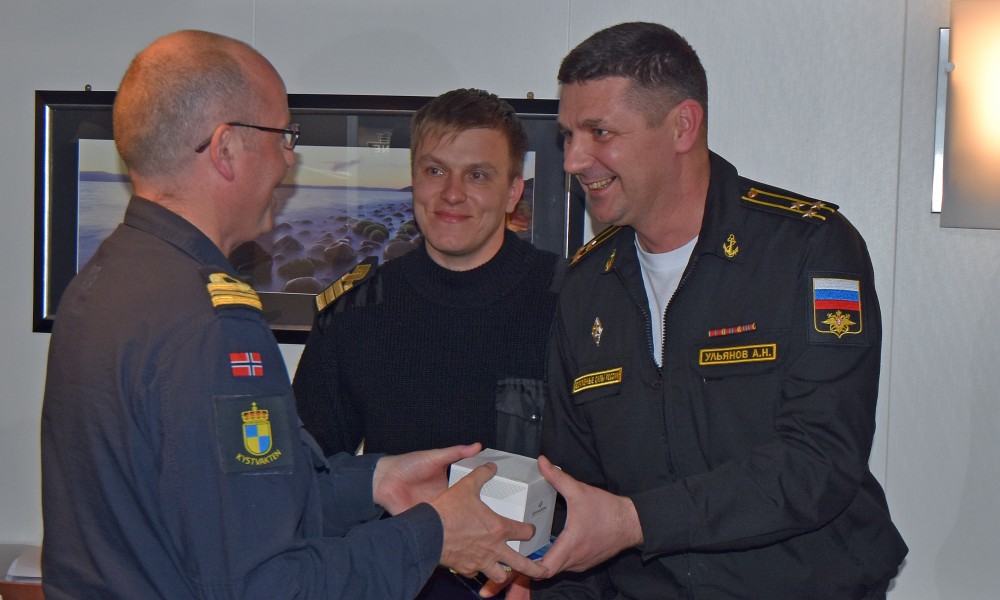 Chief on "KV Barentshav" Frode Urke (left), Coordinator Captain for Murmansk Sea Rescue Centre Igor Makeev and Head of Northern Fleet exercise unit Aleksandr Ulyanov (right). Photo: Thomas Nilsen
Chief on "KV Barentshav" Frode Urke (left), Coordinator Captain for Murmansk Sea Rescue Centre Igor Makeev and Head of Northern Fleet exercise unit Aleksandr Ulyanov (right). Photo: Thomas Nilsen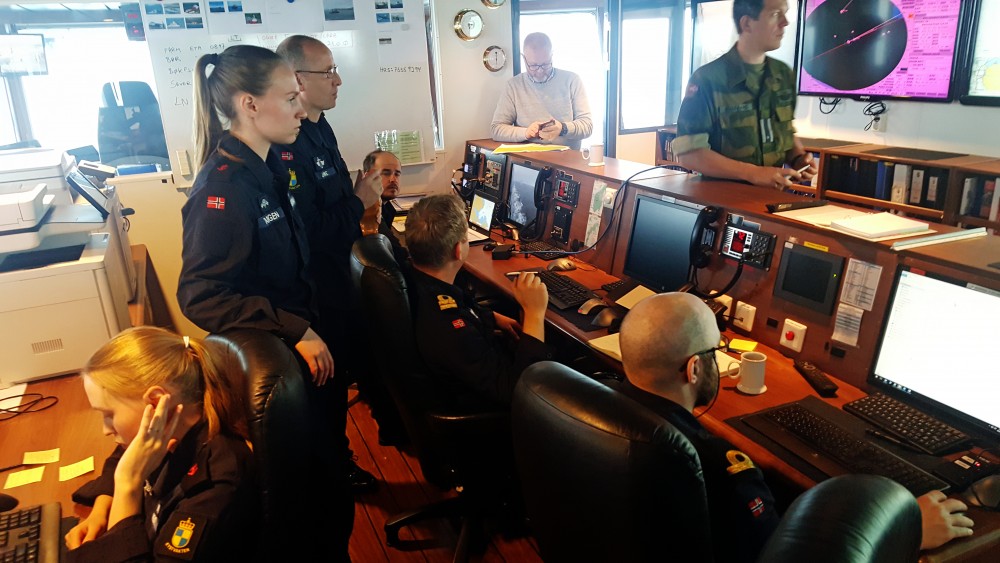 Exercise coordination room onboard Coast Guard vessel "KV Barentshav". Photo: Thomas Nilsen
Exercise coordination room onboard Coast Guard vessel "KV Barentshav". Photo: Thomas Nilsen
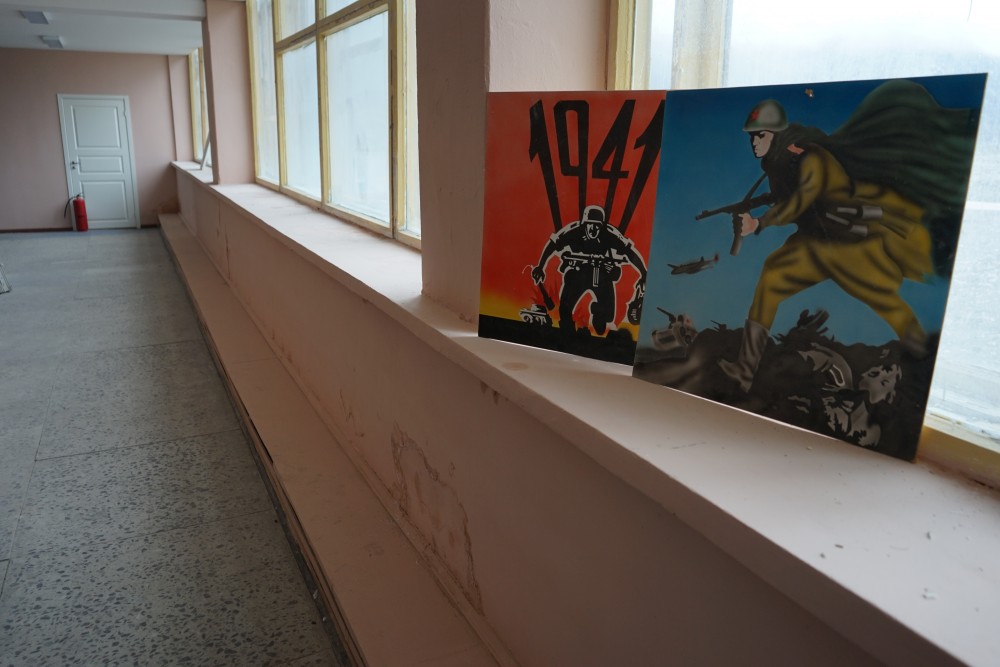 Heros of the Great Patriotic war (World War II). Photo: Thomas Nilsen
Heros of the Great Patriotic war (World War II). Photo: Thomas Nilsen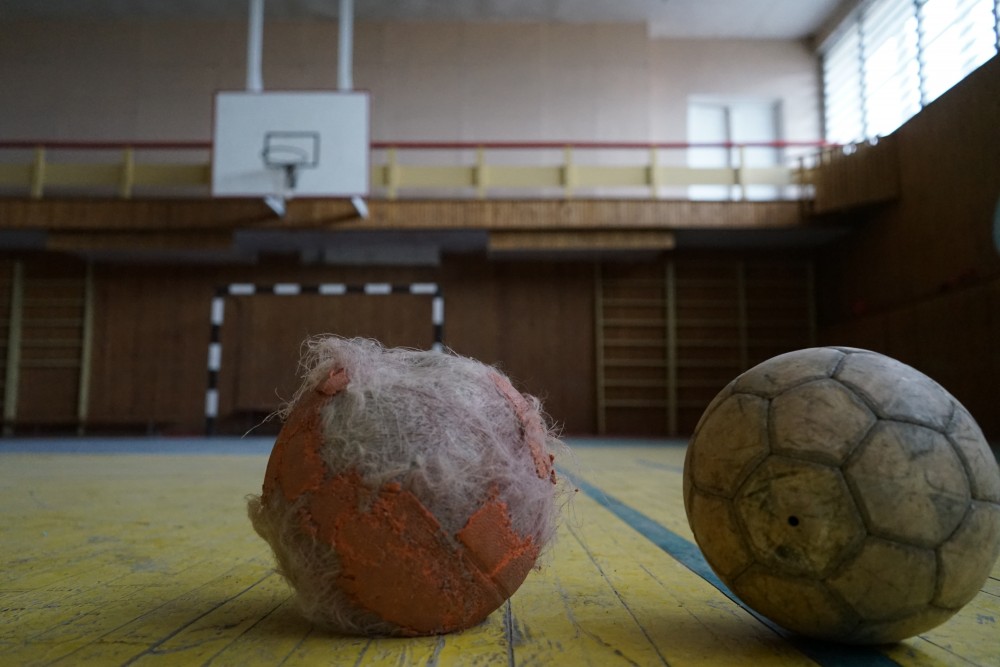 Final match in the sport hall was long ago. Photo: Thomas Nilsen
Final match in the sport hall was long ago. Photo: Thomas Nilsen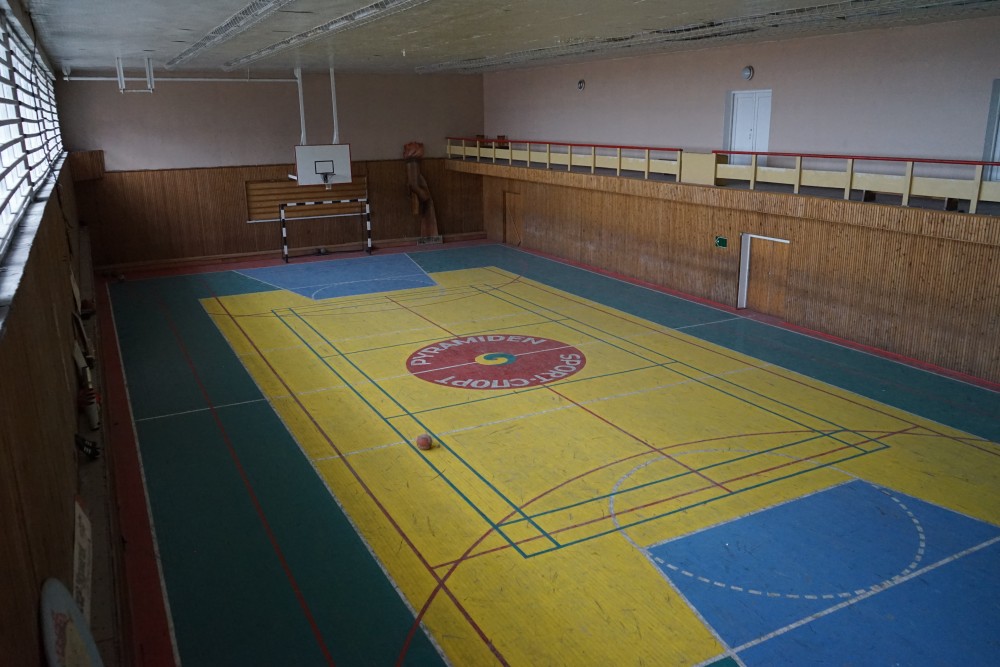 Visitors can today step inside the buildings in Pyramiden. Like this sport hall. Photo: Thomas Nilsen
Visitors can today step inside the buildings in Pyramiden. Like this sport hall. Photo: Thomas Nilsen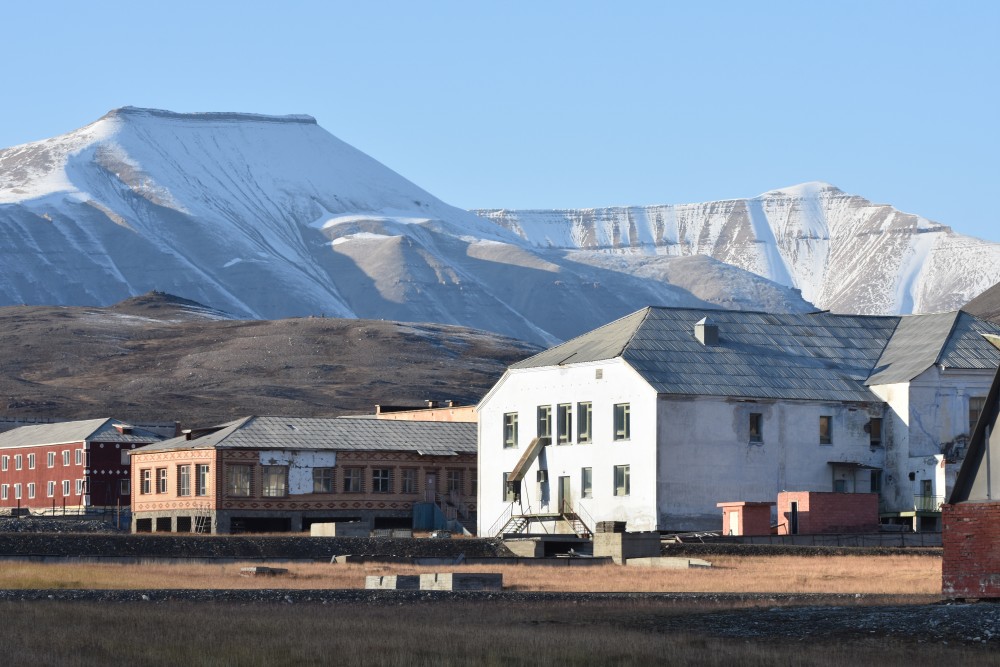 Pyramiden is situated 50 kilometers north of Longyearbyen. Photo: Thomas Nilsen
Pyramiden is situated 50 kilometers north of Longyearbyen. Photo: Thomas Nilsen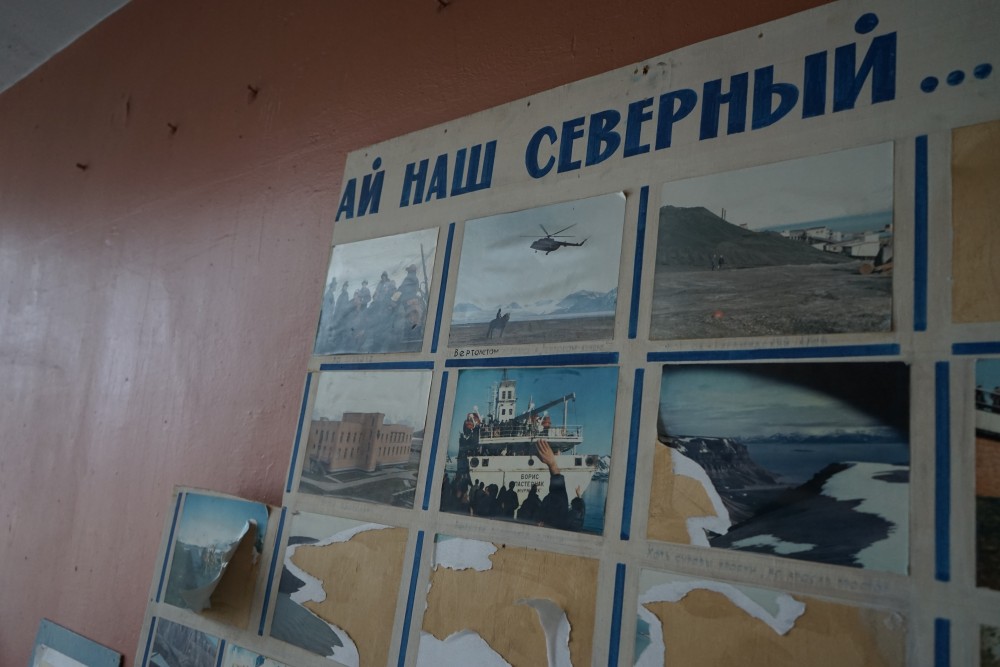 ".... our northern," reads half of the photo-collection poster left on the wall in the palace of culture. Photo: Thomas Nilsen
".... our northern," reads half of the photo-collection poster left on the wall in the palace of culture. Photo: Thomas Nilsen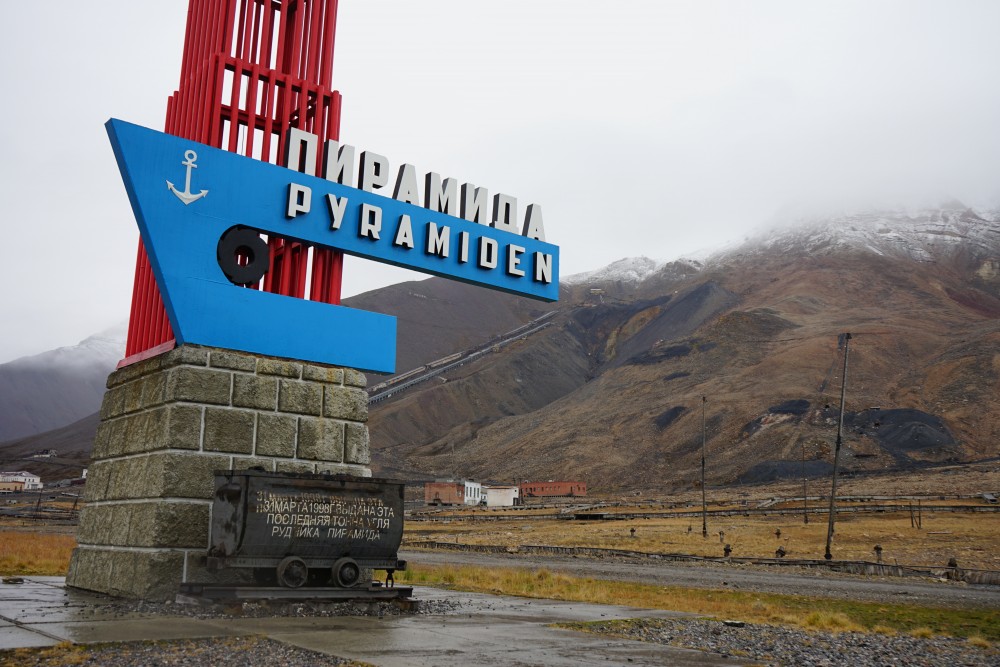 The red tower of this town sign sculpture is made of old water-pipes from the coal mine. Photo: Thomas Nilsen
The red tower of this town sign sculpture is made of old water-pipes from the coal mine. Photo: Thomas Nilsen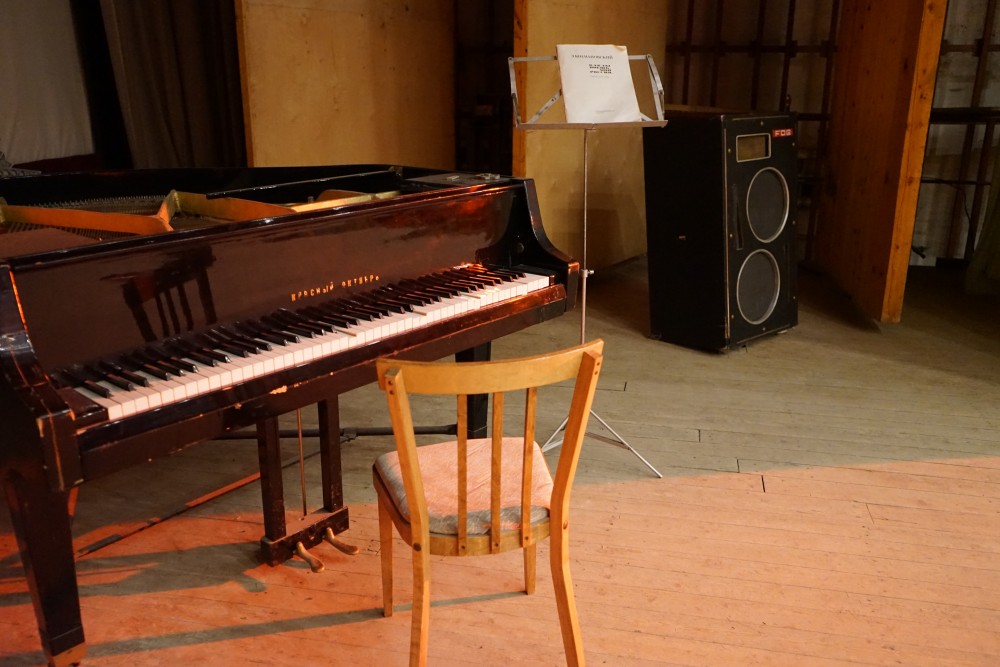 The grand piano is an original "Red October" (Красный октябрь). Photo: Thomas Nilsen
The grand piano is an original "Red October" (Красный октябрь). Photo: Thomas Nilsen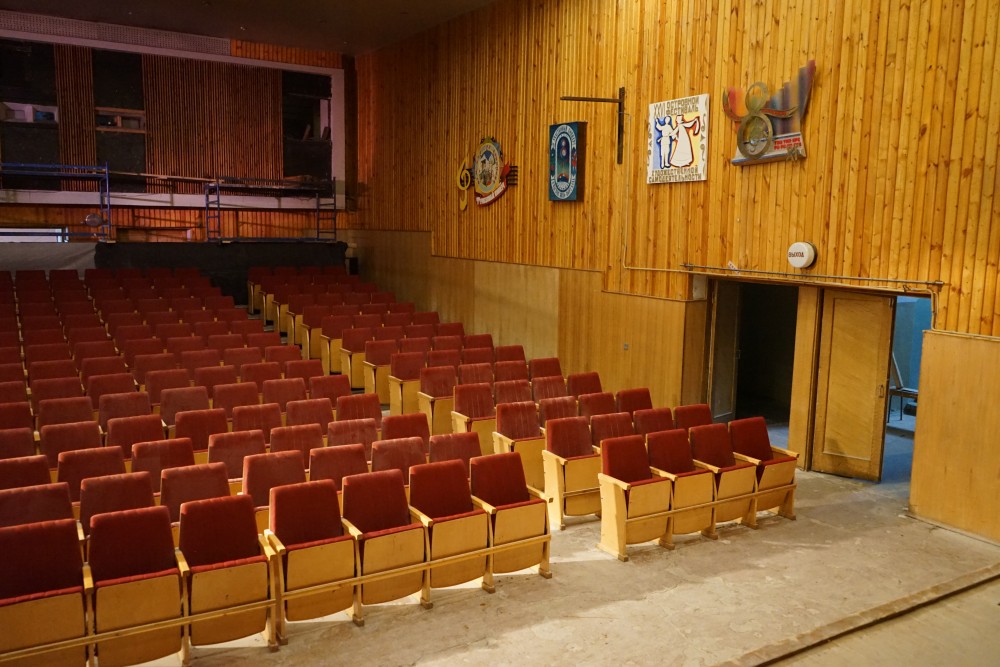 Imagine a Saturday evening when the palace of culture was packed with coal miners listening to classical music. Or maybe there was an Arctic version of Pyotr Tchaikovsky's Swan Lake ballet on stage? Photo: Thomas Nilsen
Imagine a Saturday evening when the palace of culture was packed with coal miners listening to classical music. Or maybe there was an Arctic version of Pyotr Tchaikovsky's Swan Lake ballet on stage? Photo: Thomas Nilsen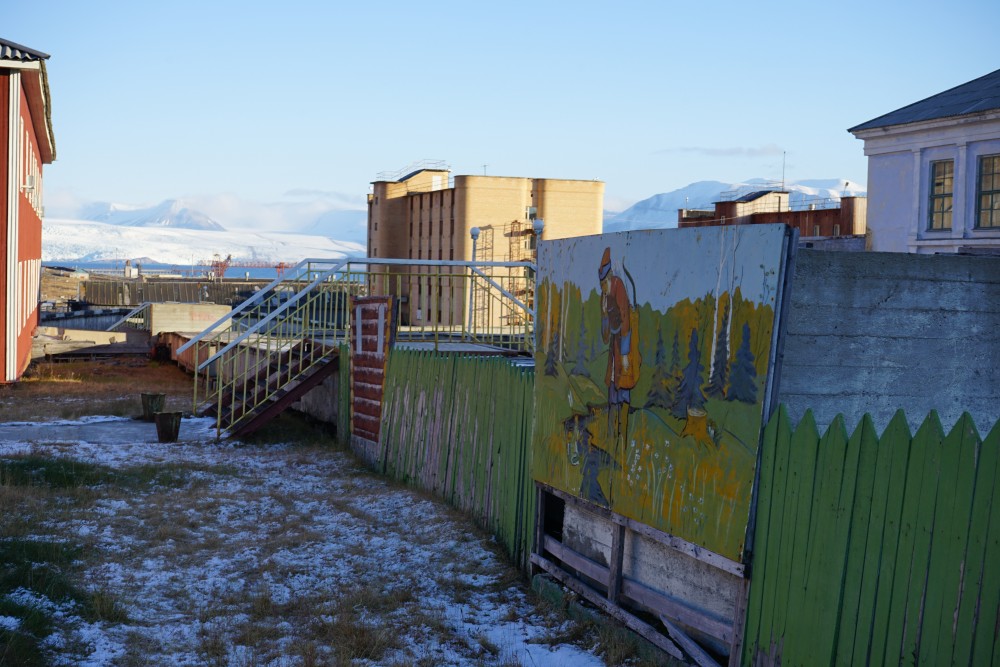 Soviet fairy tale illustration on the wooden fence outside the school. Photo: Thomas Nilsen
Soviet fairy tale illustration on the wooden fence outside the school. Photo: Thomas Nilsen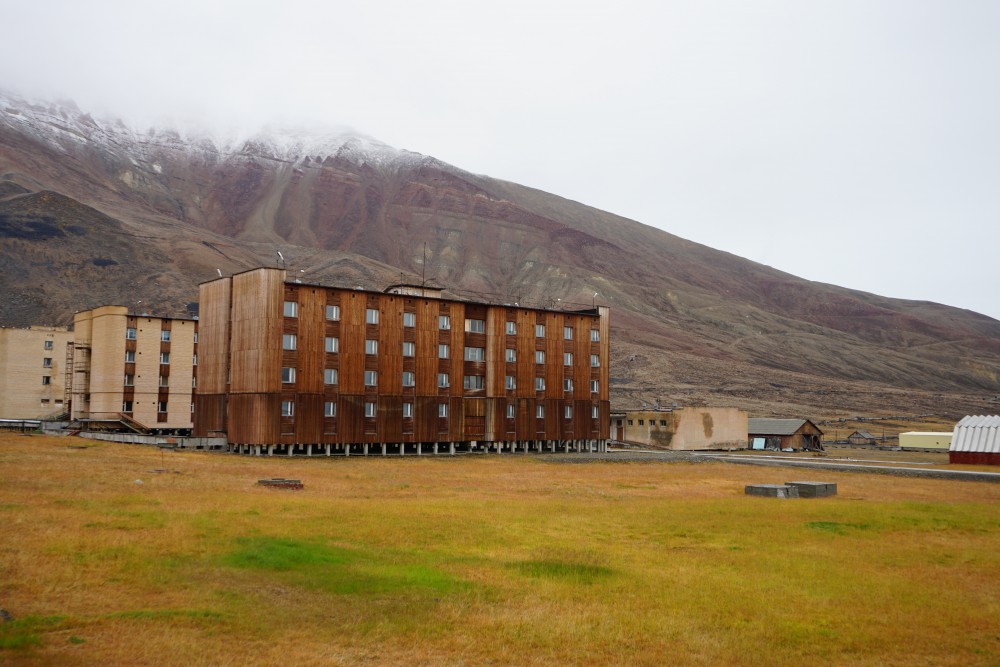 The blocks of flats are well preserved by the Arctic climate. Photo: Thomas Nilsen
The blocks of flats are well preserved by the Arctic climate. Photo: Thomas Nilsen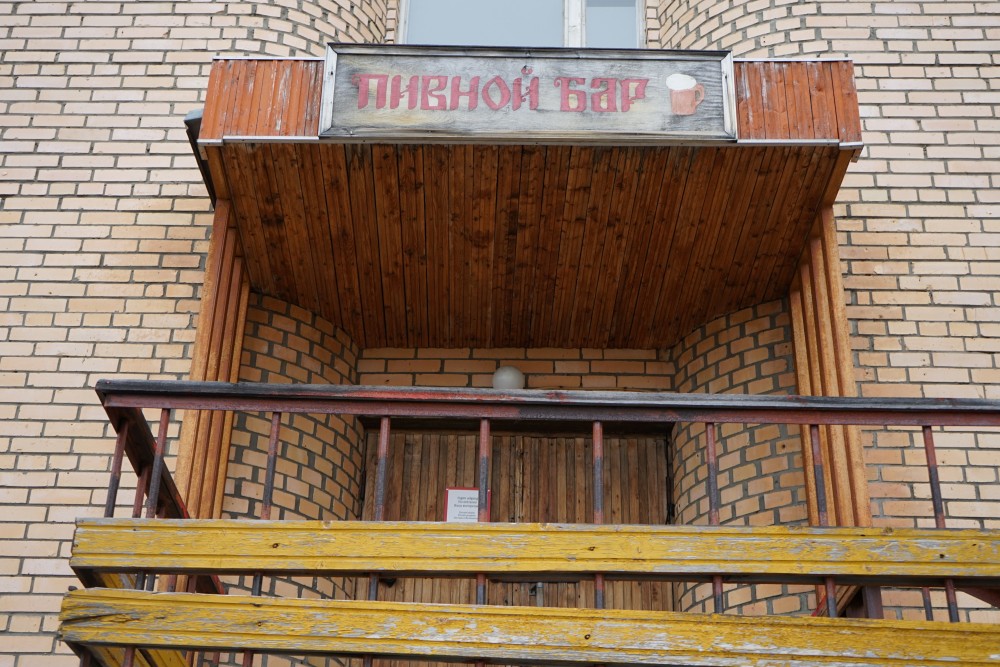 Likely a door to heaven for the coal miners. The sign reads "Beer Bar", but the last pint was emptied 20 years ago. Photo: Thomas Nilsen
Likely a door to heaven for the coal miners. The sign reads "Beer Bar", but the last pint was emptied 20 years ago. Photo: Thomas Nilsen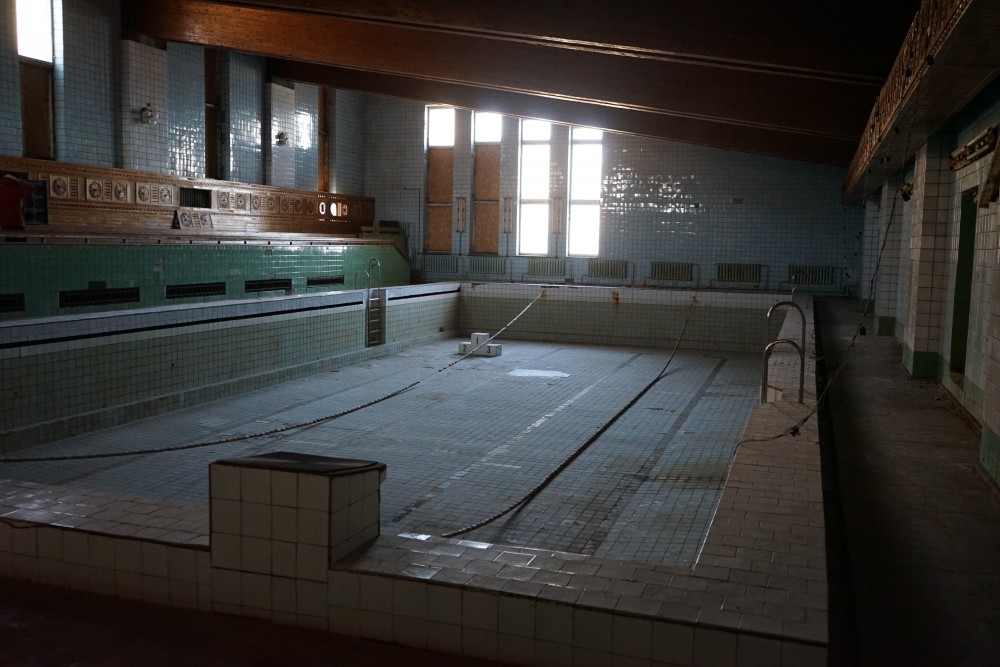 No more water in the world's northernmost swimming pool. Photo: Thomas Nilsen
No more water in the world's northernmost swimming pool. Photo: Thomas Nilsen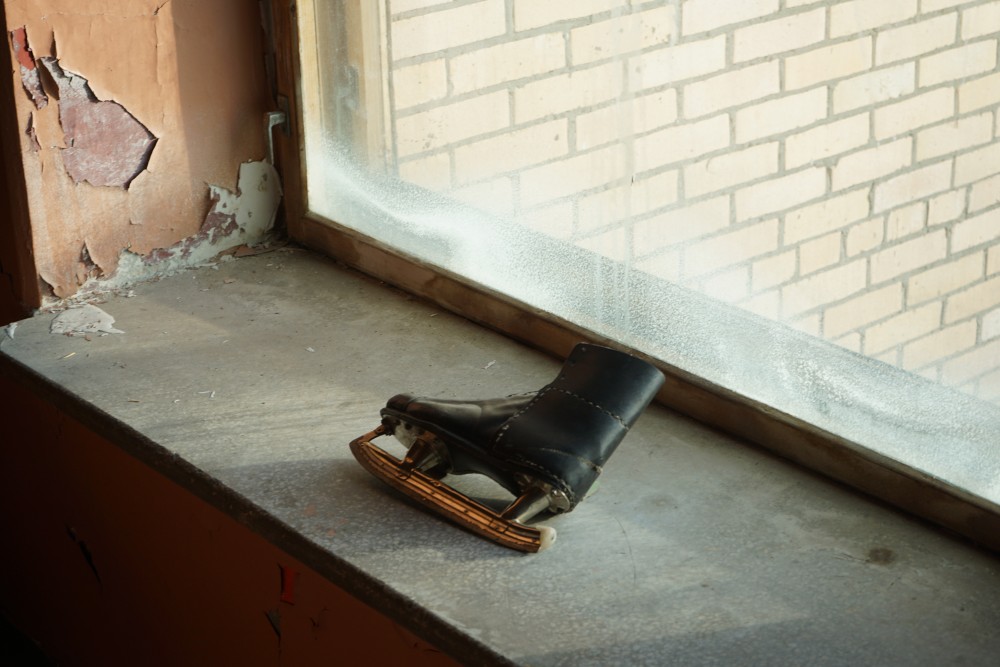 One lonely ice-skate left in the window. Photo: Thomas Nilsen
One lonely ice-skate left in the window. Photo: Thomas Nilsen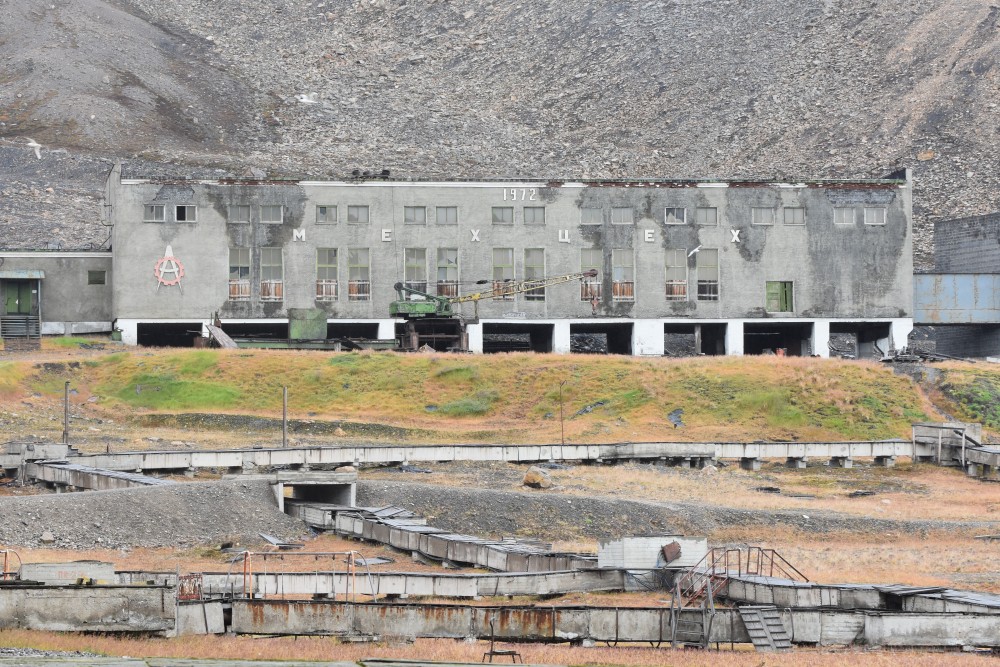 The mechanical workshop for the coal mine. Photo: Thomas Nilsen
The mechanical workshop for the coal mine. Photo: Thomas Nilsen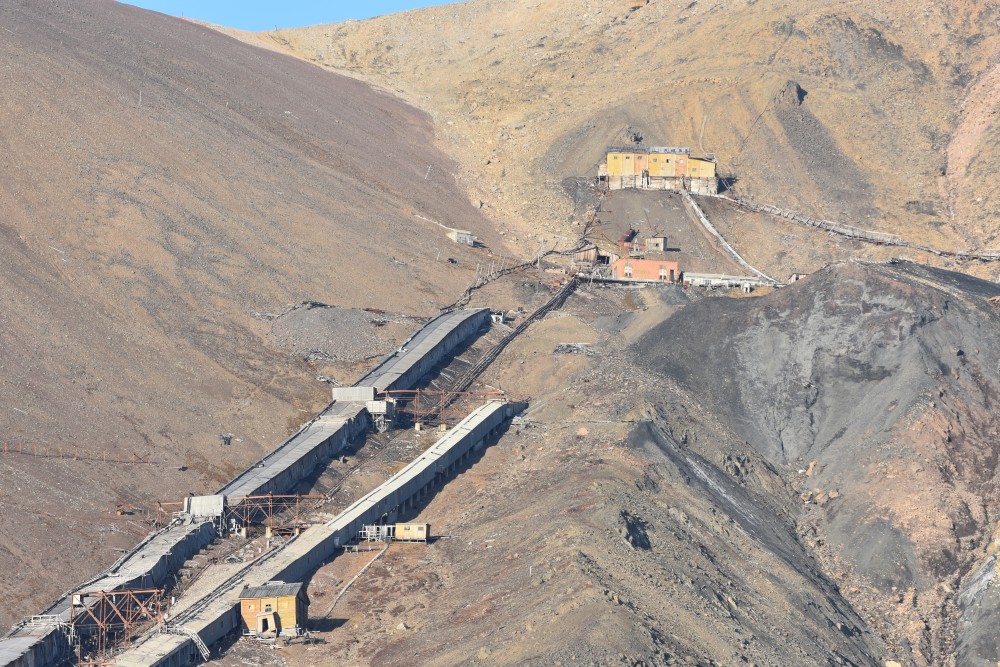 The entrances to the coal mine are up in the mountain above the town. Photo: Thomas Nilsen
The entrances to the coal mine are up in the mountain above the town. Photo: Thomas Nilsen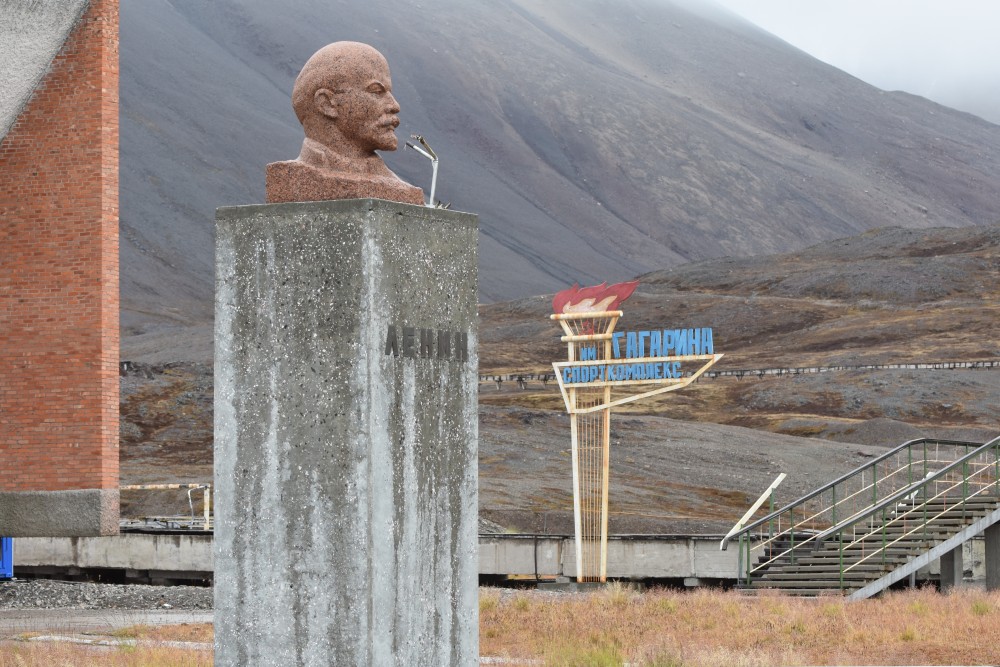 ... and yes, it is also the world's northernmost bust of Lenin. Photo: Thomas Nilsen
... and yes, it is also the world's northernmost bust of Lenin. Photo: Thomas Nilsen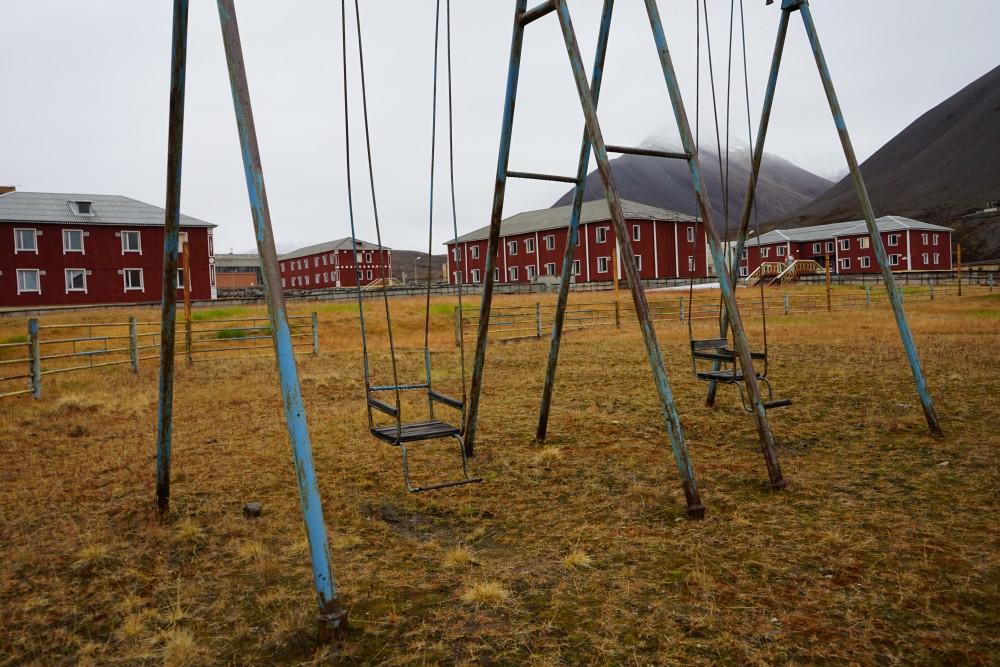 Yes, lots of children lived in Pyramiden, a well functioning family society. Photo: Thomas Nilsen
Yes, lots of children lived in Pyramiden, a well functioning family society. Photo: Thomas Nilsen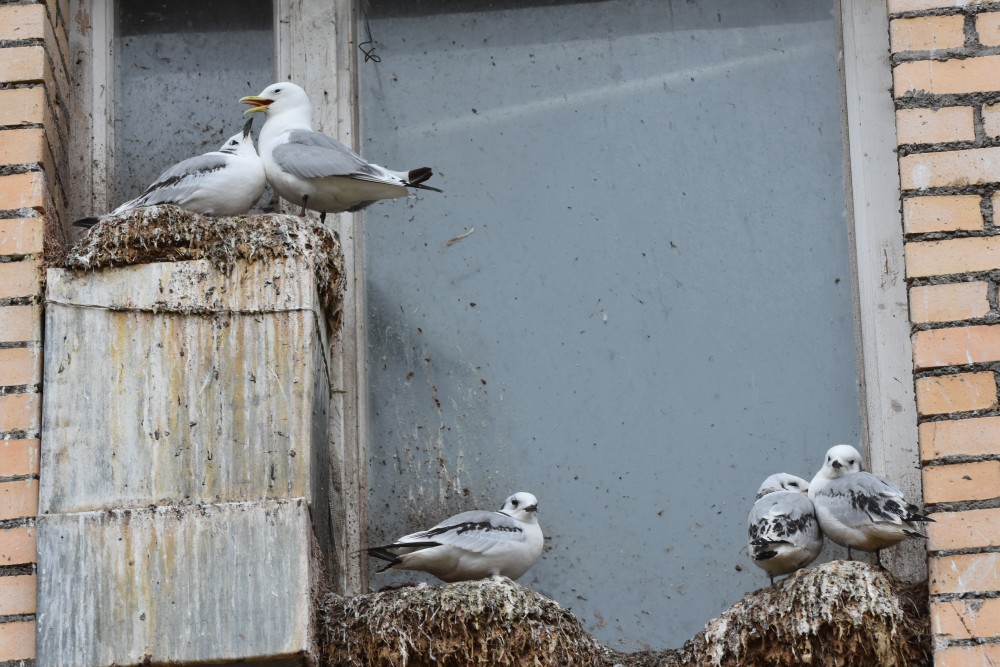 Where people once lived, birds have now taken over. Photo: Thomas Nilsen
Where people once lived, birds have now taken over. Photo: Thomas Nilsen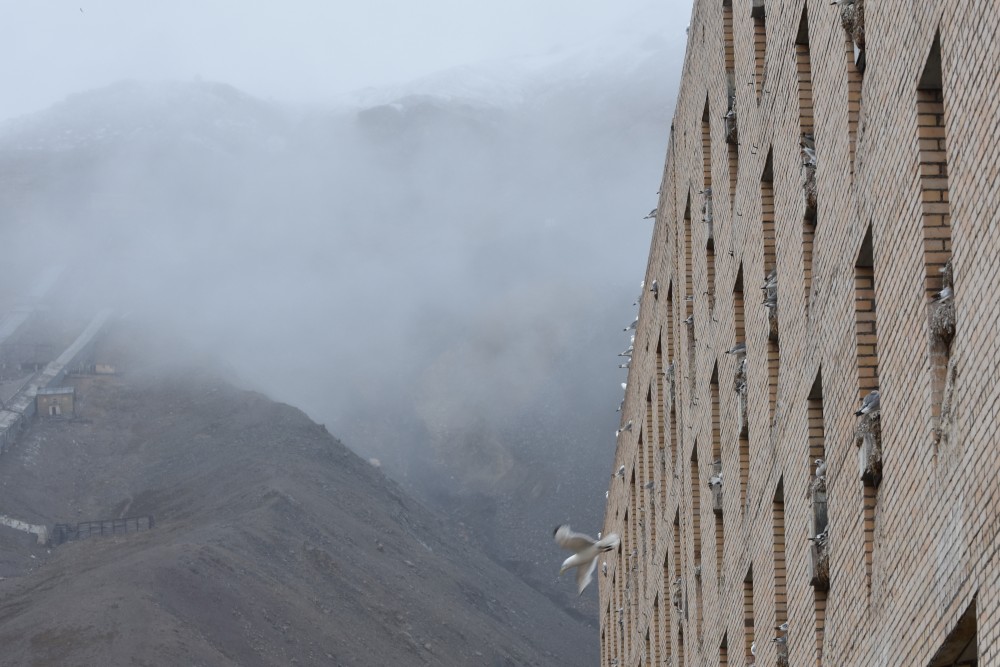 Svalbard is famous for its bird-watching sites. Although this "bird-cliff" is somehow special. Photo: Thomas Nilsen
Svalbard is famous for its bird-watching sites. Although this "bird-cliff" is somehow special. Photo: Thomas Nilsen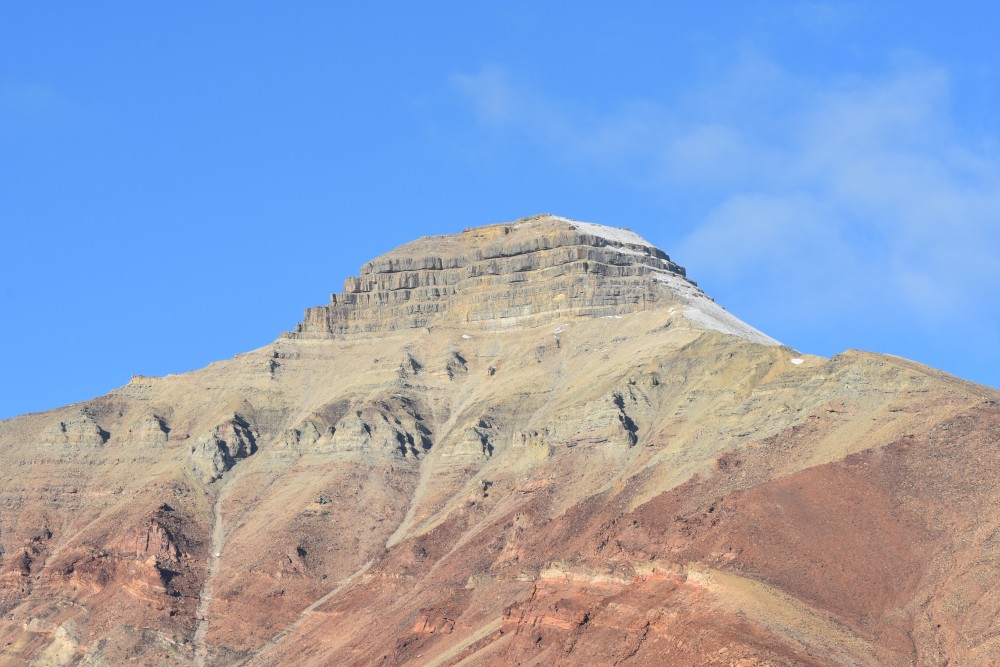 Why the town was named Pyramiden? Well, take a look at the nearest mountain. Photo: Thomas Nilsen
Why the town was named Pyramiden? Well, take a look at the nearest mountain. Photo: Thomas Nilsen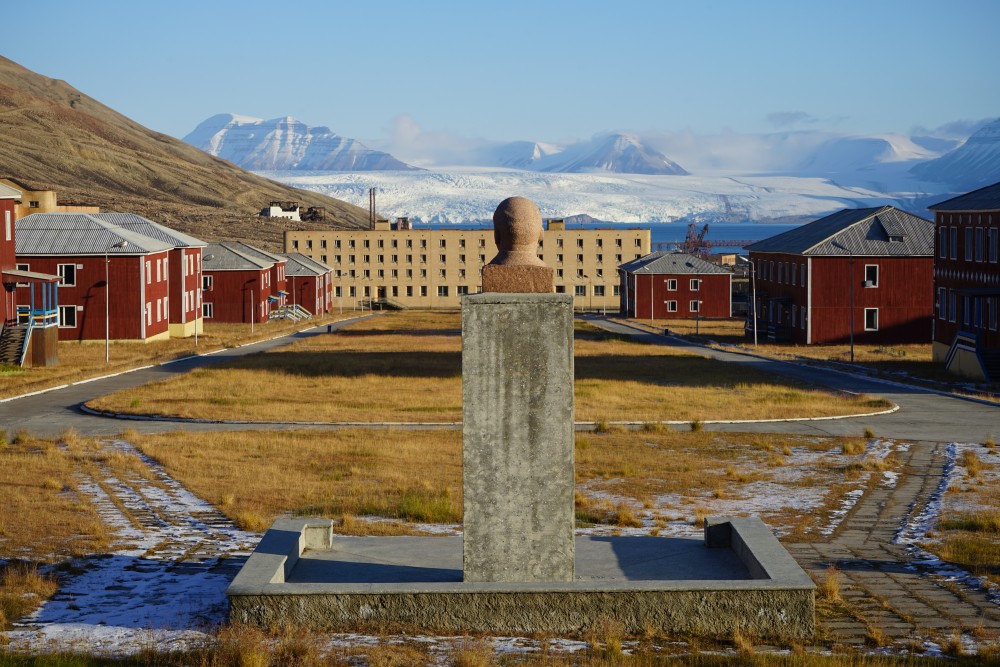 Comrade Lenin has a great panorama view over the town with the Nordenskiold glacier in the background. The town is still state-owned and maintained by the Russian mining company Arktikugol Trust. Photo: Thomas Nilsen
Comrade Lenin has a great panorama view over the town with the Nordenskiold glacier in the background. The town is still state-owned and maintained by the Russian mining company Arktikugol Trust. Photo: Thomas Nilsen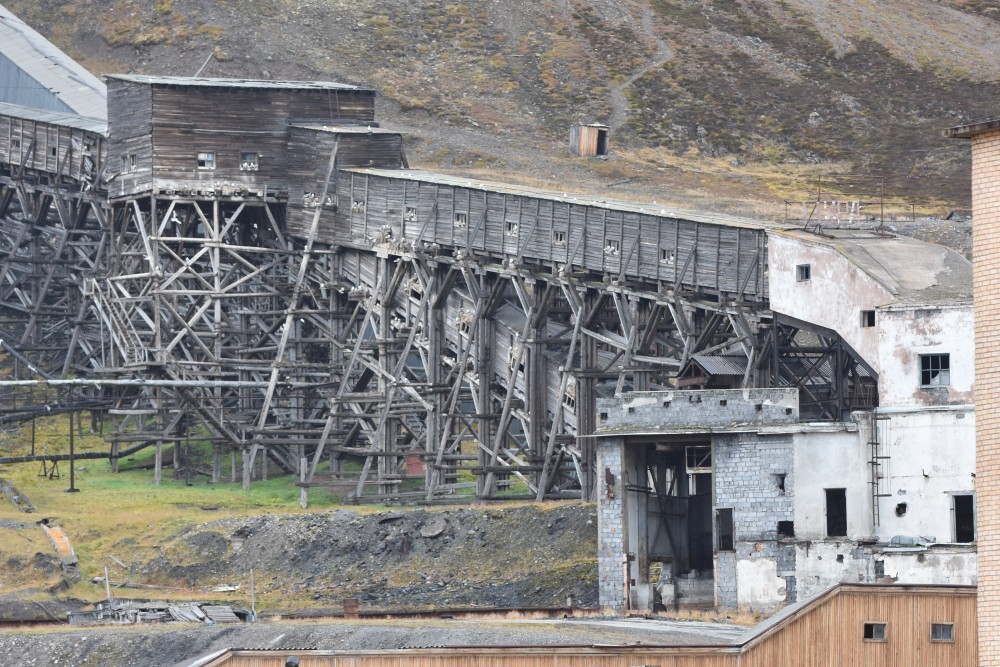 From the shafts, the coal was transported to port via this structure. Photo: Thomas Nilsen
From the shafts, the coal was transported to port via this structure. Photo: Thomas Nilsen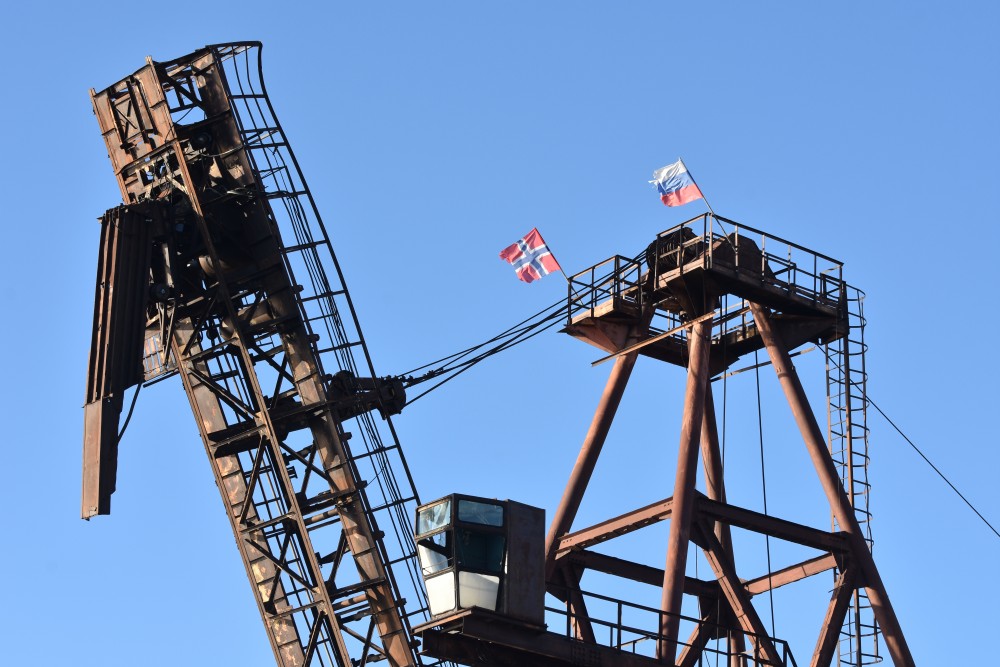 Coal loading crane in the port of Pyramiden. Operated by the Russians, but Svalbard is Norwegian land. Photo: Thomas Nilsen
Coal loading crane in the port of Pyramiden. Operated by the Russians, but Svalbard is Norwegian land. Photo: Thomas Nilsen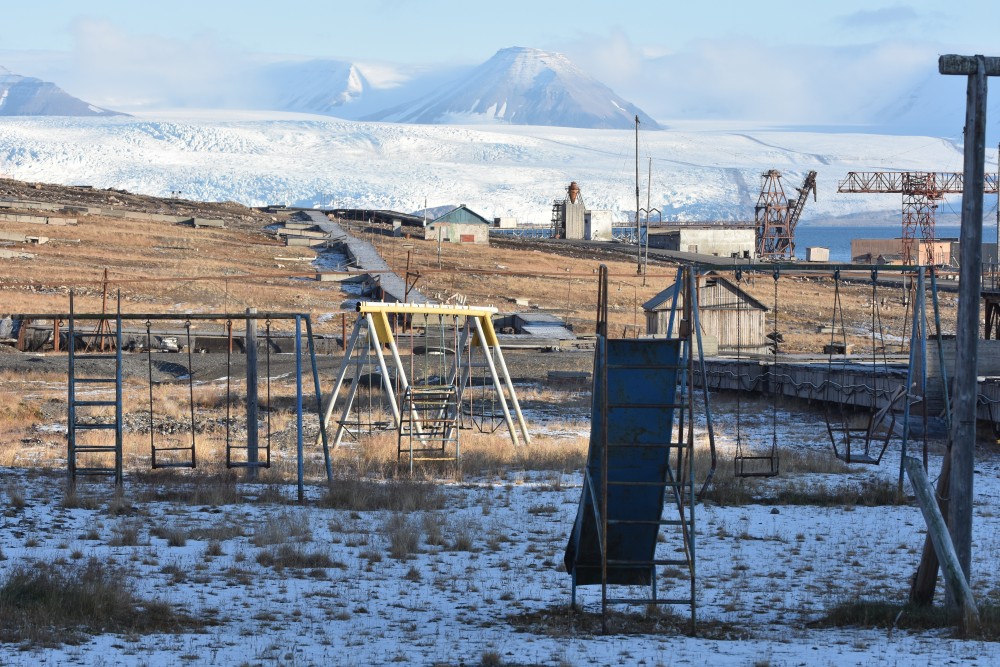 Nice playground under the Arctic sun, but image how it was to be a child here during polar night. Photo: Thomas Nilsen
Nice playground under the Arctic sun, but image how it was to be a child here during polar night. Photo: Thomas Nilsen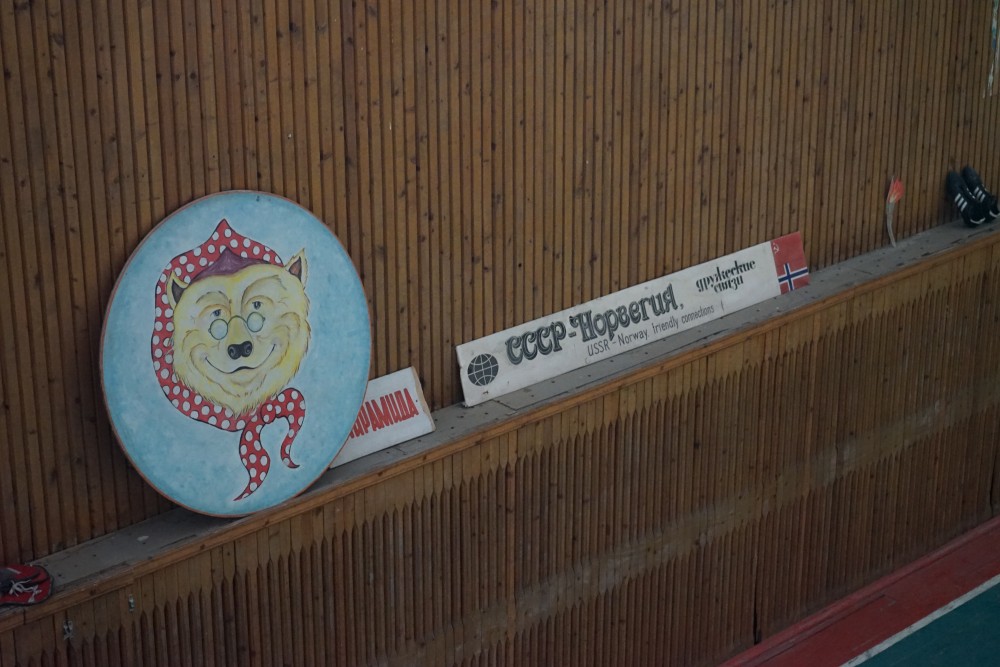 USSR-Norwegian friendly connections. Photo: Thomas Nilsen
USSR-Norwegian friendly connections. Photo: Thomas Nilsen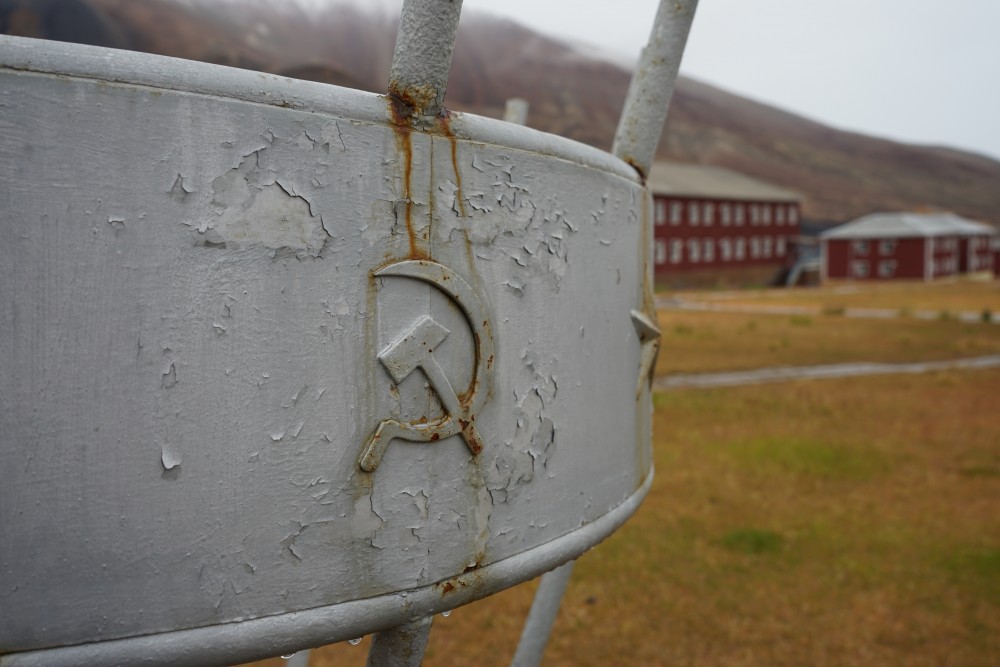 Hammer and Sickle, the symbol of the Soviet Union. Photo: Thomas Nilsen
Hammer and Sickle, the symbol of the Soviet Union. Photo: Thomas Nilsen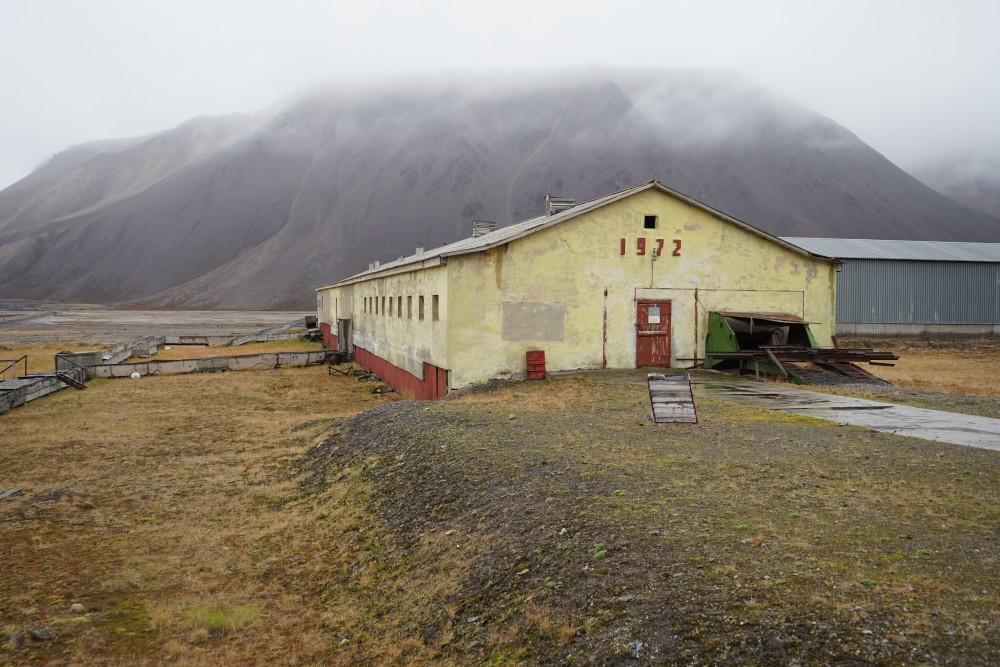 Pyramiden even had its own cowshed. Nothing's like a fresh glas of milk after a long night in the coal mine at 79 degrees north. Photo: Thomas Nilsen
Pyramiden even had its own cowshed. Nothing's like a fresh glas of milk after a long night in the coal mine at 79 degrees north. Photo: Thomas Nilsen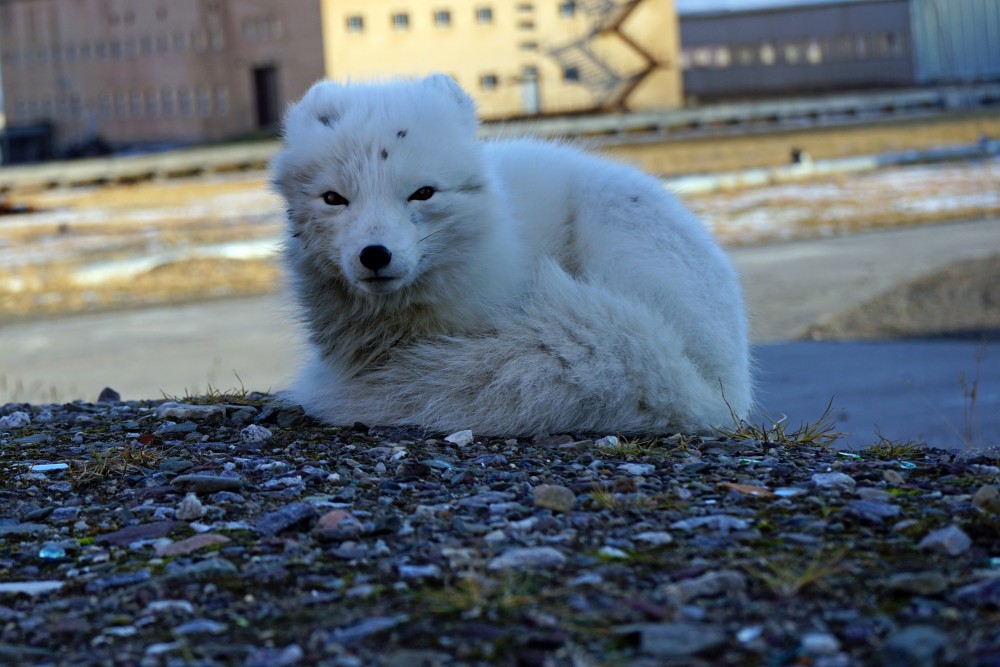 With a bit of luck you may meet an Arctic fox in between the abandoned buildings in Pyramiden. A bit curious, and not too afraid of humans if you keep a distance. Photo: Thomas Nilsen
With a bit of luck you may meet an Arctic fox in between the abandoned buildings in Pyramiden. A bit curious, and not too afraid of humans if you keep a distance. Photo: Thomas Nilsen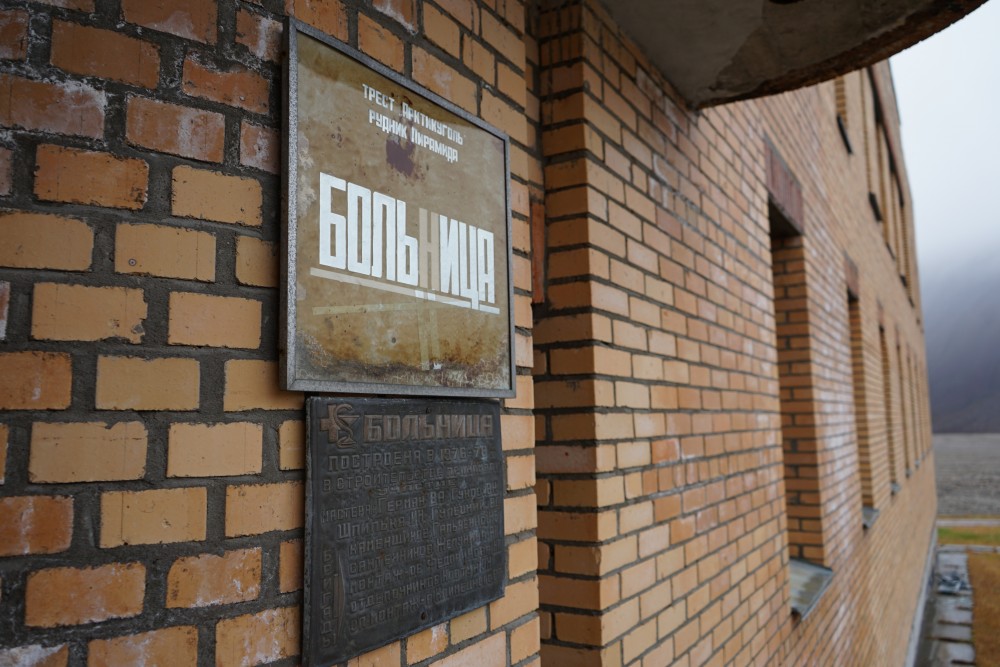 The hospital. Photo: Thomas Nilsen
The hospital. Photo: Thomas Nilsen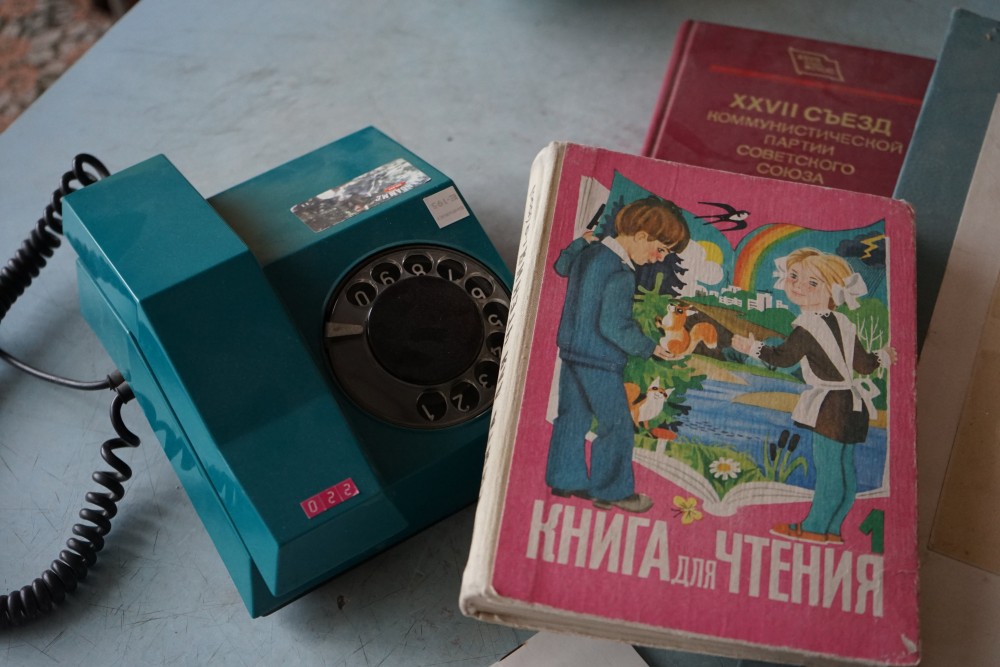 Children's reading book over a dusty version of the transcripts from the 27th Congress of the Communist Party of the Soviet Union (1986), the first congress presided over by Mikhail Gorbachev as General Secretary of the Central Committee of the CPSU. Photo: Thomas Nilsen
Children's reading book over a dusty version of the transcripts from the 27th Congress of the Communist Party of the Soviet Union (1986), the first congress presided over by Mikhail Gorbachev as General Secretary of the Central Committee of the CPSU. Photo: Thomas Nilsen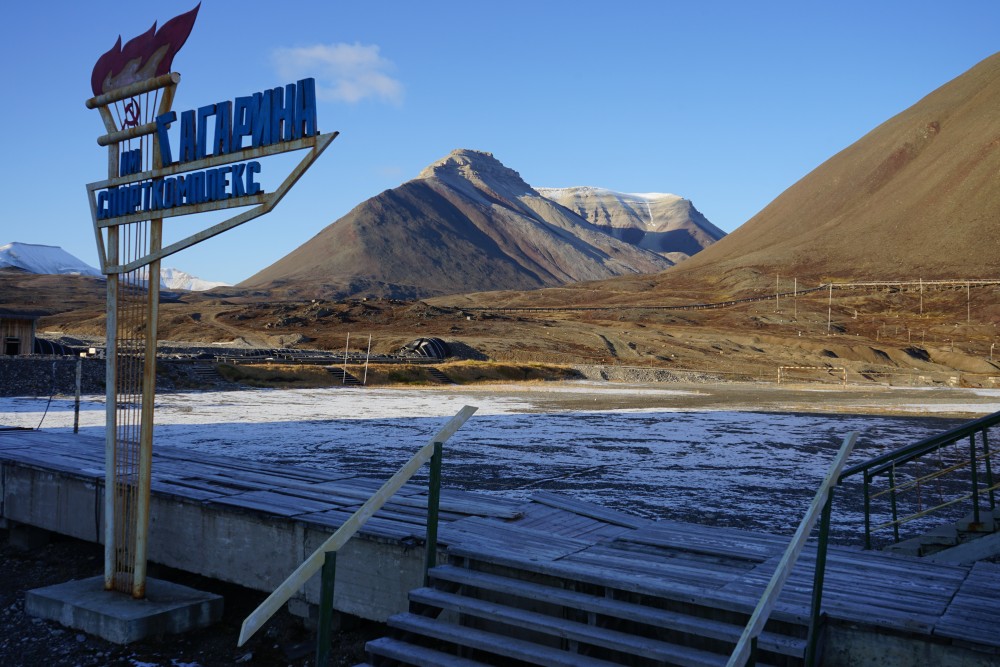 Outdoor sport stadion named after Yury Gagarin, the first man in space. Football field in summer, ice-skating rink during winter. Photo: Thomas Nilsen
Outdoor sport stadion named after Yury Gagarin, the first man in space. Football field in summer, ice-skating rink during winter. Photo: Thomas Nilsen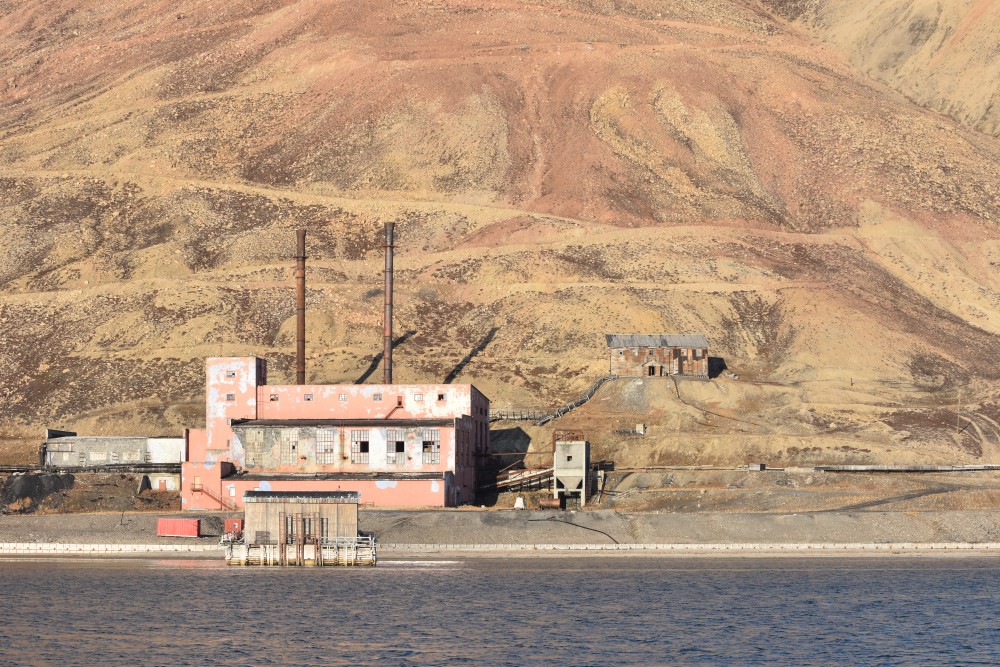 In times of climate changes, Pyramiden coal power plant provided both heat and electricity. Photo: Thomas Nilsen
In times of climate changes, Pyramiden coal power plant provided both heat and electricity. Photo: Thomas Nilsen Pyramiden was abandoned in 1998, but the houses are still in rather good shape and are maintained by Arktikugol Trust (Арктикуголь means Arctic coal). Photo: Thomas Nilsen
Pyramiden was abandoned in 1998, but the houses are still in rather good shape and are maintained by Arktikugol Trust (Арктикуголь means Arctic coal). Photo: Thomas Nilsen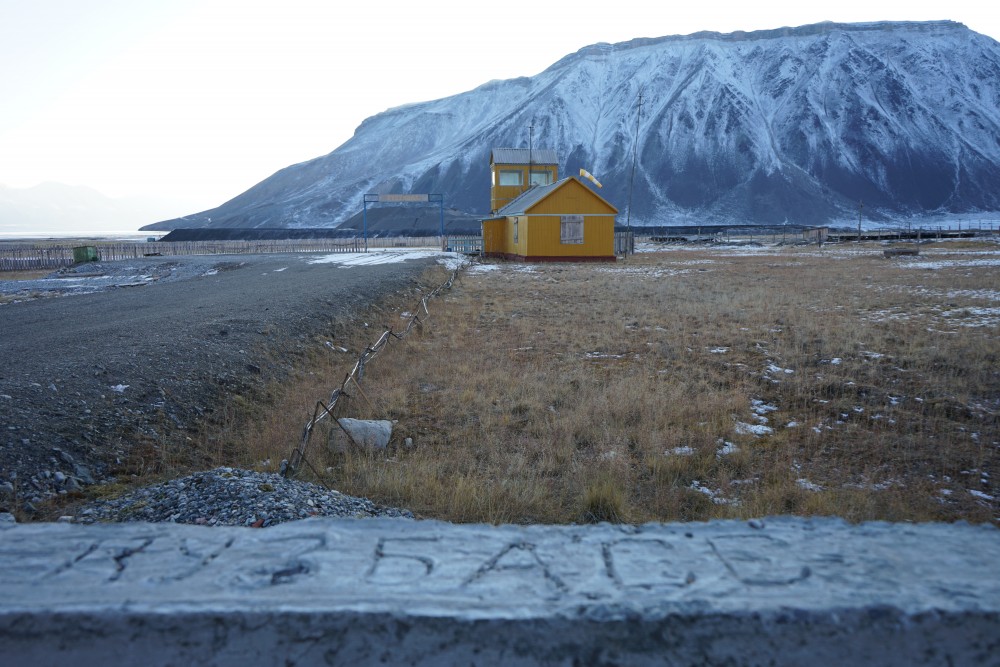 "Kuzbass" is another important coal region for Russia. Pyramiden heliport in the background. Photo: Thomas Nilsen
"Kuzbass" is another important coal region for Russia. Pyramiden heliport in the background. Photo: Thomas Nilsen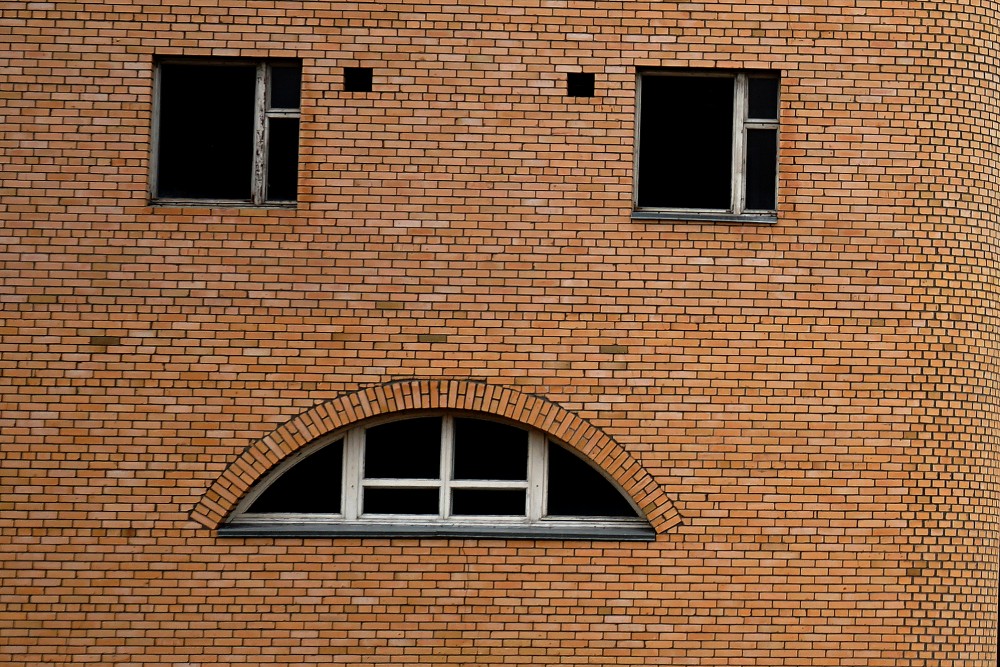 Seems like this building is sad not to house people anymore. Photo: Thomas Nilsen
Seems like this building is sad not to house people anymore. Photo: Thomas Nilsen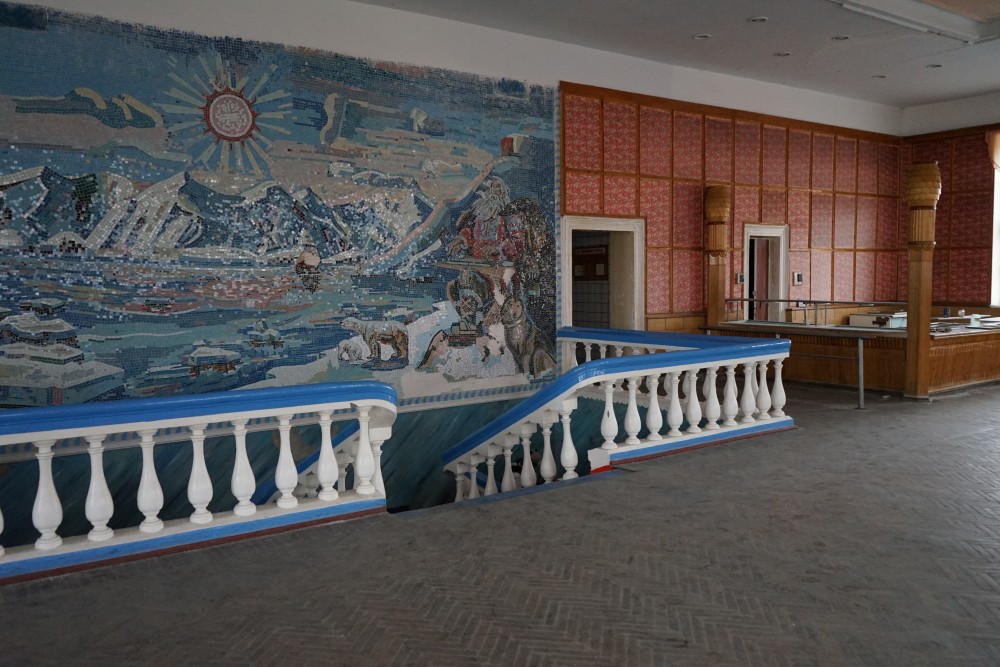 Soviet-style Arctic art made of mosaic on the wall in the cantina. Photo: Thomas Nilsen
Soviet-style Arctic art made of mosaic on the wall in the cantina. Photo: Thomas Nilsen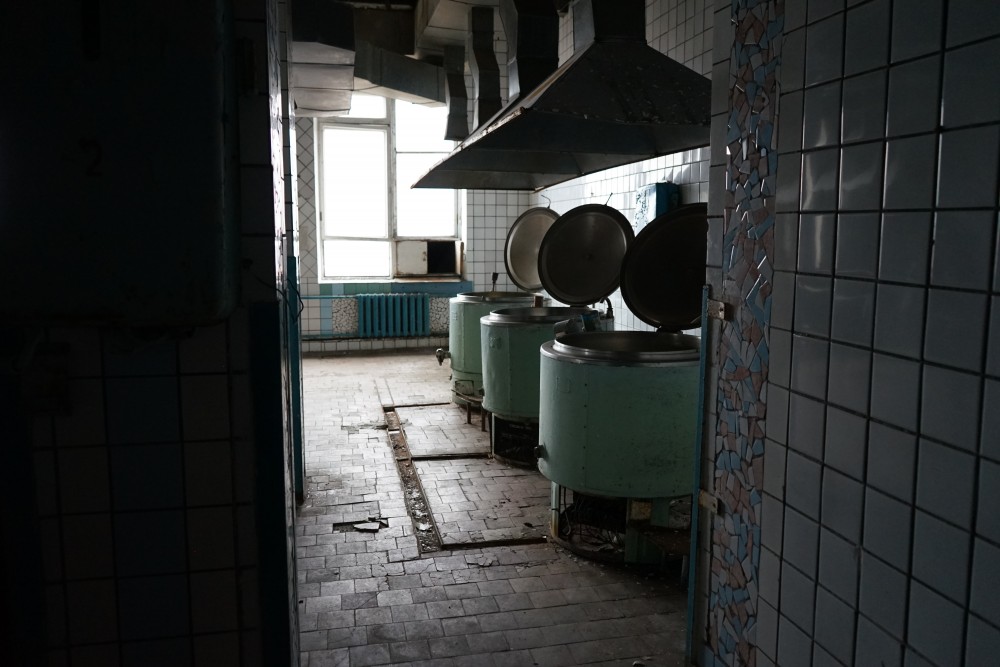 Really large cooking pots in the cantina. For the coal miners. Photo: Thomas Nilsen
Really large cooking pots in the cantina. For the coal miners. Photo: Thomas Nilsen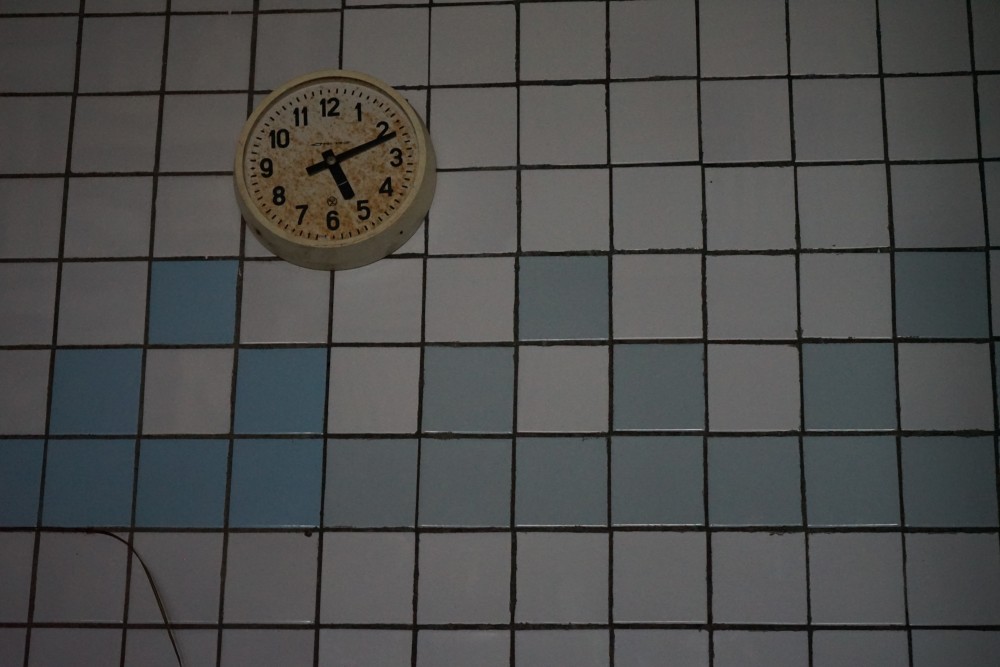 Twelve-past-we-left-the-town. Photo: Thomas Nilsen
Twelve-past-we-left-the-town. Photo: Thomas Nilsen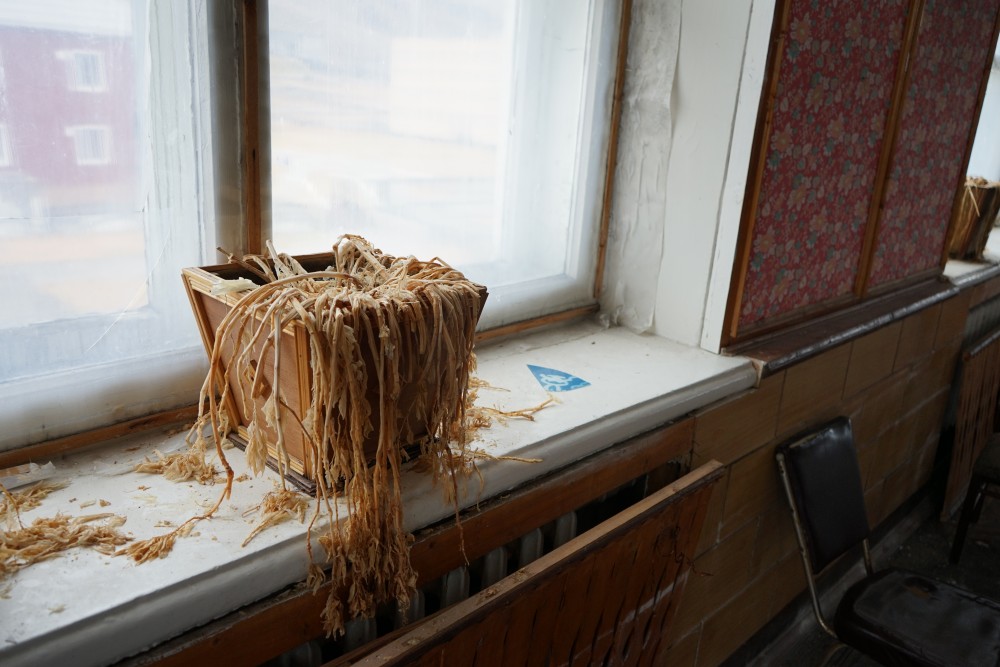 Some plants are thirstier than others. For this one, it is too late. Photo: Thomas Nilsen
Some plants are thirstier than others. For this one, it is too late. Photo: Thomas Nilsen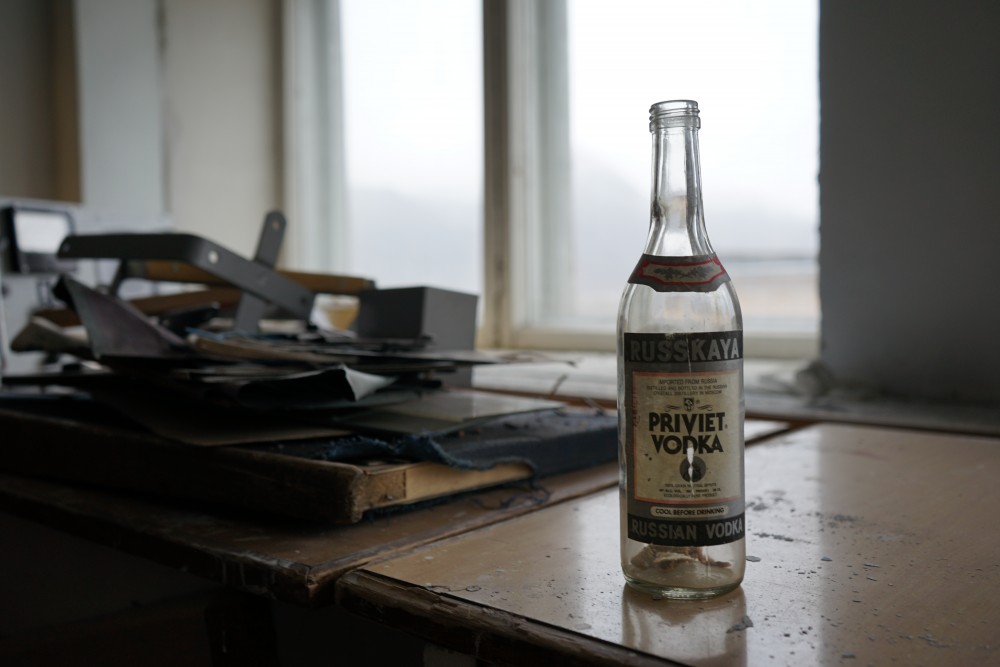 The party is over. For good. Priviet (hello) vodka. Photo: Thomas Nilsen
The party is over. For good. Priviet (hello) vodka. Photo: Thomas Nilsen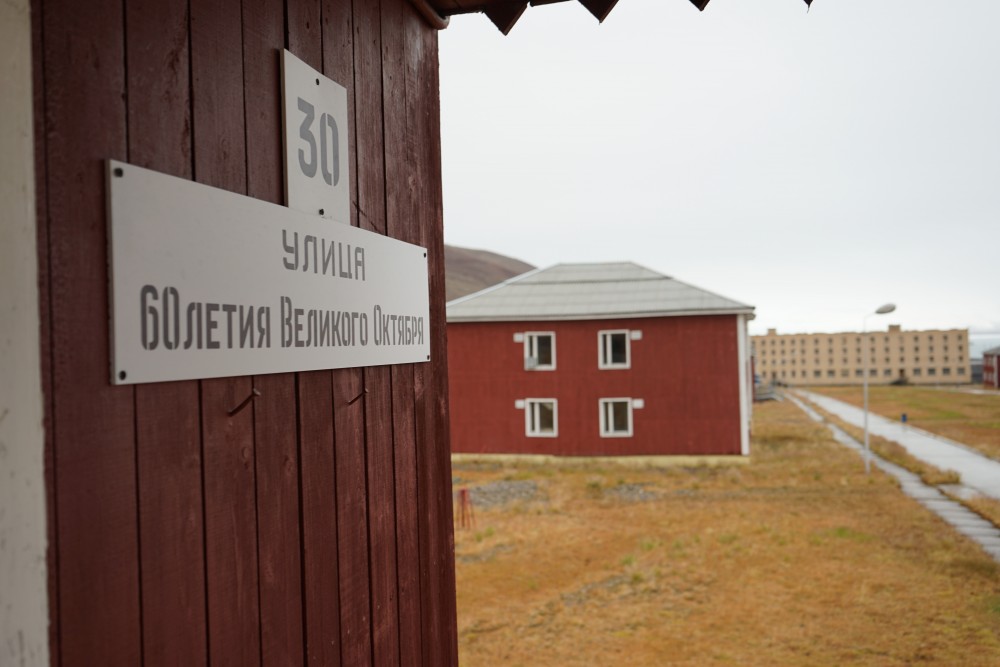 The main (and only) avenue in Pyramiden is named after the 60th anniversary of the October revolution. Photo: Thomas Nilsen
The main (and only) avenue in Pyramiden is named after the 60th anniversary of the October revolution. Photo: Thomas Nilsen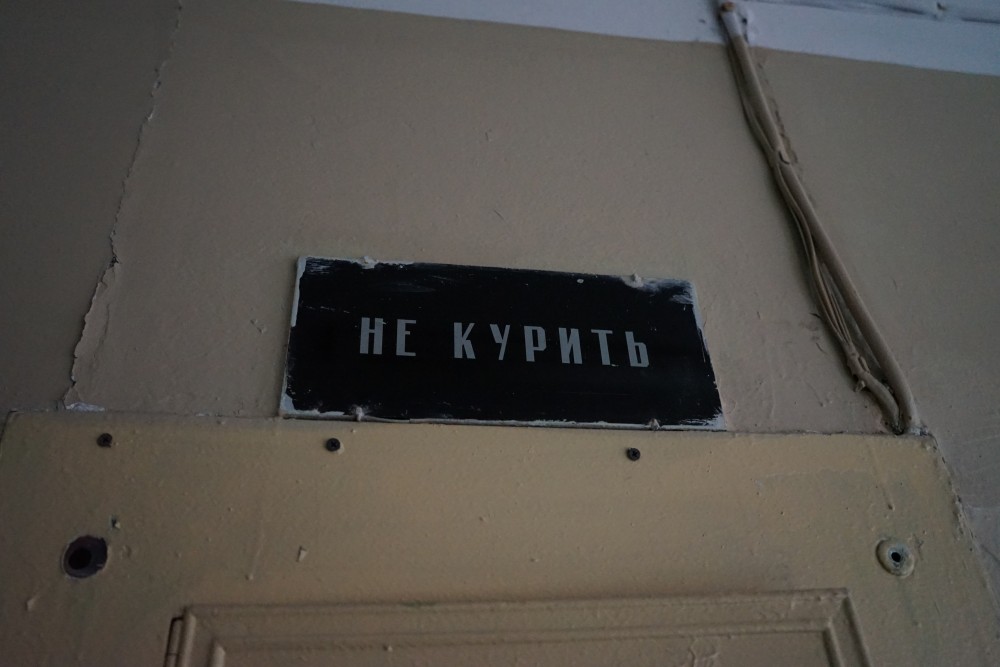 "No smoking". Photo: Thomas Nilsen
"No smoking". Photo: Thomas Nilsen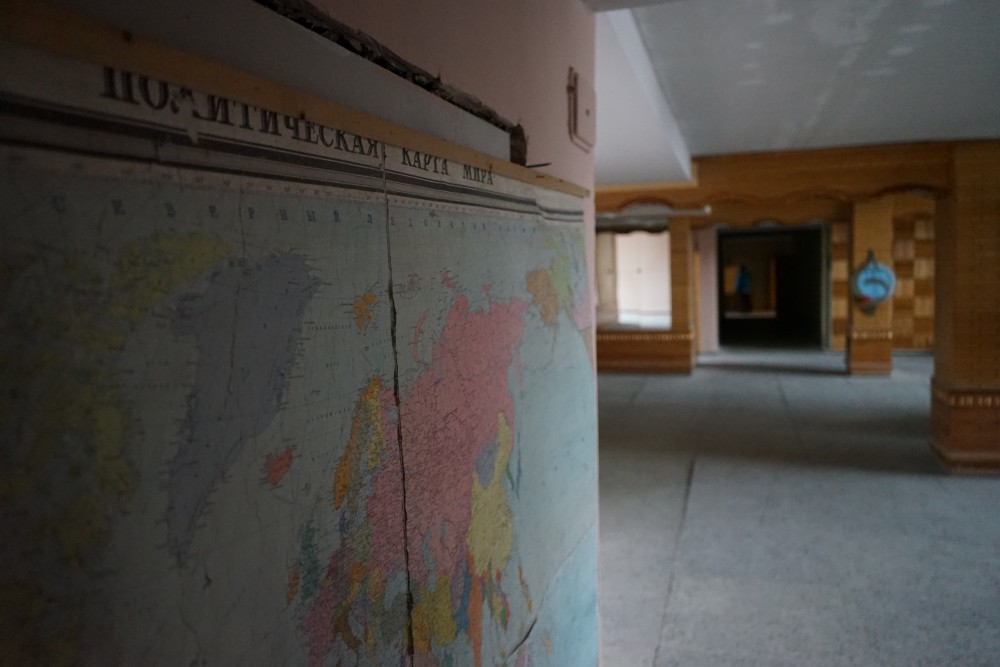 Map of the world on top of the world. Photo: Thomas Nilsen
Map of the world on top of the world. Photo: Thomas Nilsen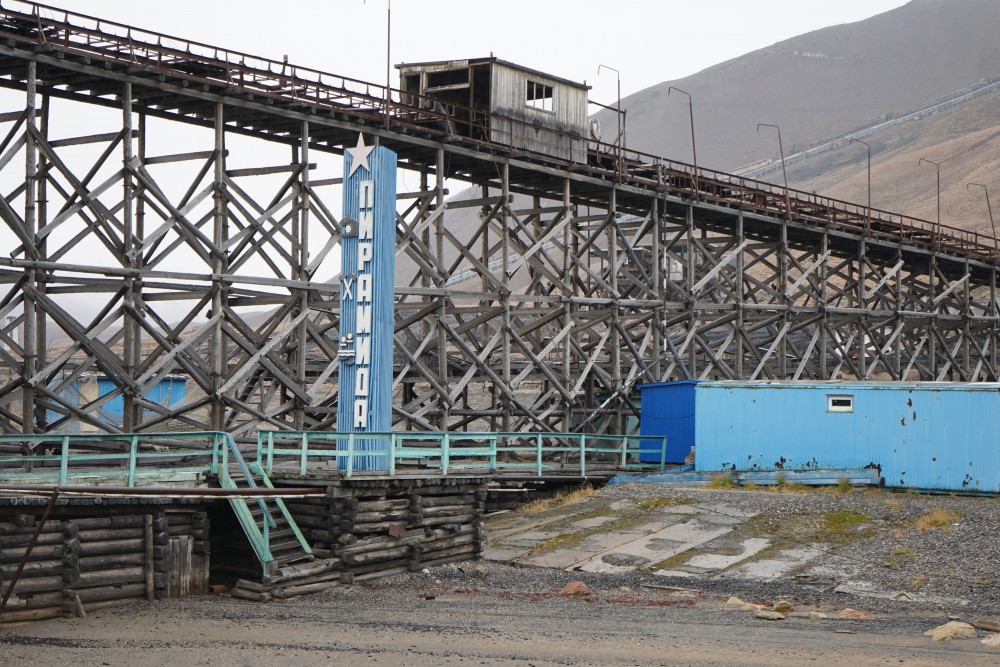 Pyramiden coal harbor. Photo: Thomas Nilsen
Pyramiden coal harbor. Photo: Thomas Nilsen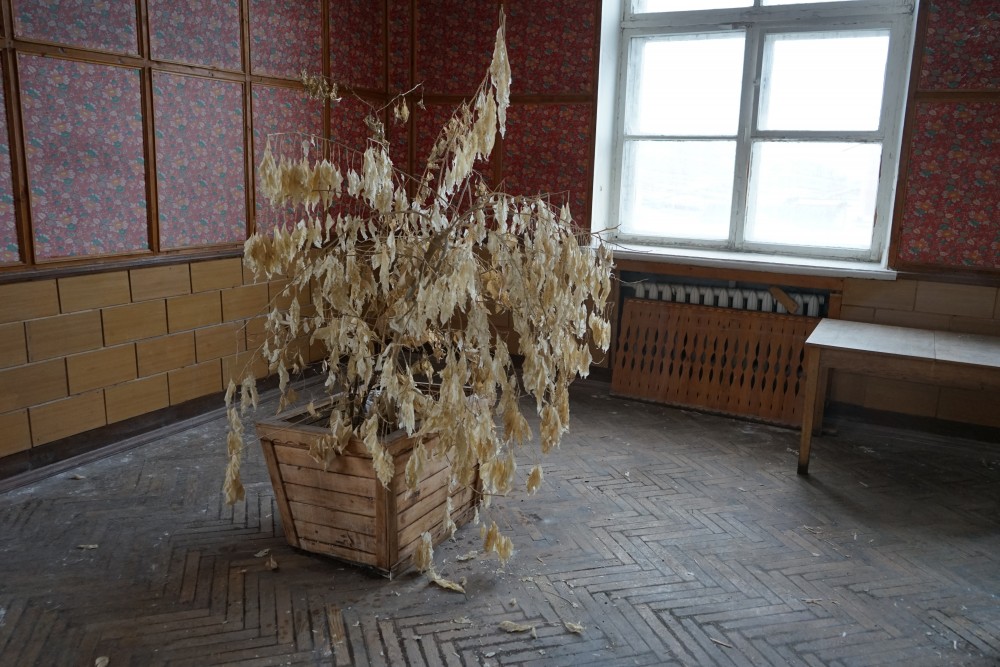 Long time ago, in Pyramiden, a green indoor plant decorated the cantina. Photo: Thomas Nilsen
Long time ago, in Pyramiden, a green indoor plant decorated the cantina. Photo: Thomas Nilsen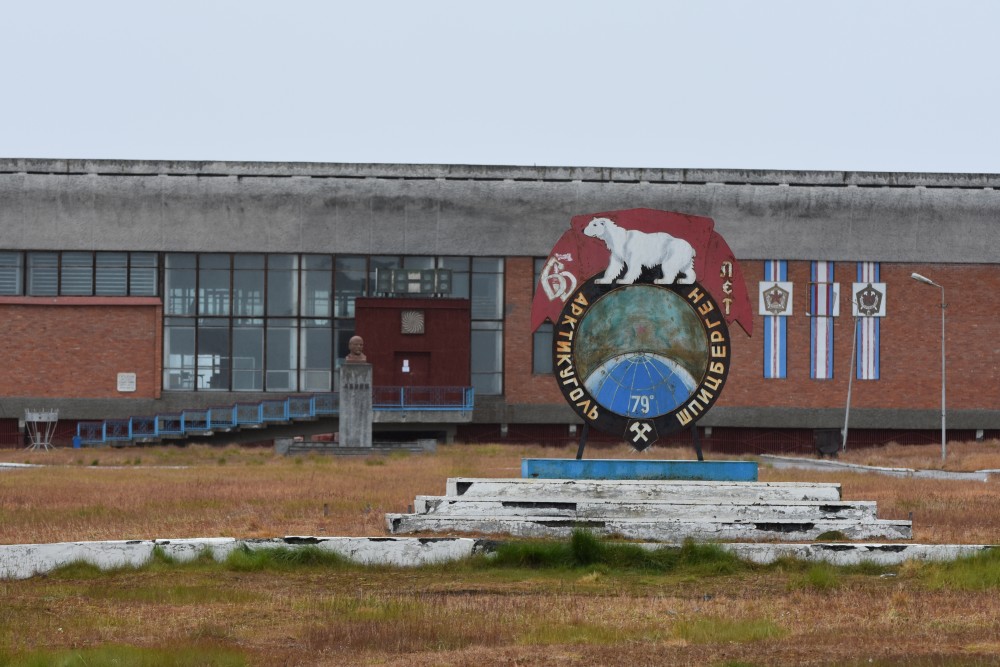 The world's northernmost Palace of Culture. Photo: Thomas Nilsen
The world's northernmost Palace of Culture. Photo: Thomas Nilsen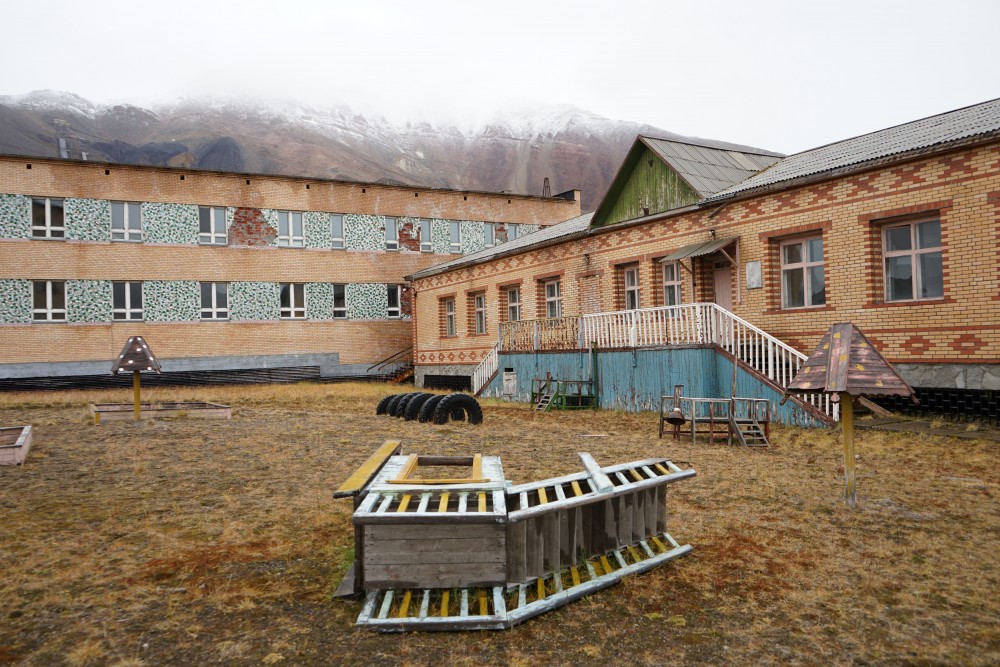 Once upon a time the world's northernmost kindergarten (rigth) and school (2-storey building). Photo: Thomas Nilsen
Once upon a time the world's northernmost kindergarten (rigth) and school (2-storey building). Photo: Thomas Nilsen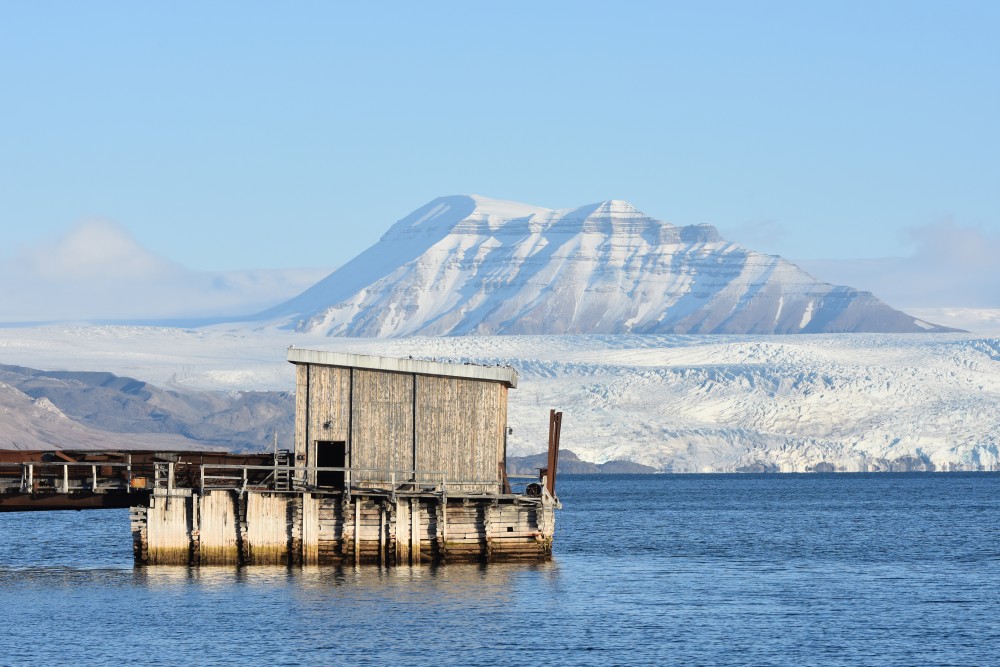 Part of the port facility in Pyramiden. The Nordenskiöld glacier across the fjord. Photo: Thomas Nilsen
Part of the port facility in Pyramiden. The Nordenskiöld glacier across the fjord. Photo: Thomas Nilsen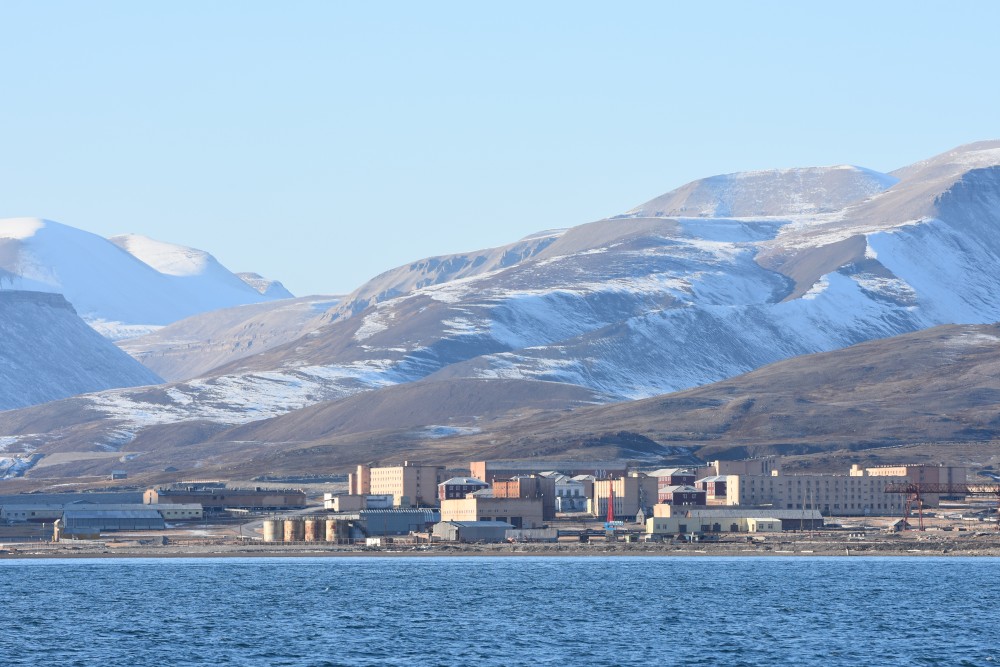 Pyramiden is located in Billefjorden, an appendix fjord in the innermost part of Isfjorden. Photo: Thomas Nilsen
Pyramiden is located in Billefjorden, an appendix fjord in the innermost part of Isfjorden. Photo: Thomas Nilsen
 Photo: Norwegian Coast Guard
Photo: Norwegian Coast Guard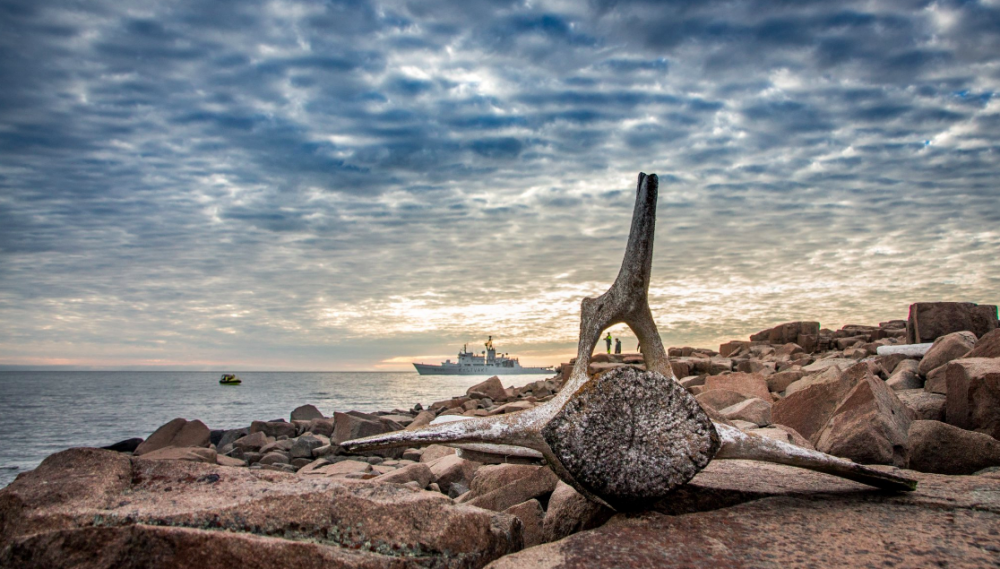 Photo: Norwegian Coast Guard
Photo: Norwegian Coast Guard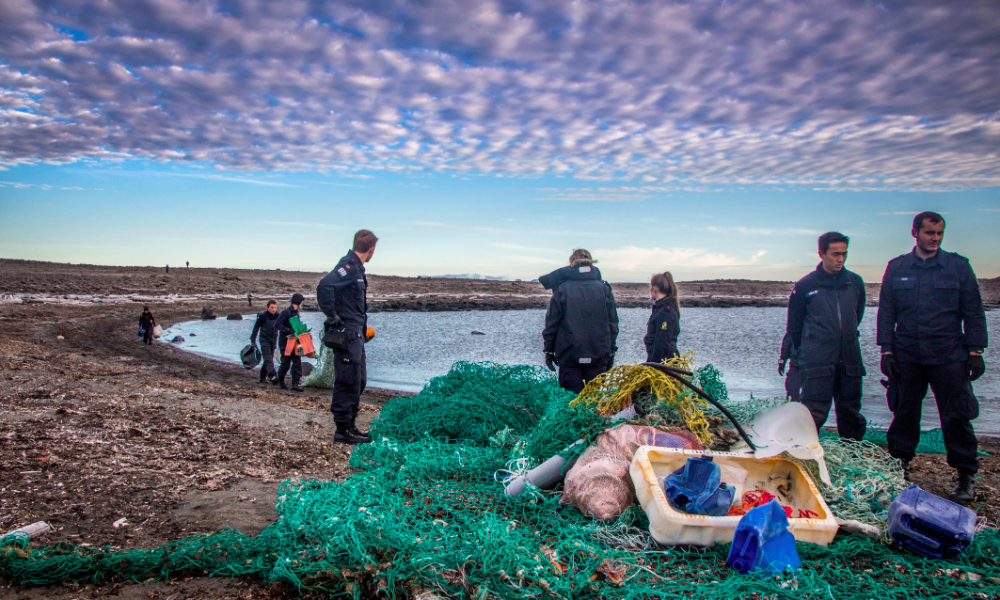 Photo: Norwegian Coast Guard
Photo: Norwegian Coast Guard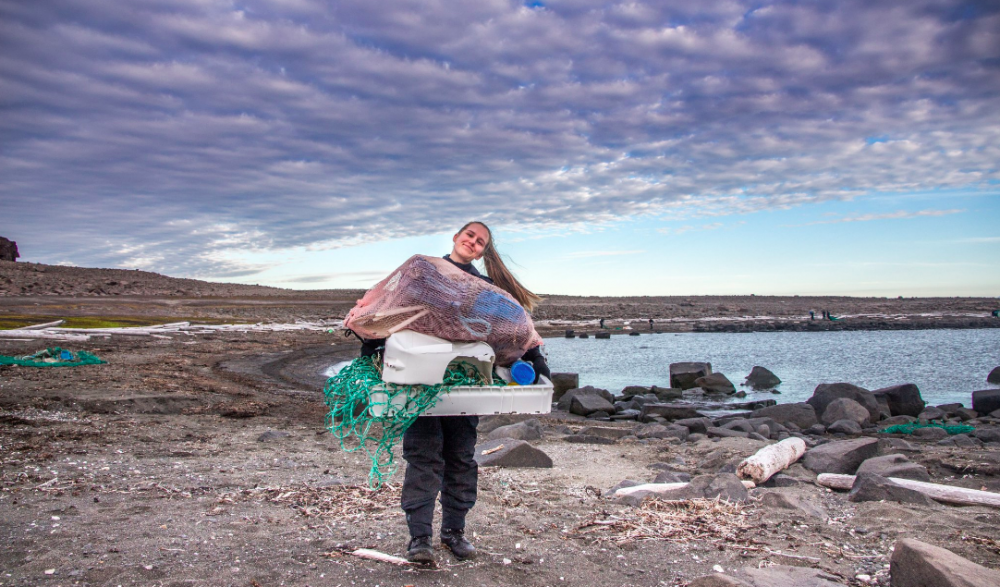 Photo: Norwegian Coast Guard
Photo: Norwegian Coast Guard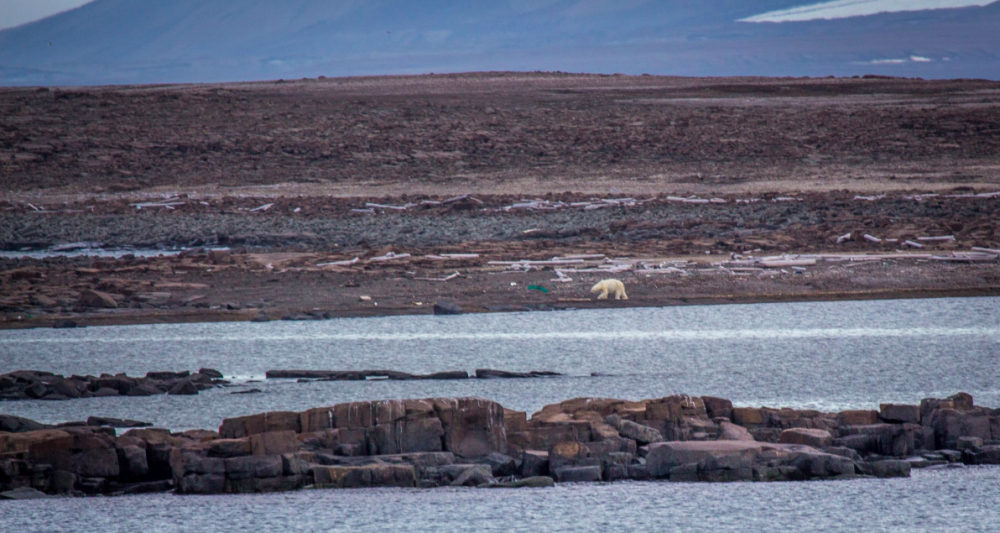 Photo: Norwegian Coast Guard
Photo: Norwegian Coast Guard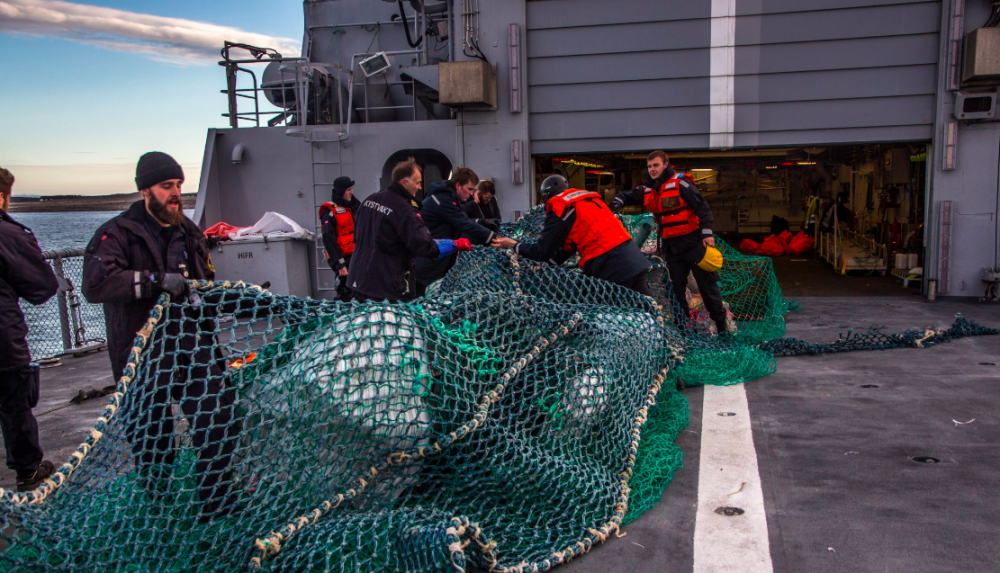
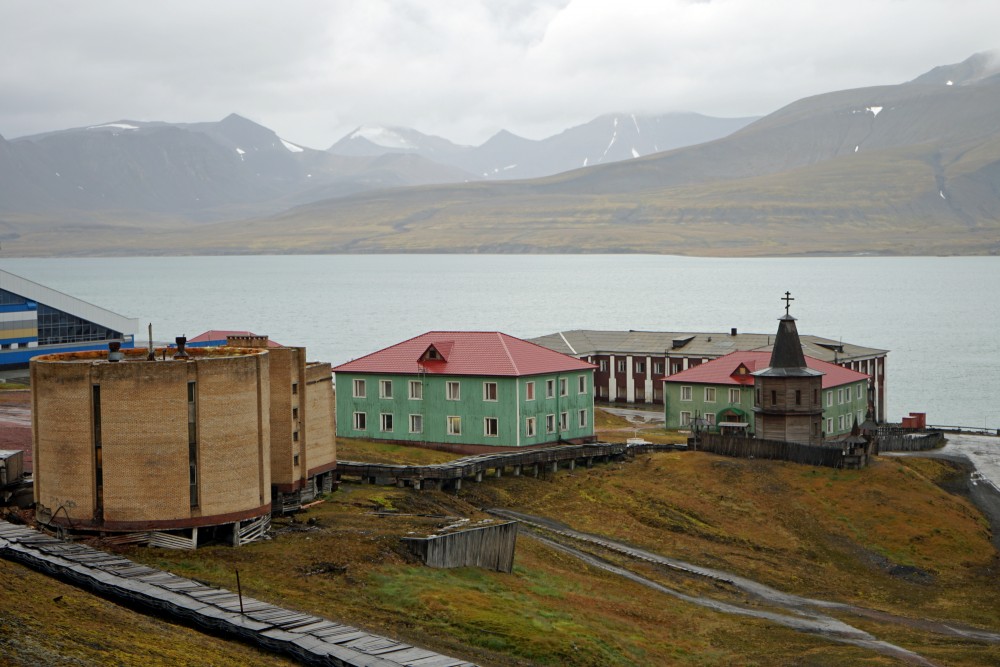 Barentsburg panorama. Photo: Thomas Nilsen
Barentsburg panorama. Photo: Thomas Nilsen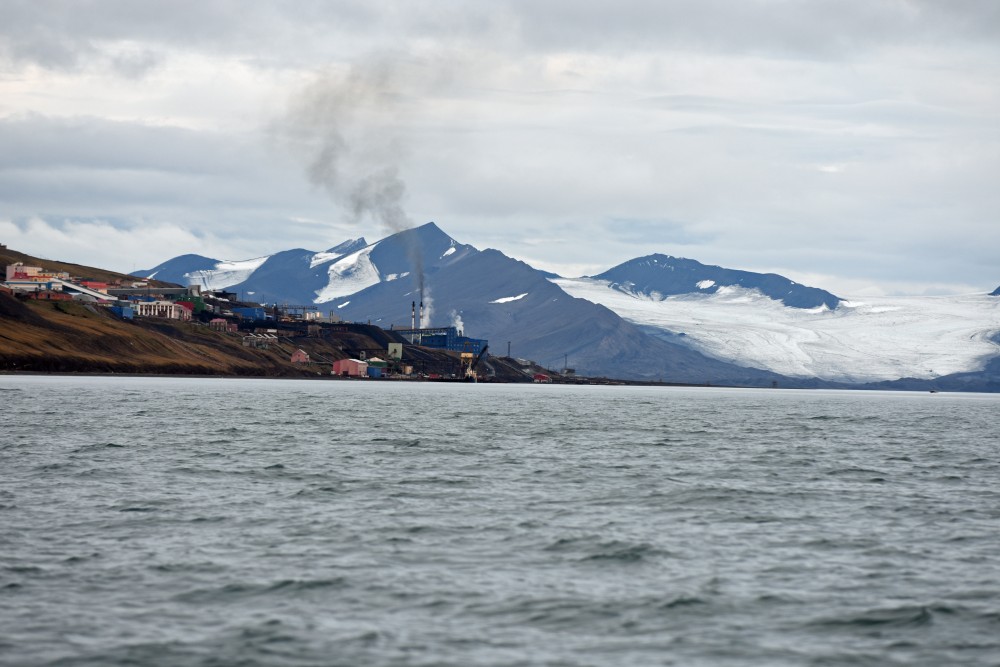 Barentsburg with the Grønfjord glacier. Photo: Thomas Nilsen
Barentsburg with the Grønfjord glacier. Photo: Thomas Nilsen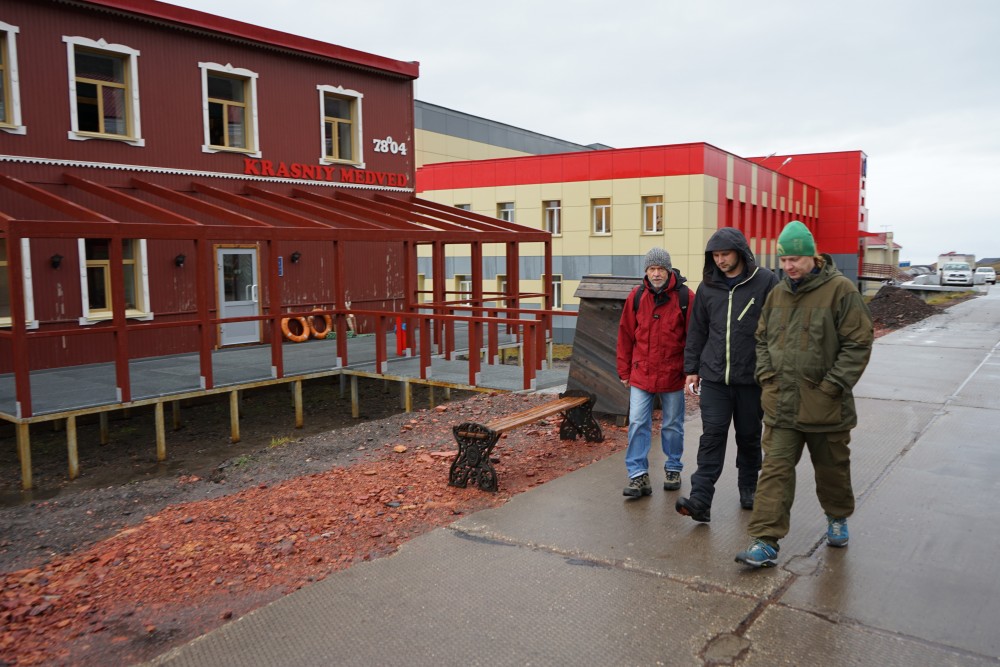 The new restaurant Krasniy Medved (Red bear). Photo: Thomas Nilsen
The new restaurant Krasniy Medved (Red bear). Photo: Thomas Nilsen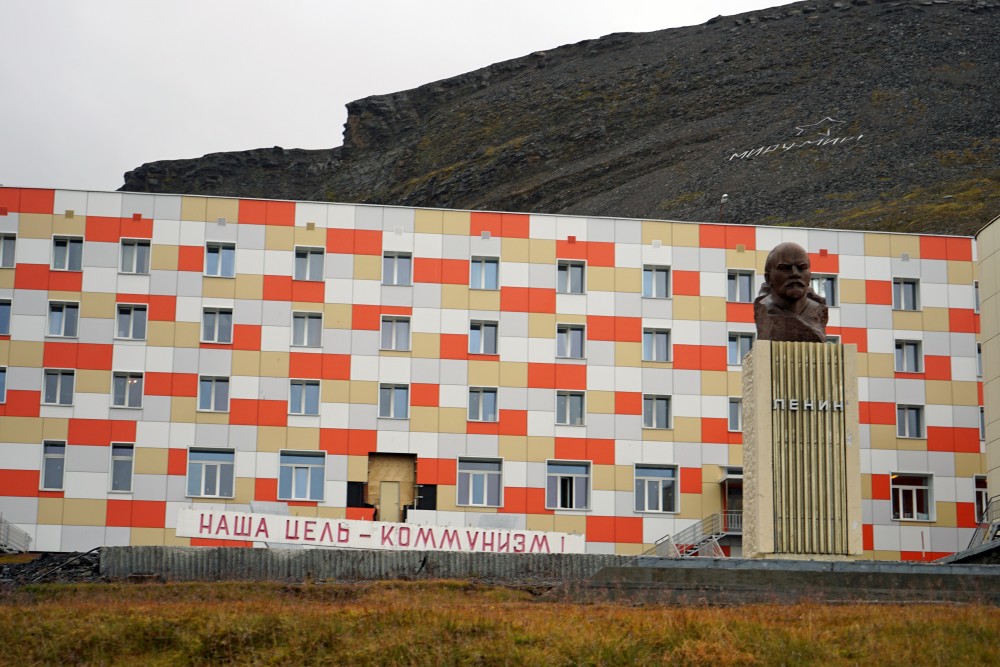 With Lenin in front, the stele honouring communism was erected in 1974 to mark Svalbard's first multi-storey residential building. The text reads "Our goal is communism". The slogan in the mountain reads Mir i Mir - (Peace and Earth). Photo: Thomas Nilsen
With Lenin in front, the stele honouring communism was erected in 1974 to mark Svalbard's first multi-storey residential building. The text reads "Our goal is communism". The slogan in the mountain reads Mir i Mir - (Peace and Earth). Photo: Thomas Nilsen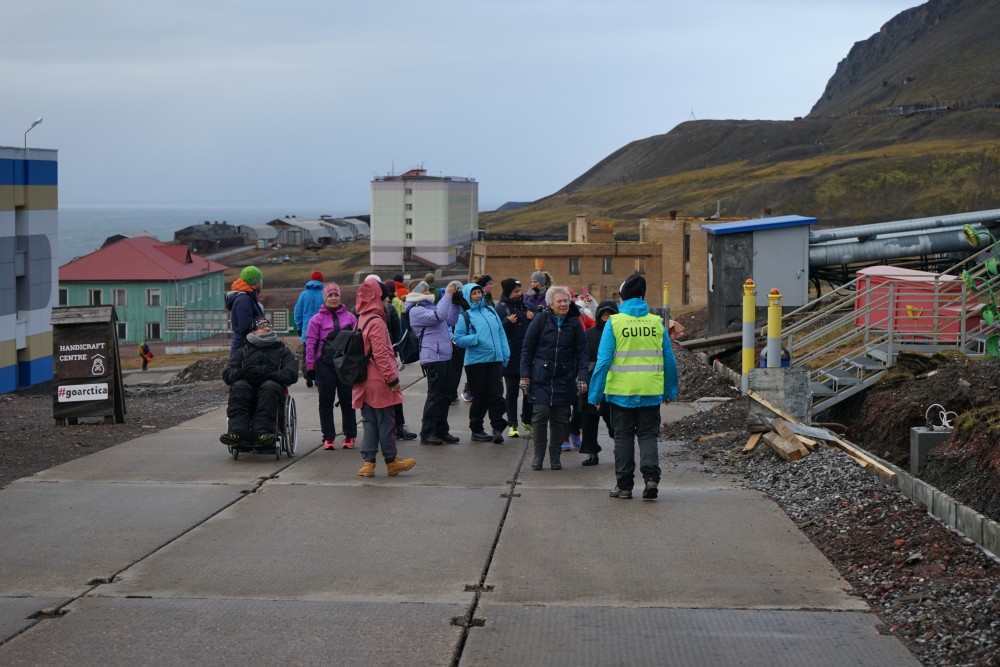 A growing number of tourists are visiting Barentsburg. Photo: Thomas Nilsen
A growing number of tourists are visiting Barentsburg. Photo: Thomas Nilsen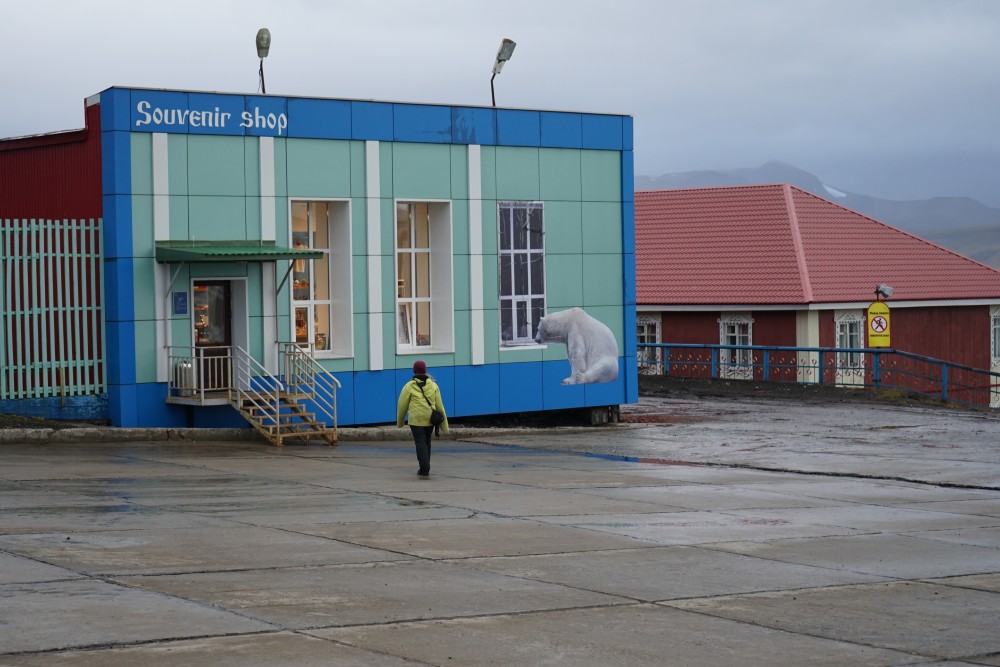 Souvenir shop in Barentsburg. Photo: Thomas Nilsen
Souvenir shop in Barentsburg. Photo: Thomas Nilsen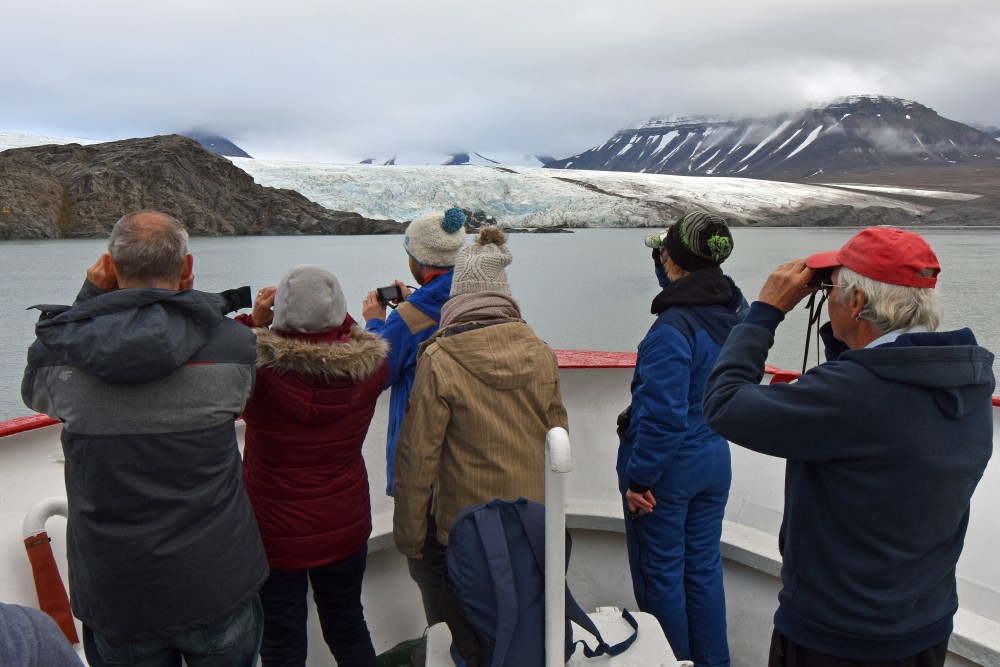 Nordenskiöld glacier. Photo: Thomas Nilsen
Nordenskiöld glacier. Photo: Thomas Nilsen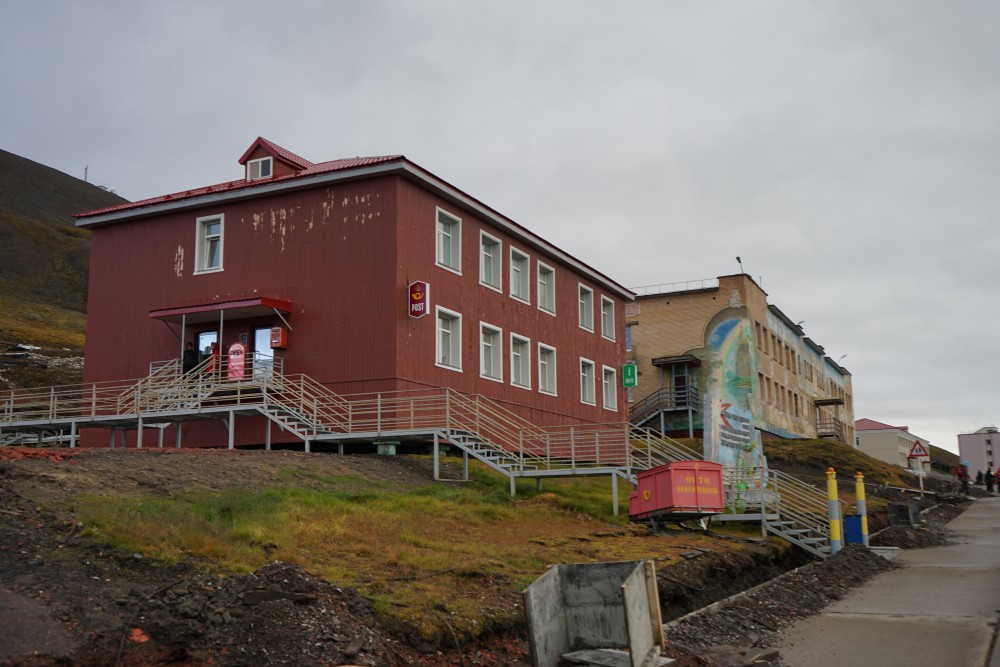 Norwegian post service in Barentsburg. Photo: Thomas Nilsen
Norwegian post service in Barentsburg. Photo: Thomas Nilsen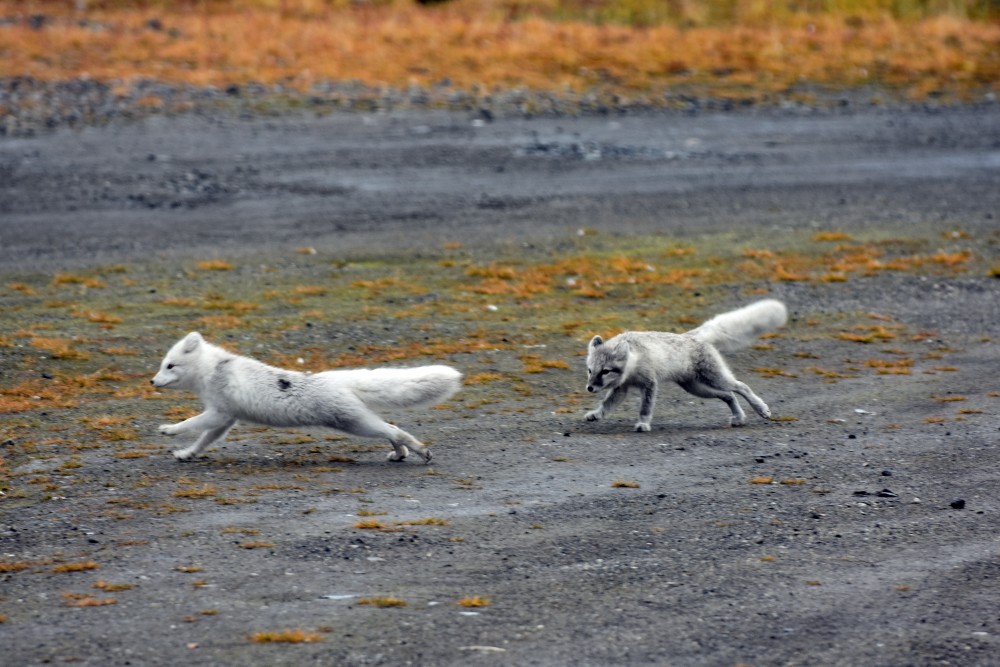 Arctic foxes. Photo: Thomas Nilsen
Arctic foxes. Photo: Thomas Nilsen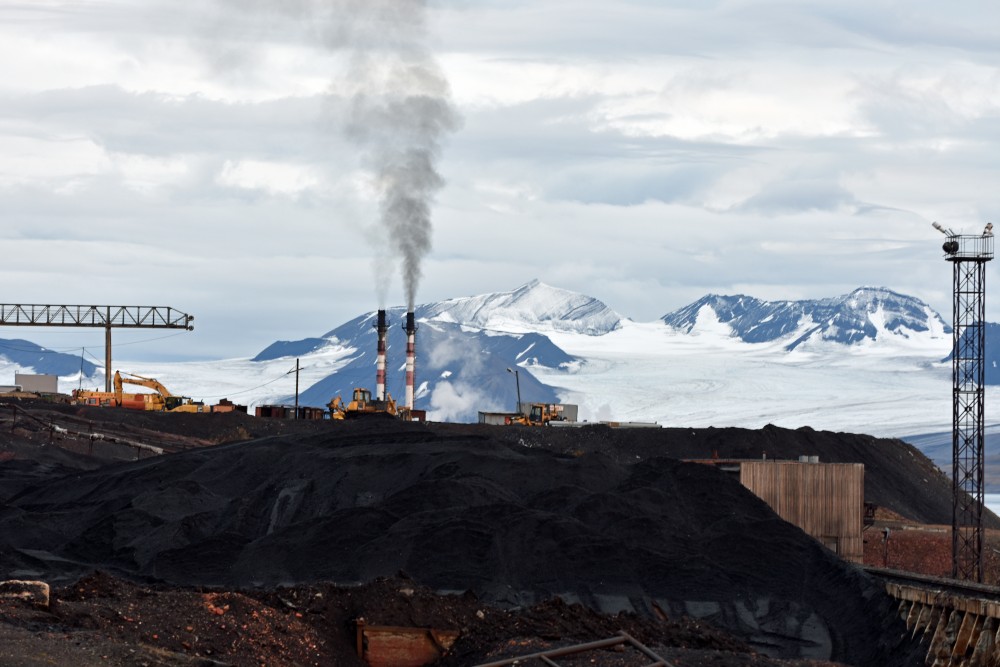 The coal plant in Barentsburg consumes about 30,000 tons of coal annually. Photo: Thomas Nilsen
The coal plant in Barentsburg consumes about 30,000 tons of coal annually. Photo: Thomas Nilsen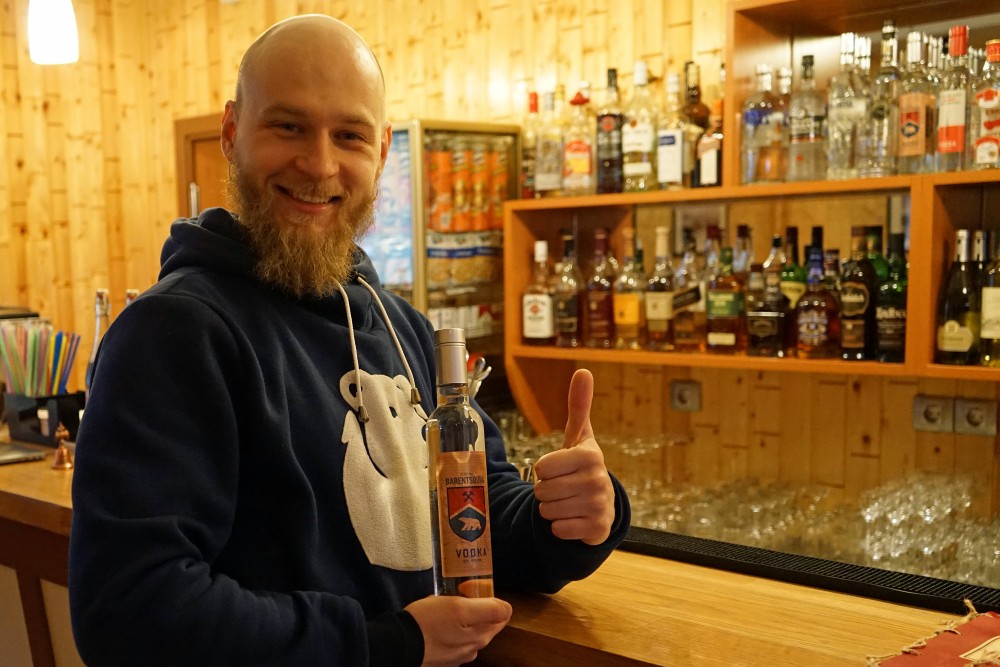 Ivan Velichenko shows a bottle of the town's own vodka named Barentsburg. Photo: Thomas Nilsen
Ivan Velichenko shows a bottle of the town's own vodka named Barentsburg. Photo: Thomas Nilsen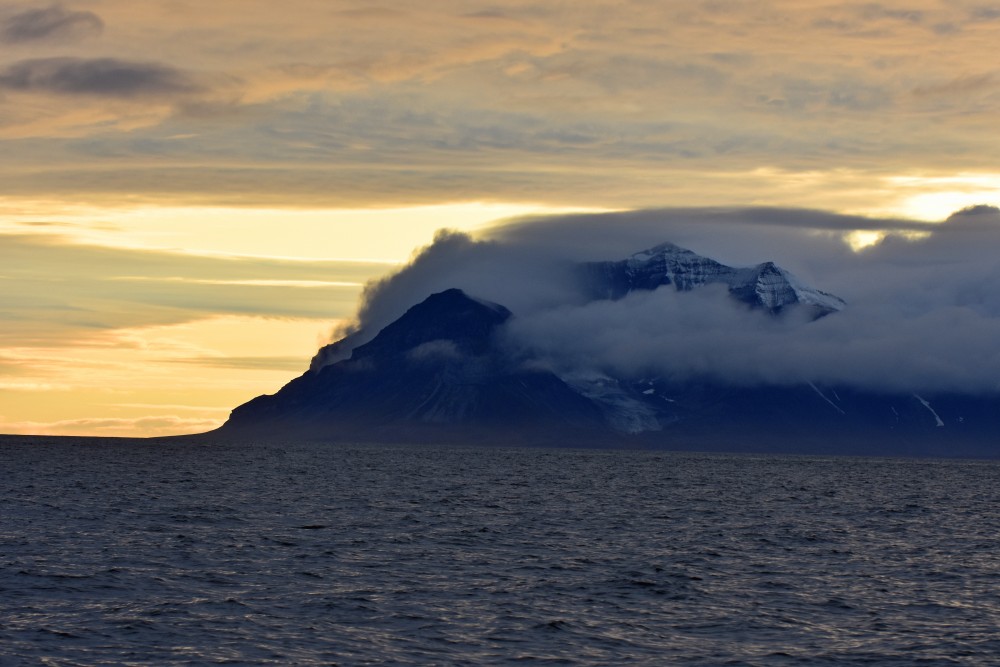 Nordre Isfjorden National Park. Photo: Thomas Nilsen
Nordre Isfjorden National Park. Photo: Thomas Nilsen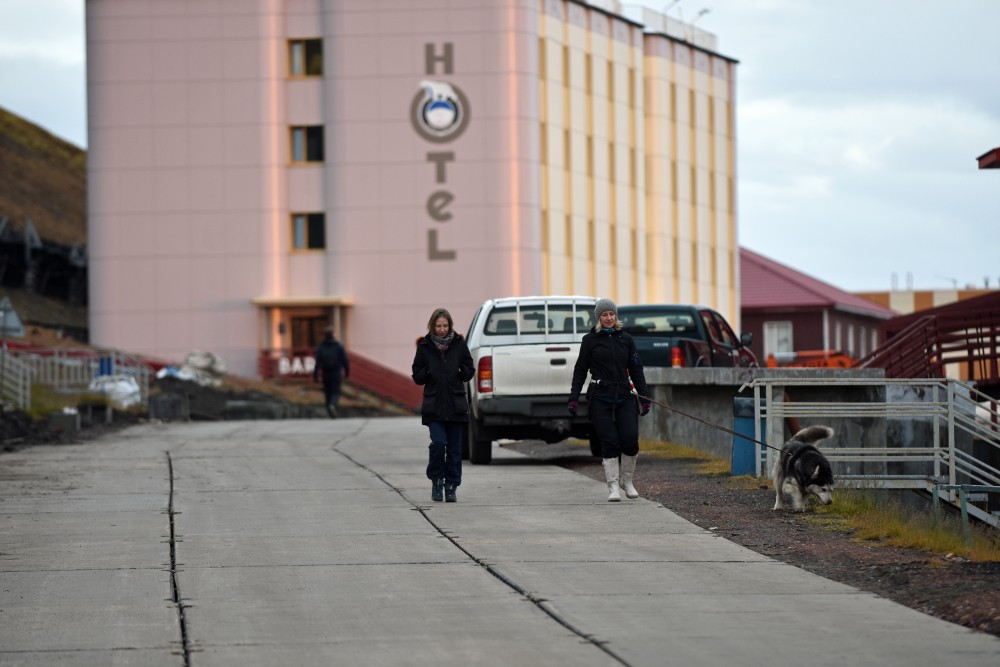 The new hotel in Barentsburg has room for 90 guests. Photo: Thomas Nilsen
The new hotel in Barentsburg has room for 90 guests. Photo: Thomas Nilsen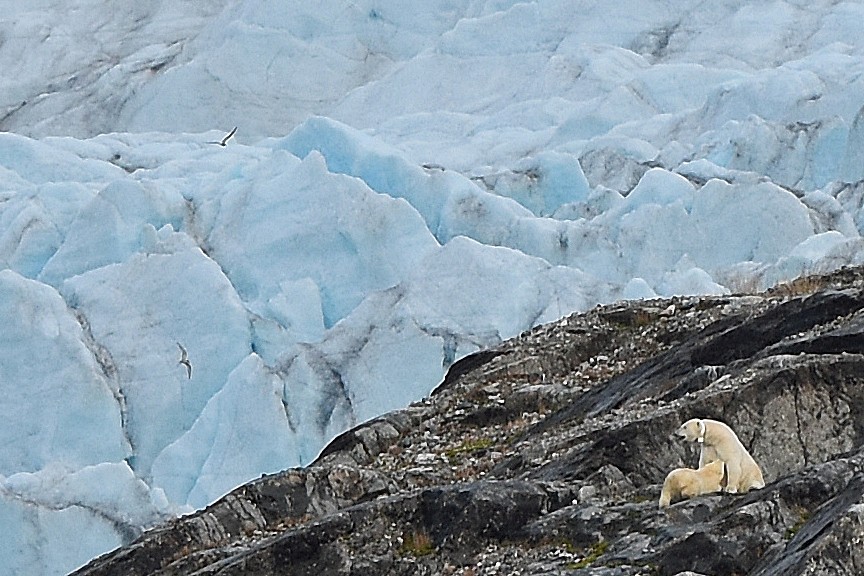 Lunchtime for this polar bear cub. Photo: Thomas Nilsen
Lunchtime for this polar bear cub. Photo: Thomas Nilsen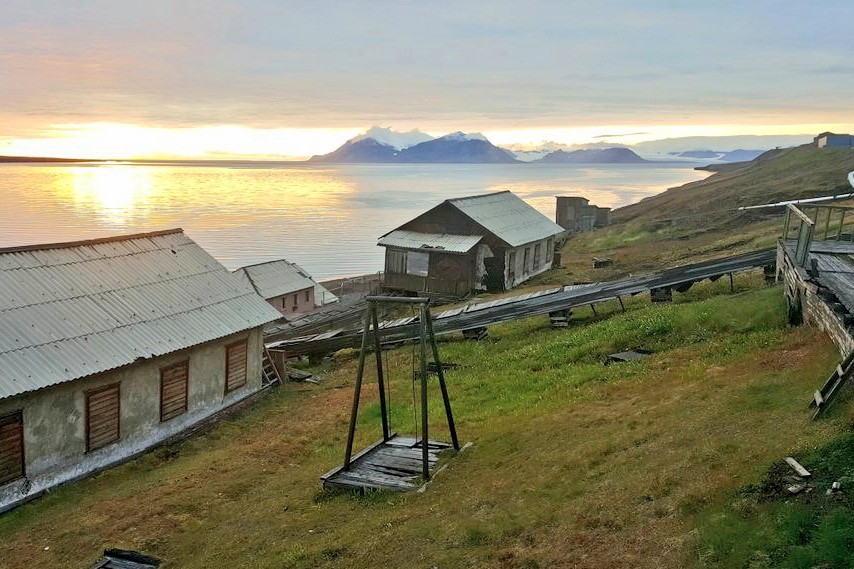 Old Finnish houses in Barentsburg. Nordre Isfjorden National Park in the background. Photo: Thomas Nilsen
Old Finnish houses in Barentsburg. Nordre Isfjorden National Park in the background. Photo: Thomas Nilsen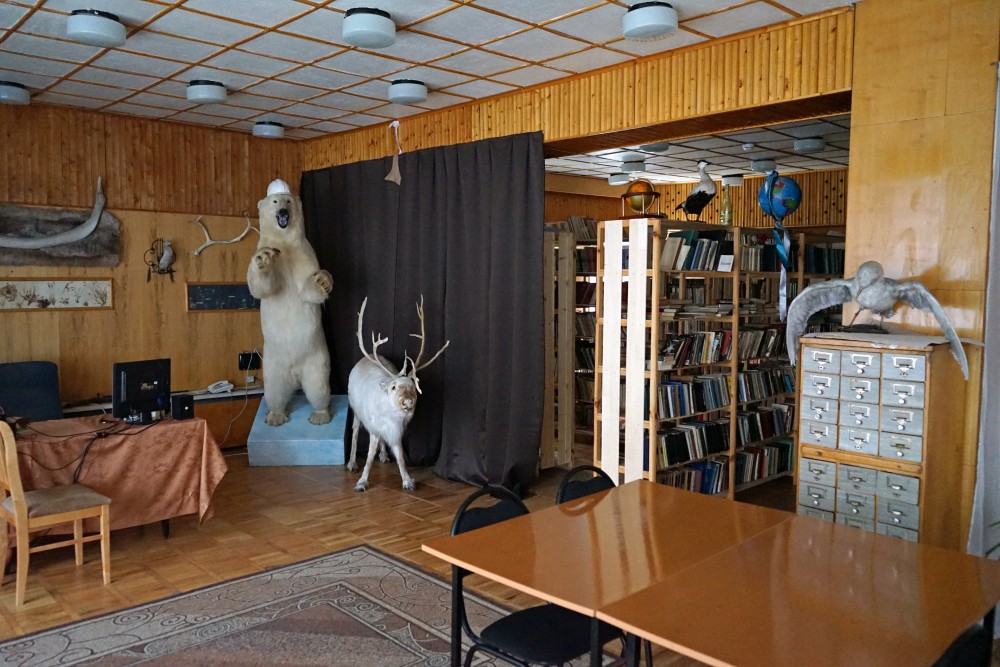 A polar bear and a reindeer are on display in a corner at the library in Barentsburg. Photo: Thomas Nilsen
A polar bear and a reindeer are on display in a corner at the library in Barentsburg. Photo: Thomas Nilsen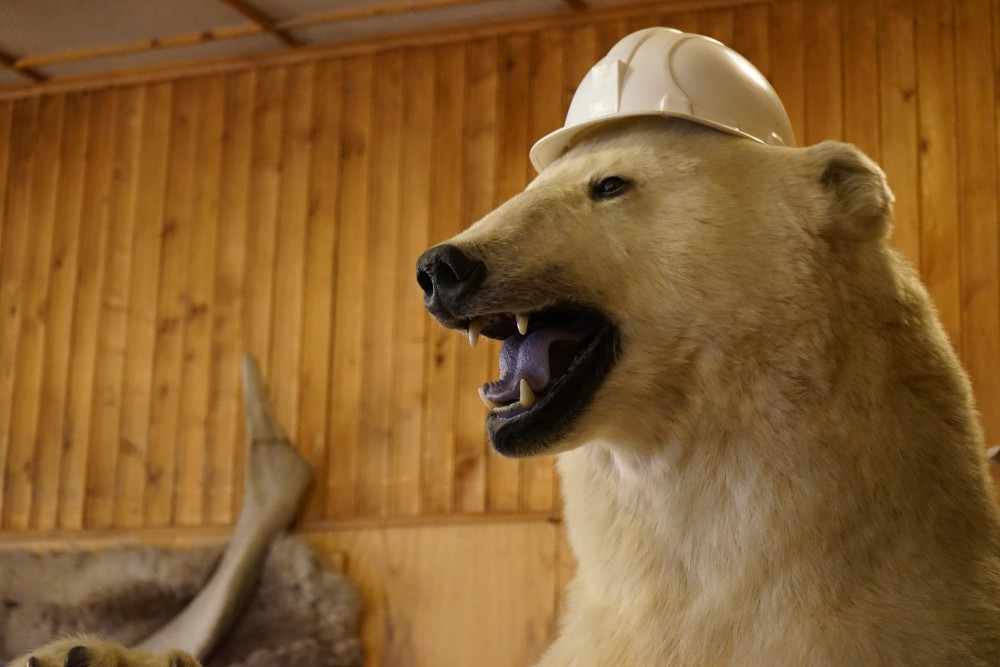 The polar bear in the library wears helmet. Photo: Thomas Nilsen
The polar bear in the library wears helmet. Photo: Thomas Nilsen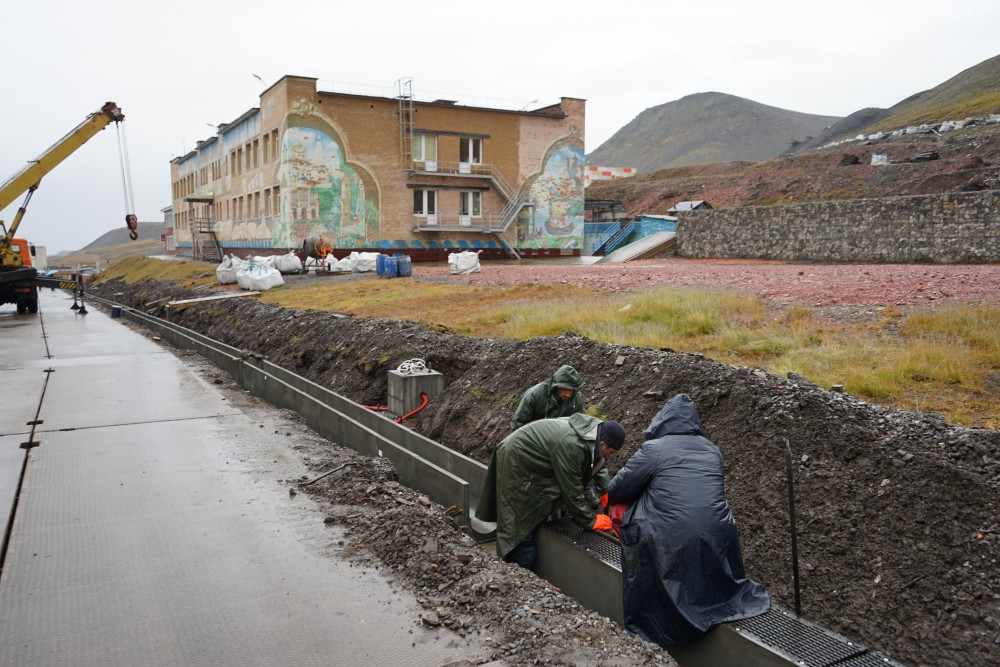 Upgrades of the infrastructure in Barentsburg. Photo: Thomas Nilsen
Upgrades of the infrastructure in Barentsburg. Photo: Thomas Nilsen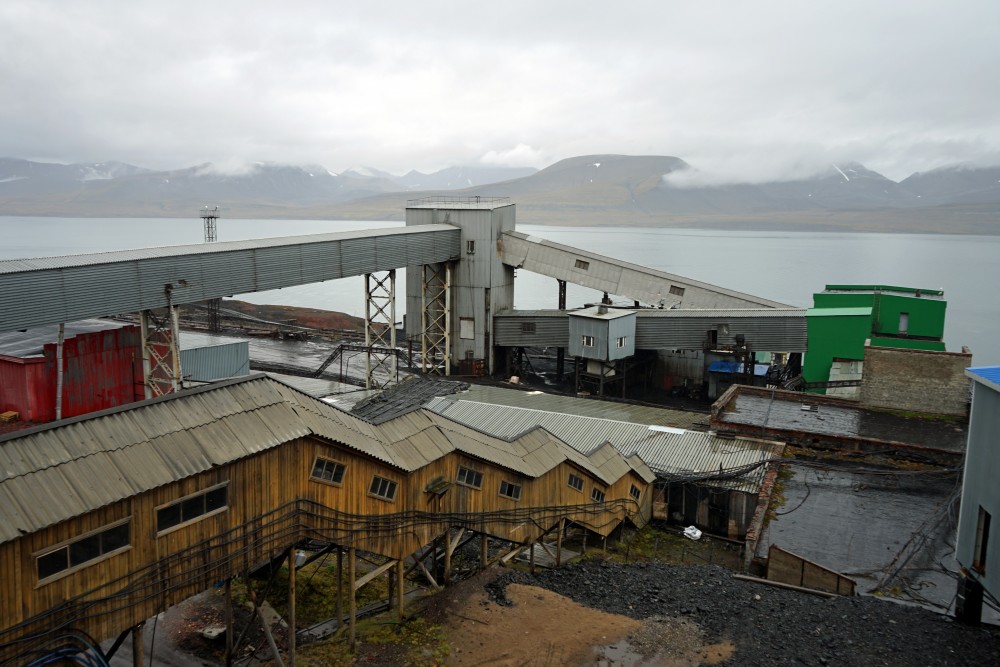 Coal mine facilities. Photo: Thomas Nilsen
Coal mine facilities. Photo: Thomas Nilsen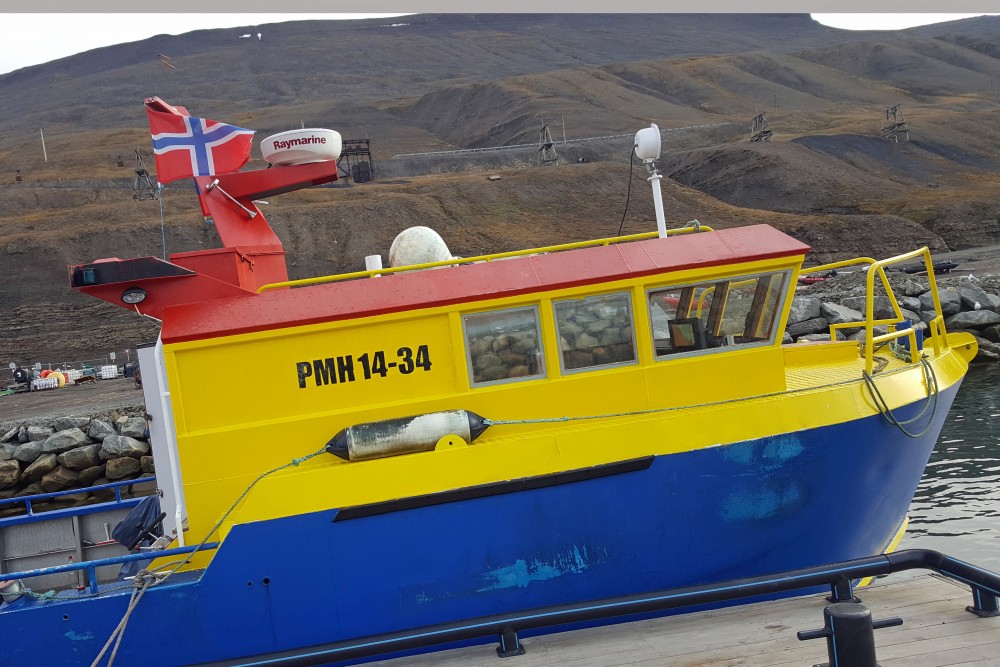 GoArctica's boat is painted in Ukrainian colours. About 60% of the people living in Barentsburg are Ukrainians. Photo: Thomas Nilsen
GoArctica's boat is painted in Ukrainian colours. About 60% of the people living in Barentsburg are Ukrainians. Photo: Thomas Nilsen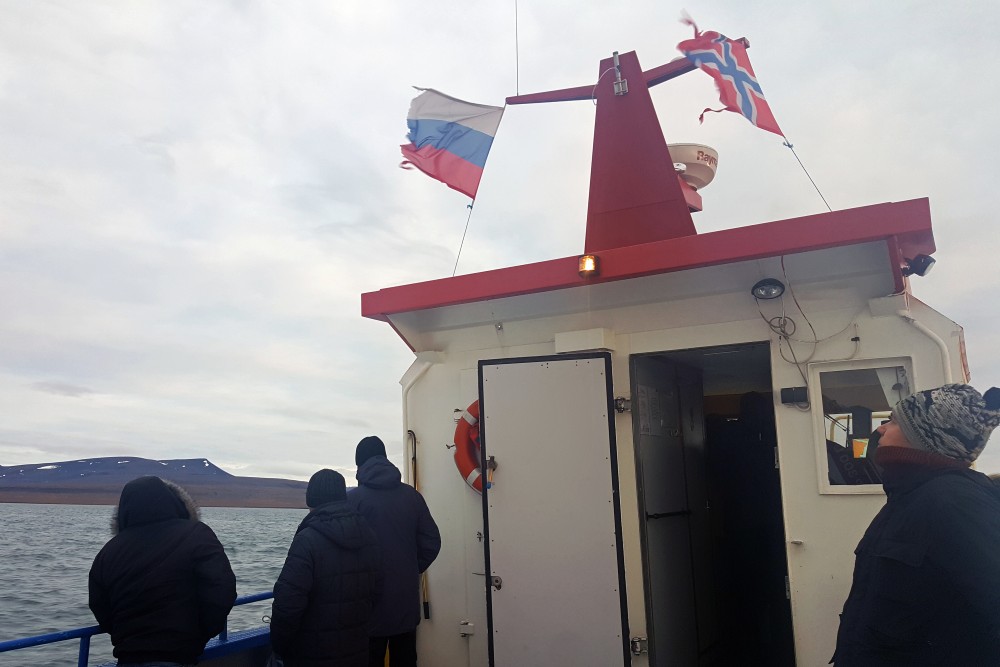 GoArctic's boat "Barentsburg" has both Norwegian and Russian flag in the mast. Photo: Thomas Nilsen
GoArctic's boat "Barentsburg" has both Norwegian and Russian flag in the mast. Photo: Thomas Nilsen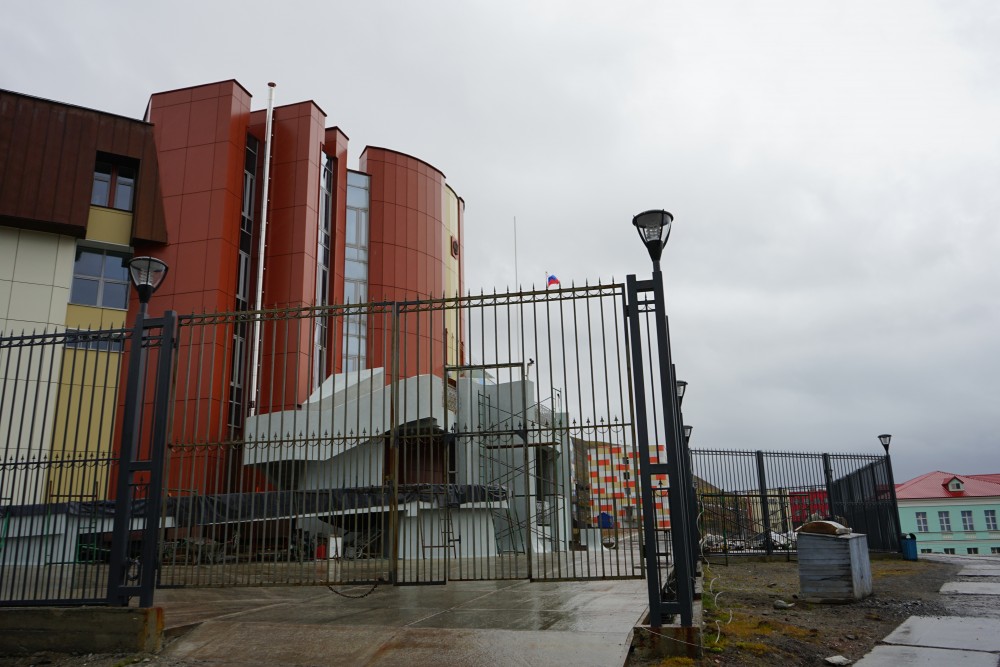 Russia has a rather large Consulate General in Barentsburg. Photo: Thomas Nilsen
Russia has a rather large Consulate General in Barentsburg. Photo: Thomas Nilsen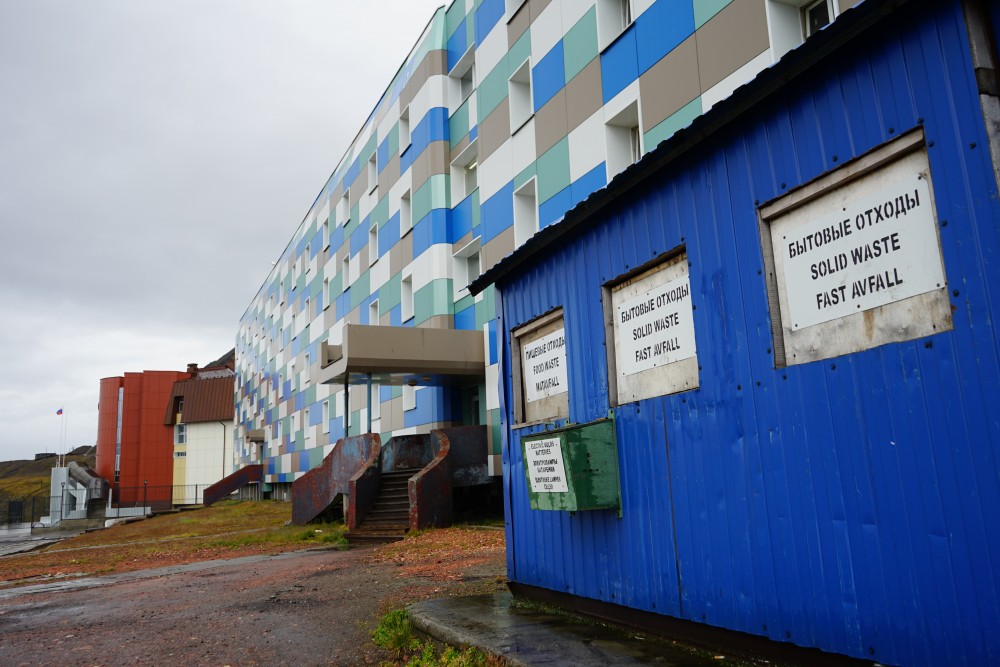 Waste sorting. Photo: Thomas Nilsen
Waste sorting. Photo: Thomas Nilsen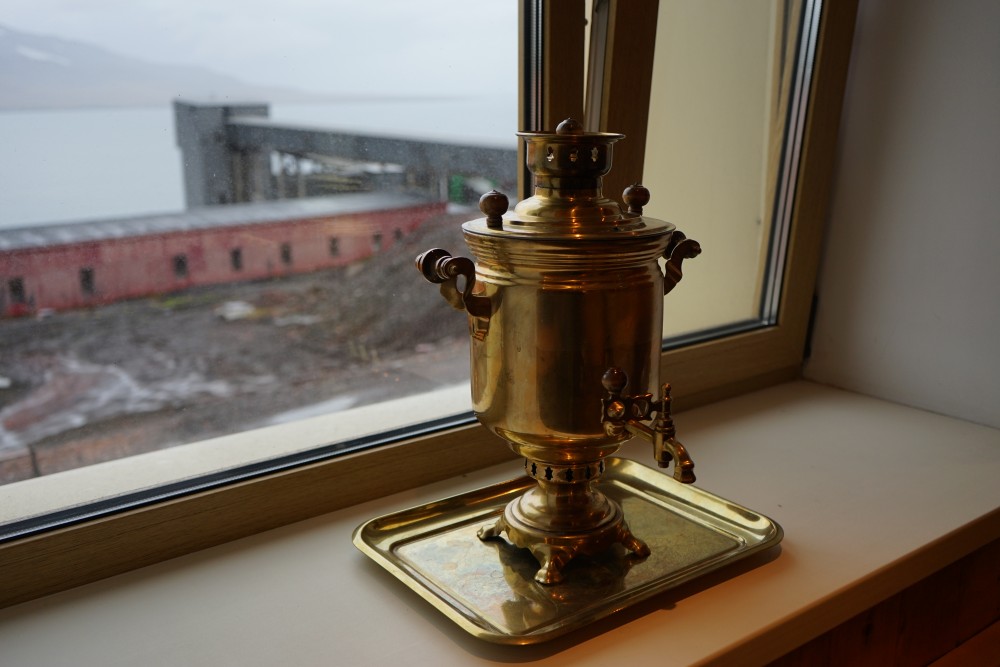 Samovar (tea boiler). Photo: Thomas Nilsen
Samovar (tea boiler). Photo: Thomas Nilsen Arcticugol Spitsbergen is the state-owned company in charge of all activities in Barentsburg. Photo: Thomas Nilsen
Arcticugol Spitsbergen is the state-owned company in charge of all activities in Barentsburg. Photo: Thomas Nilsen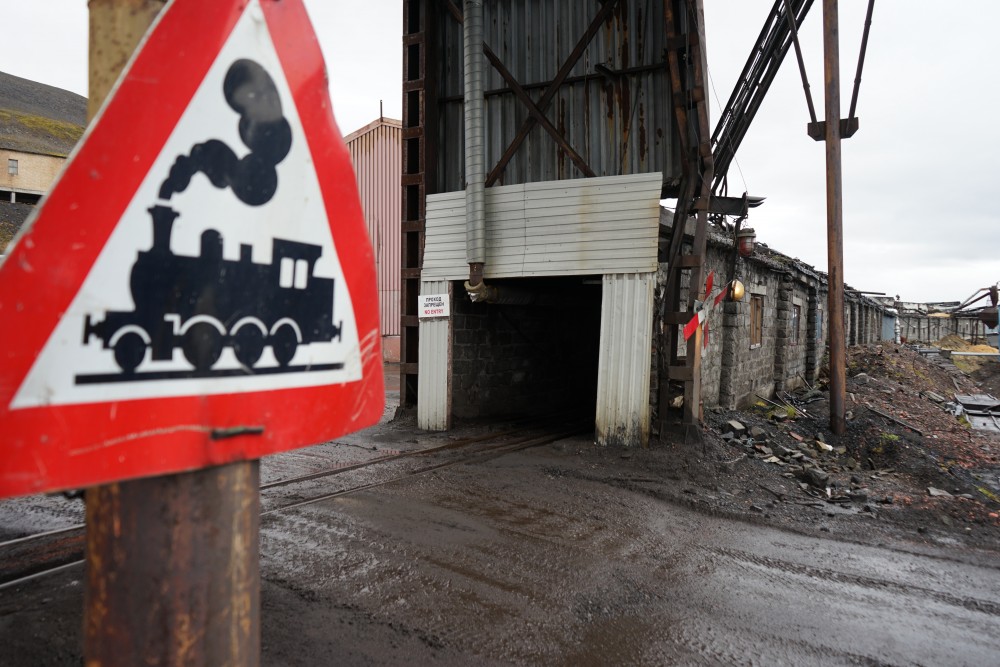 Rail tracks into the coal mine in Barentsburg. Photo: Thomas Nilsen
Rail tracks into the coal mine in Barentsburg. Photo: Thomas Nilsen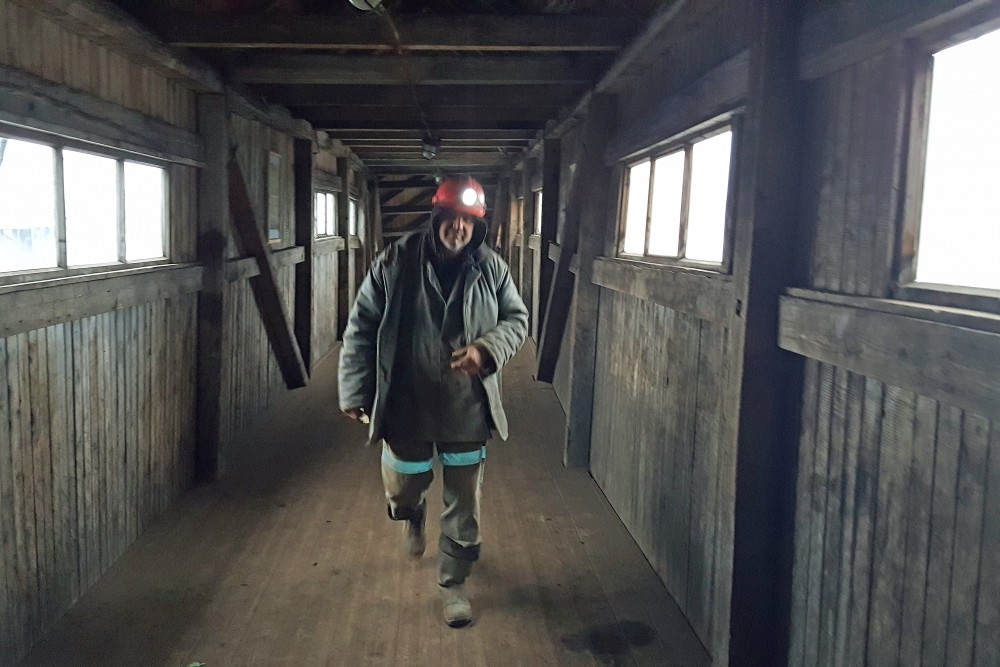 Coal miner. Photo: Thomas Nilsen
Coal miner. Photo: Thomas Nilsen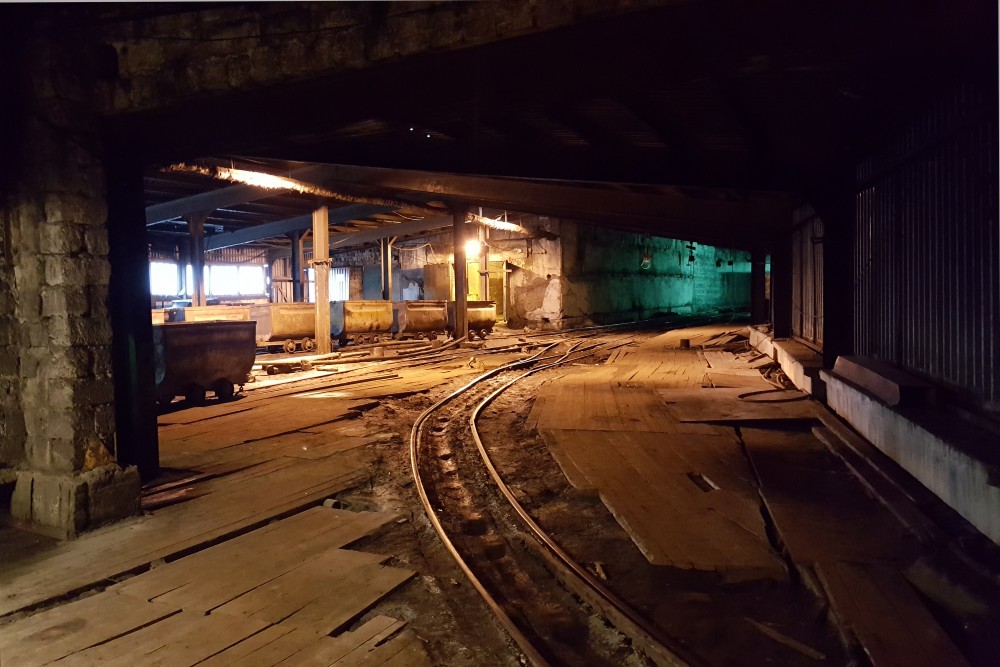 Coal mine. Photo: Thomas Nilsen
Coal mine. Photo: Thomas Nilsen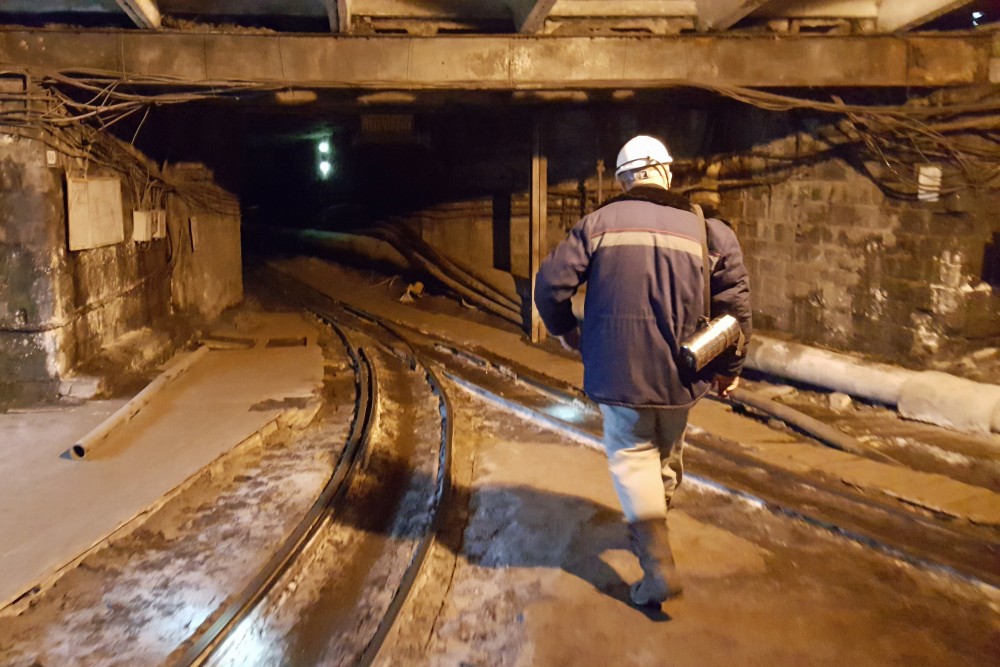 Going deep-down. Mining operation today happens at 1,200 meters deep. Workers need about an hour to get down. Photo: Thomas Nilsen
Going deep-down. Mining operation today happens at 1,200 meters deep. Workers need about an hour to get down. Photo: Thomas Nilsen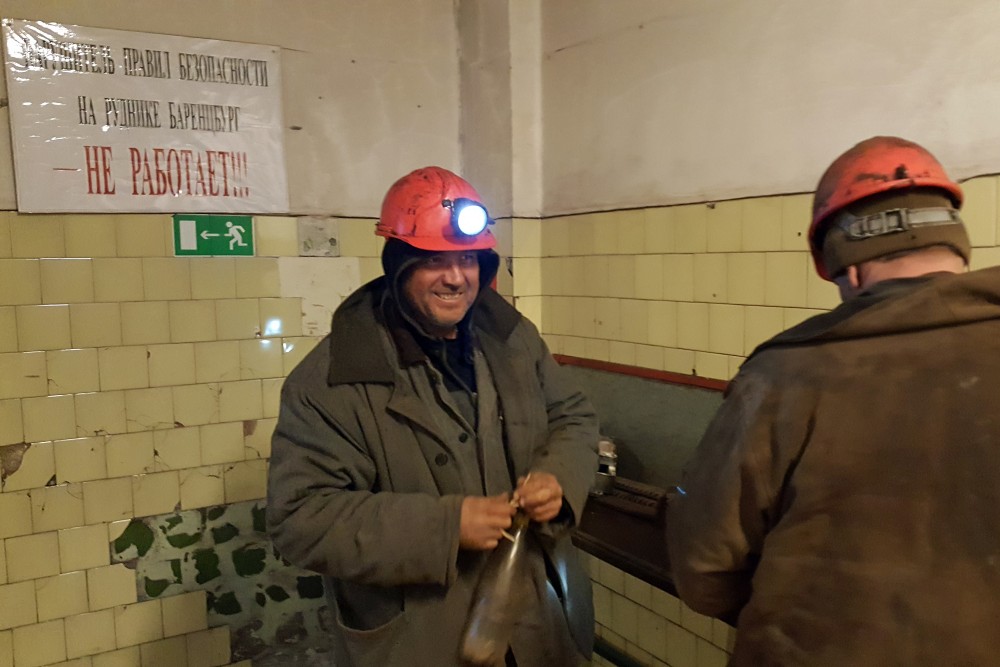 Back up after a long nights work in the mine. Photo: Thomas Nilsen
Back up after a long nights work in the mine. Photo: Thomas Nilsen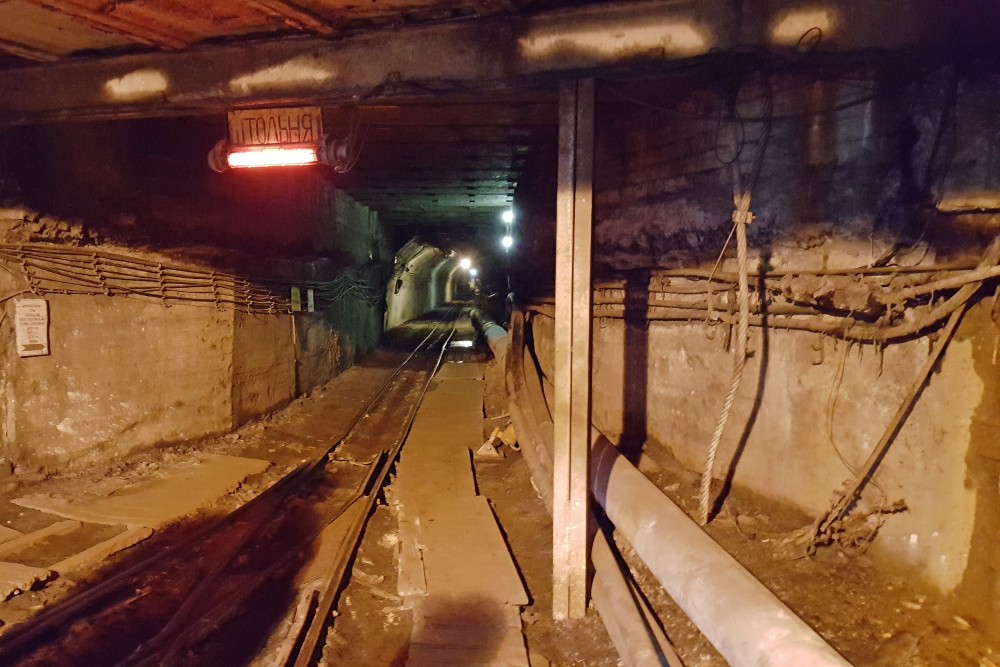 All coal mining happens underground. Photo: Thomas Nislen
All coal mining happens underground. Photo: Thomas Nislen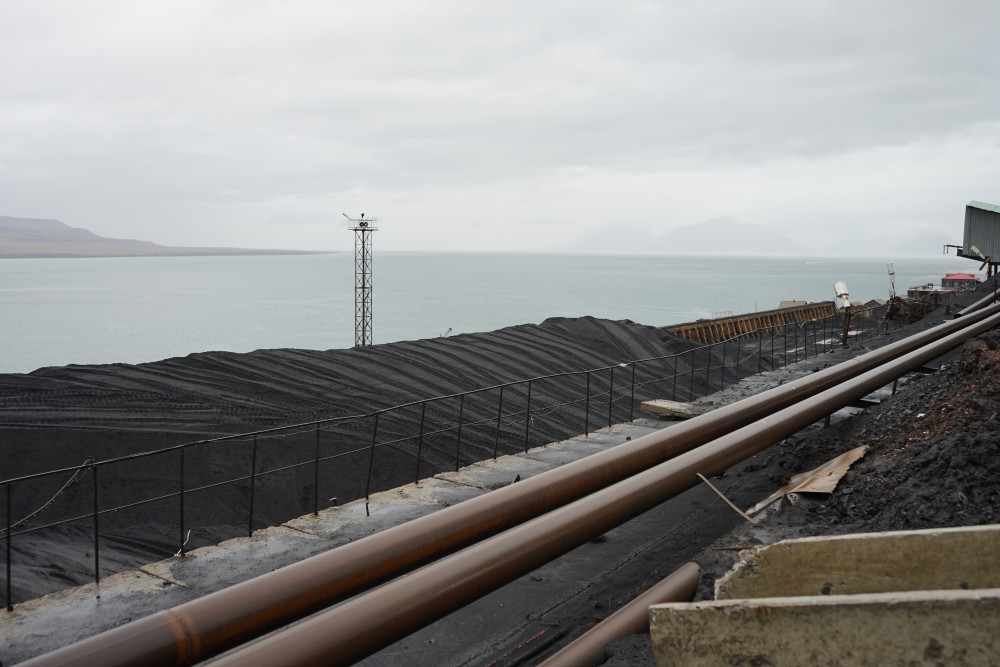 Coal harbour from where ships bring the coal to England. Photo: Thomas Nilsen
Coal harbour from where ships bring the coal to England. Photo: Thomas Nilsen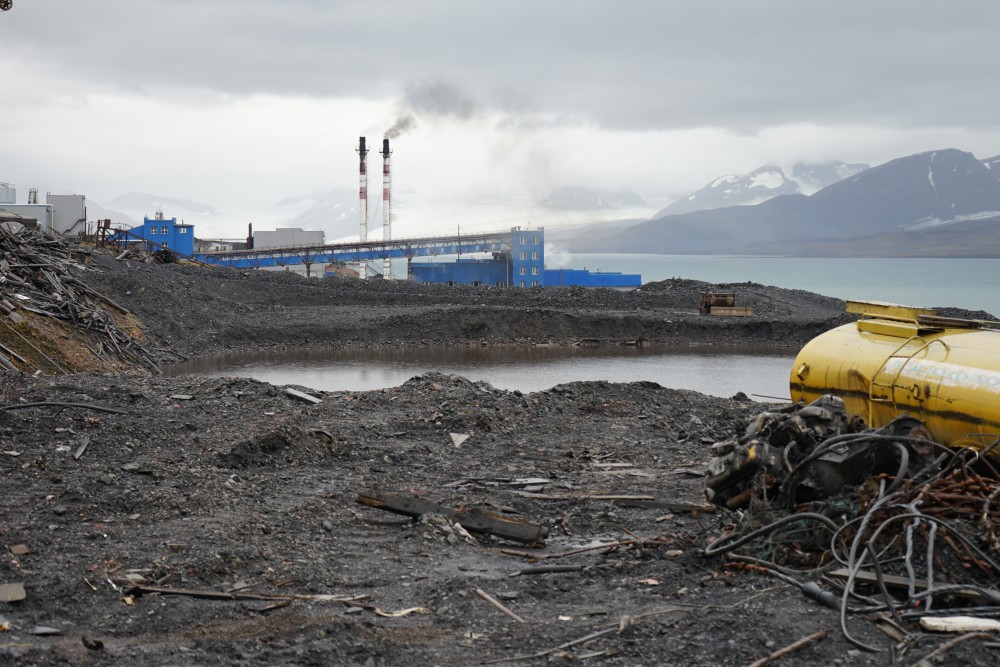 Maybe not the highlight of a guided tour in Arctic Barentsburg. The mine's waste dump. Photo: Thomas Nilsen
Maybe not the highlight of a guided tour in Arctic Barentsburg. The mine's waste dump. Photo: Thomas Nilsen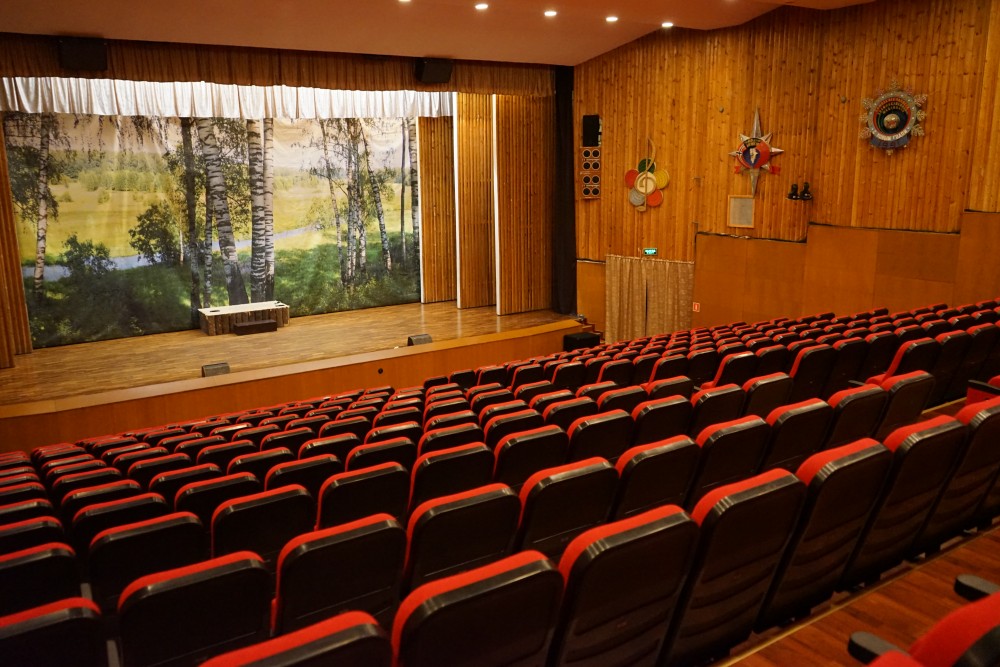 The cultural palace has seats for 450 people. That is about everyone who lives in Barentsburg. Photo: Thomas Nilsen
The cultural palace has seats for 450 people. That is about everyone who lives in Barentsburg. Photo: Thomas Nilsen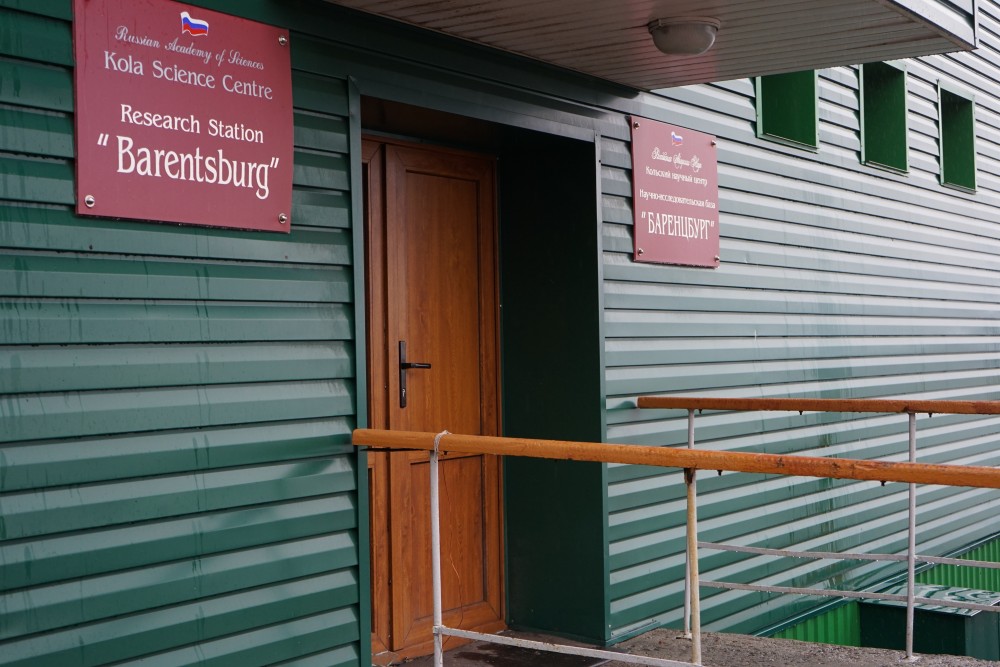 Kola Science Centre has a research station in Barentsburg. Photo: Thomas Nilsen
Kola Science Centre has a research station in Barentsburg. Photo: Thomas Nilsen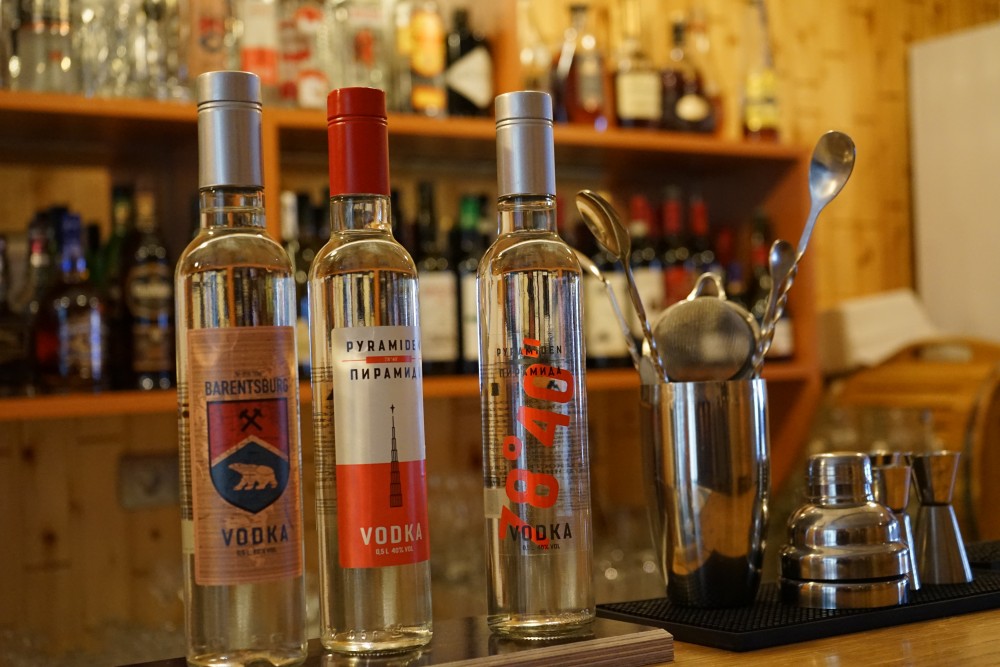 Both Barentsburg and Pyramiden have their own vodka brands. Photo: Thomas Nilsen
Both Barentsburg and Pyramiden have their own vodka brands. Photo: Thomas Nilsen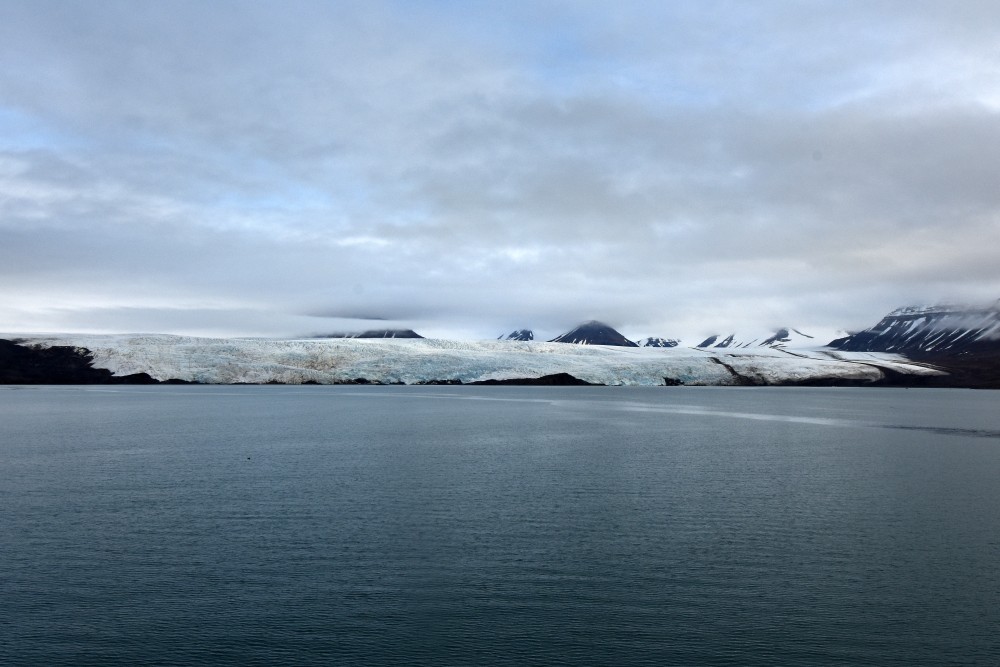 Nordenskiöld glacier. Photo: Thomas Nilsen
Nordenskiöld glacier. Photo: Thomas Nilsen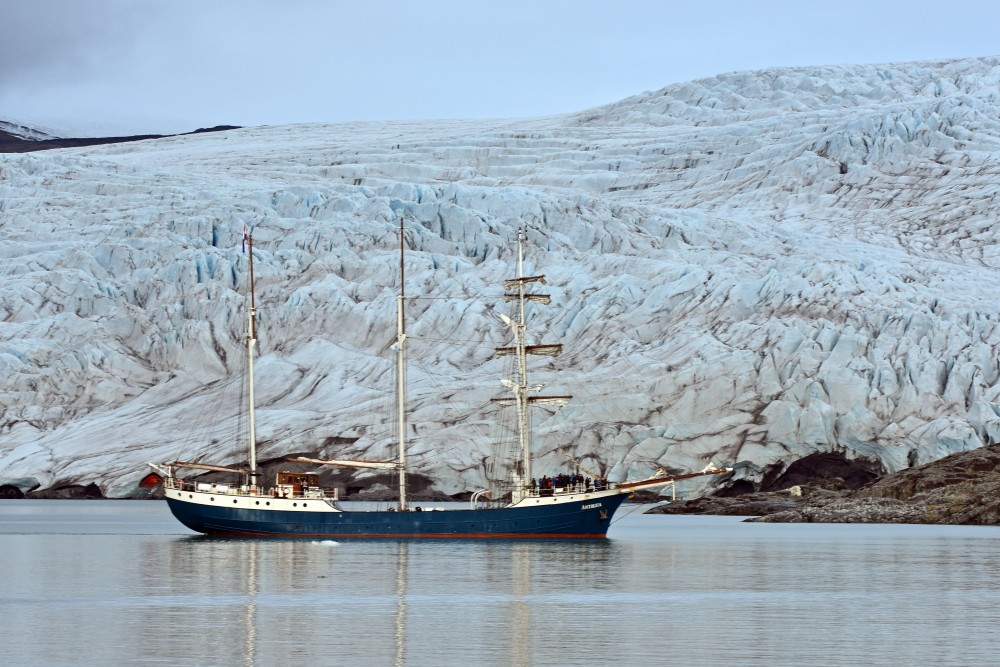 The three-mast sailing ship Antigua at the Nordenskiöld glacier, Svalbard. Photo: Thomas Nilsen
The three-mast sailing ship Antigua at the Nordenskiöld glacier, Svalbard. Photo: Thomas Nilsen
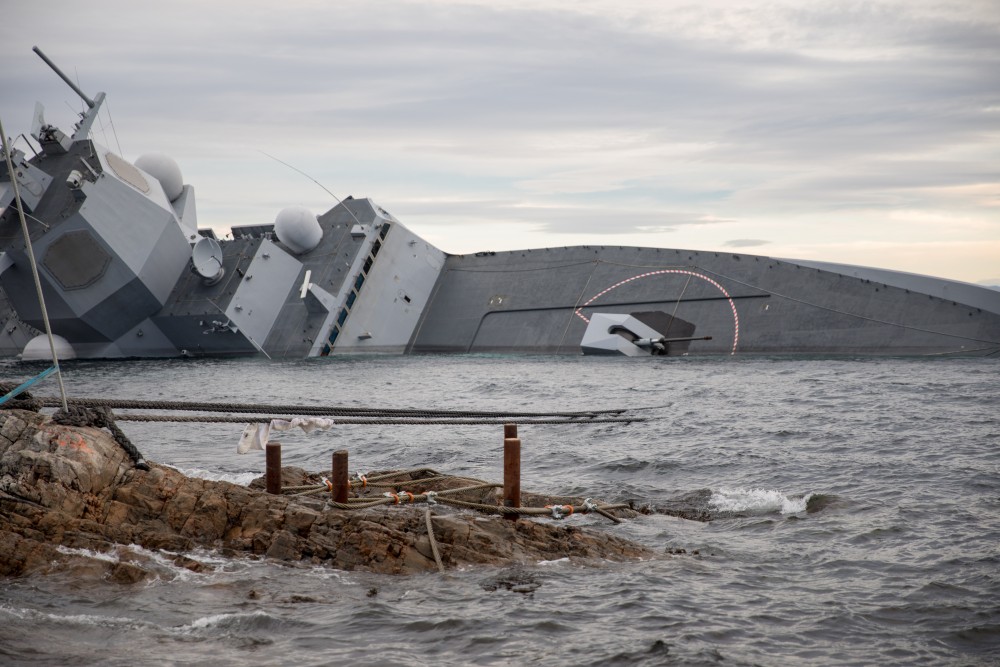 Photo: Jakob Østheim / Norwegian Defense
Photo: Jakob Østheim / Norwegian Defense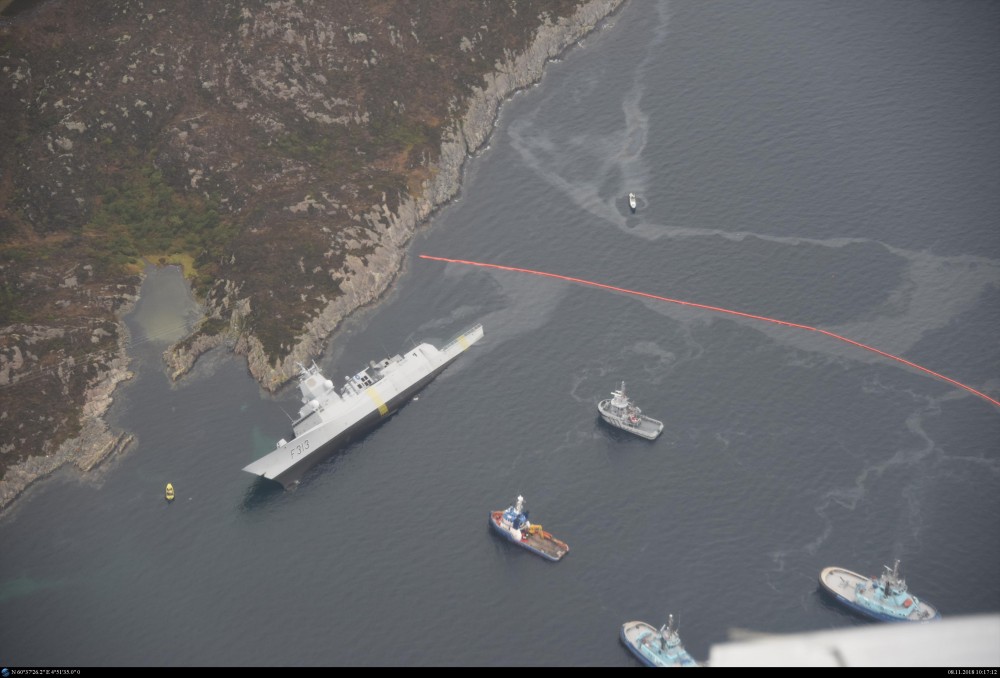 Photo: Norwegian Coastal Administration
Photo: Norwegian Coastal Administration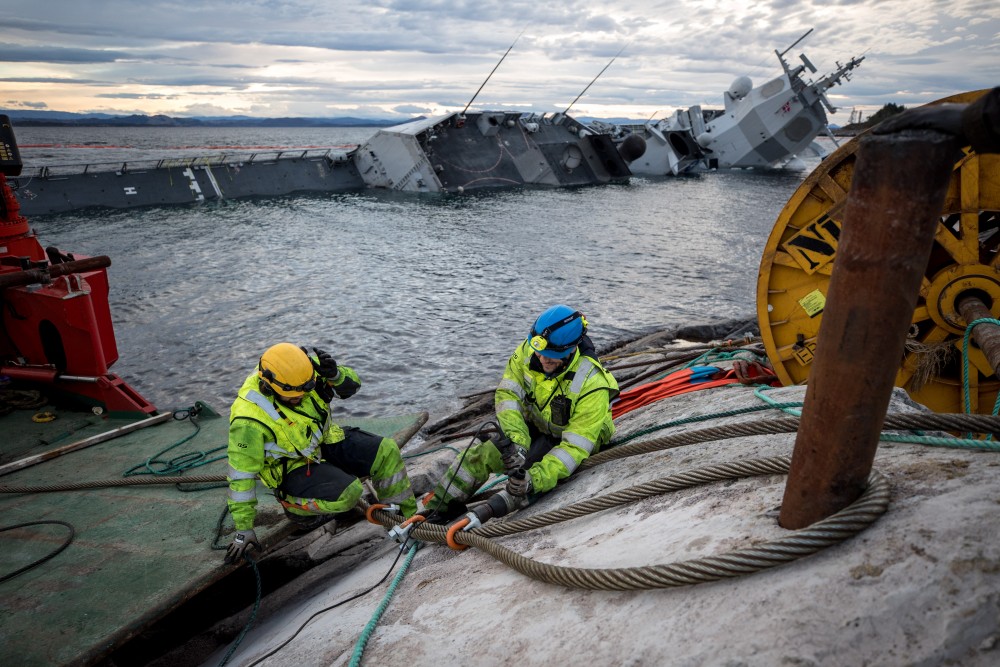 Photo: Jakob Østheim / Norwegian Defense
Photo: Jakob Østheim / Norwegian Defense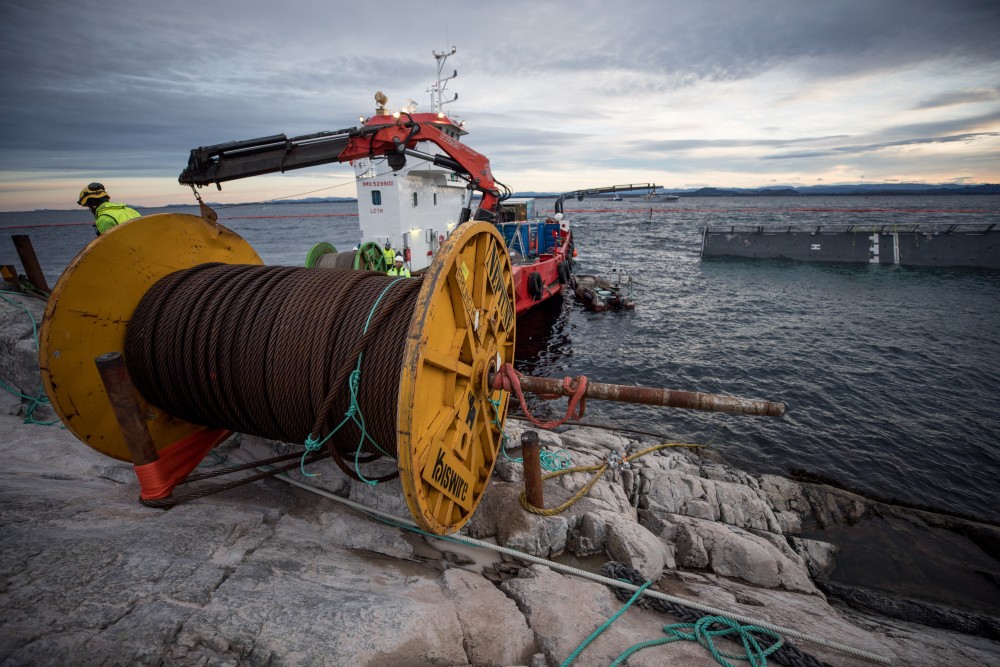 Photo: Jakob Østheim / Norwegian Defense
Photo: Jakob Østheim / Norwegian Defense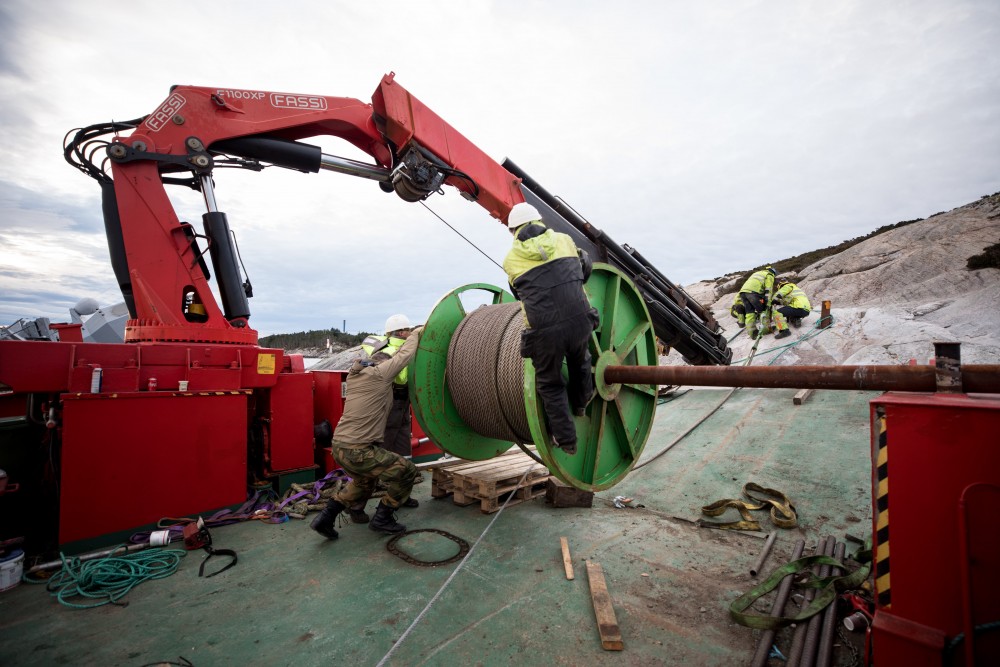 Photo: Jakob Østheim / Norwegian Defense
Photo: Jakob Østheim / Norwegian Defense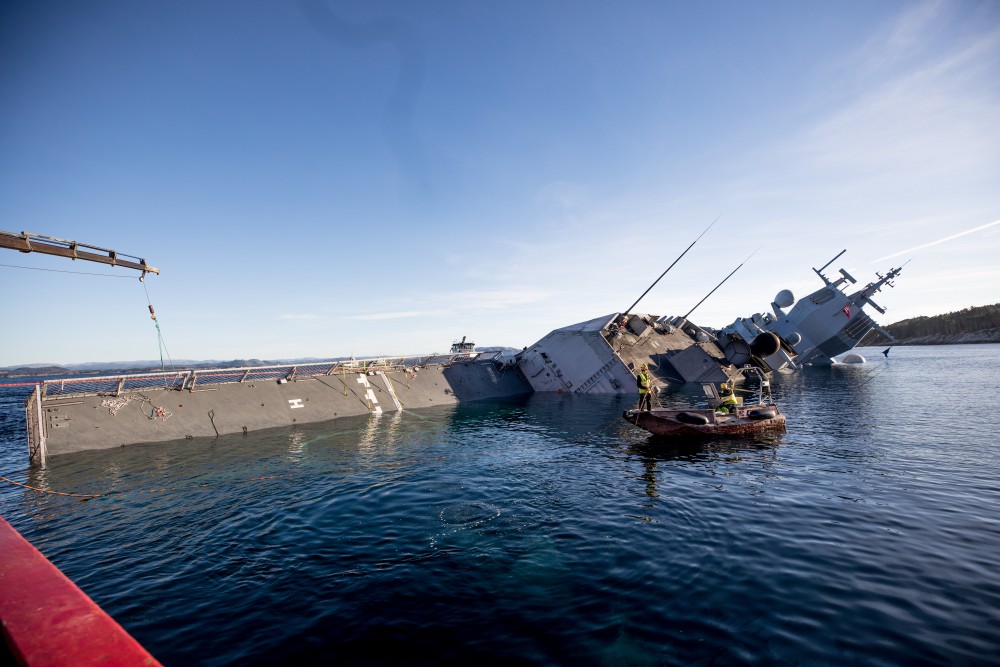 Photo: Jakob Østheim / Norwegian Defense
Photo: Jakob Østheim / Norwegian Defense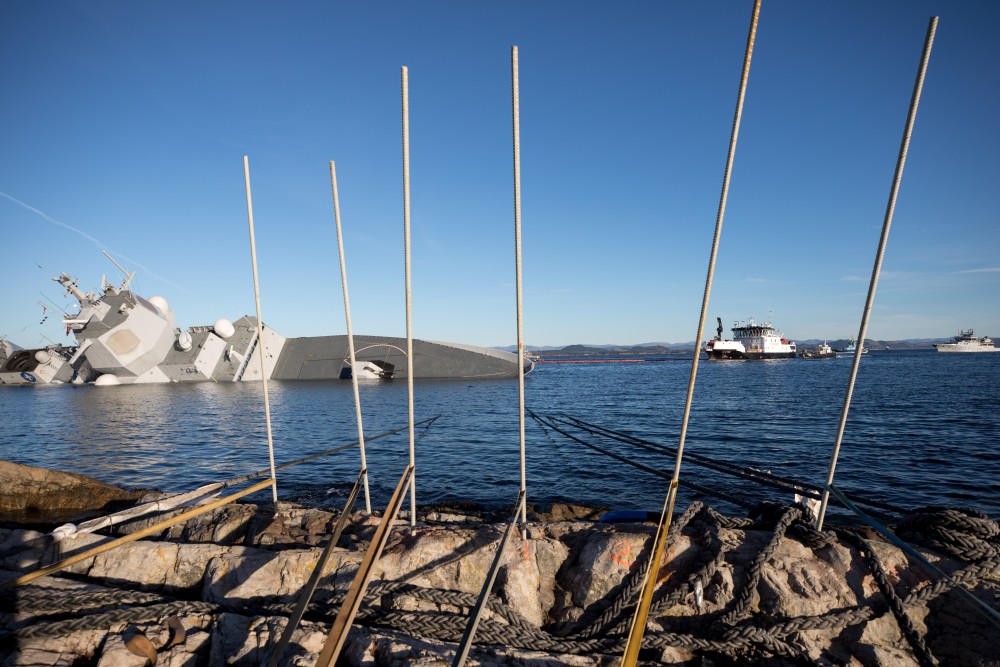 Photo: Jakob Østheim / Norwegian Defense
Photo: Jakob Østheim / Norwegian Defense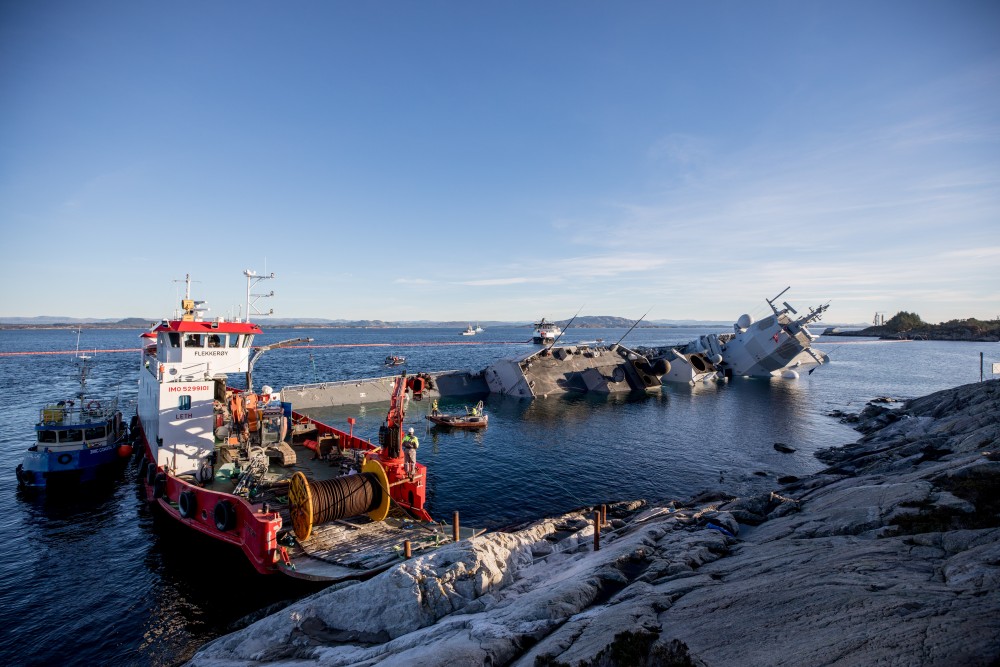 Photo: Jakob Østheim / Norwegian Defense
Photo: Jakob Østheim / Norwegian Defense Photo: Jakob Østheim / Norwegian Defense
Photo: Jakob Østheim / Norwegian Defense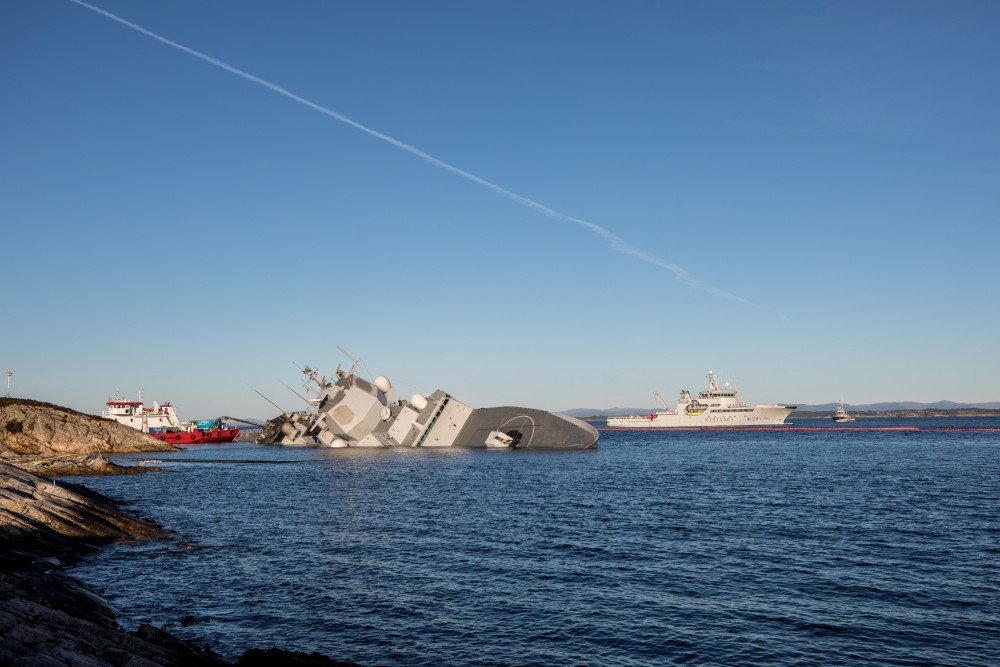 Photo: Jakob Østheim / Norwegian Defense
Photo: Jakob Østheim / Norwegian Defense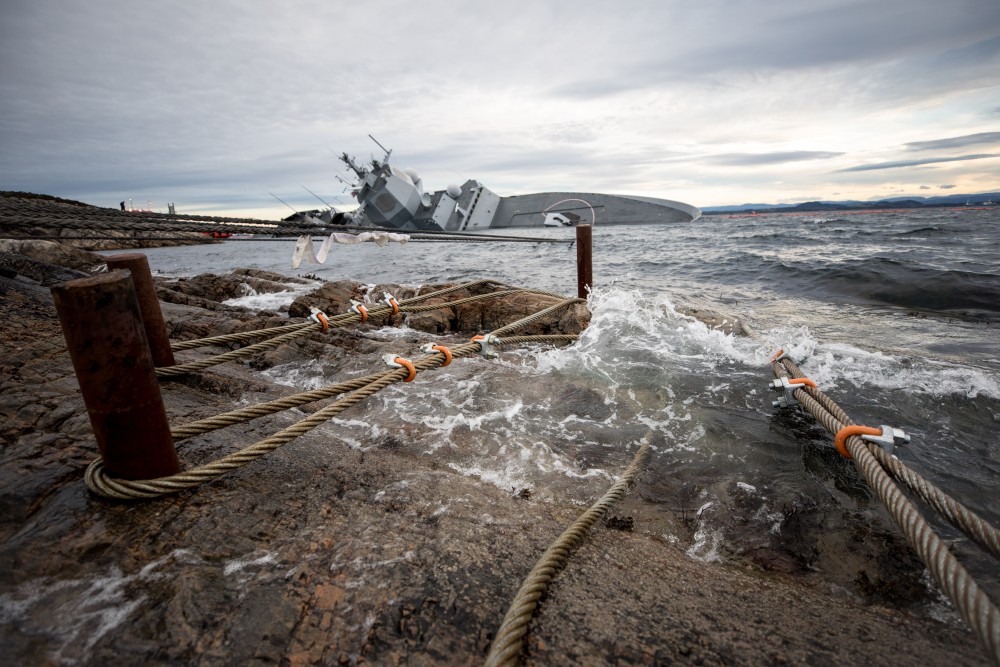 Photo: Jakob Østheim / Norwegian Defense
Photo: Jakob Østheim / Norwegian Defense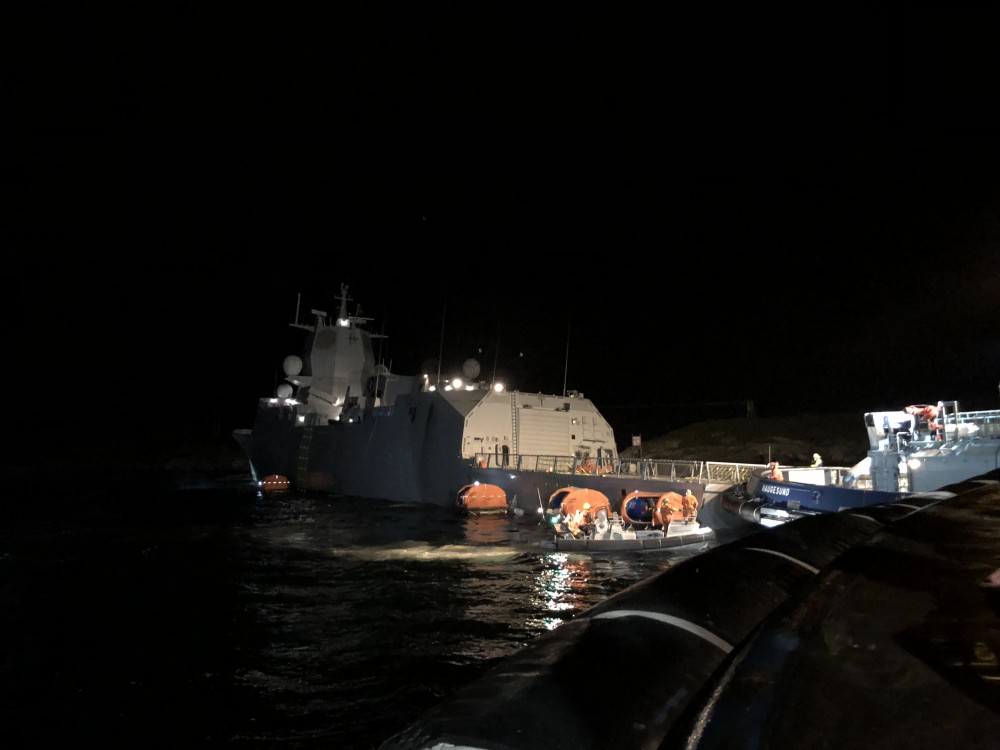 Photo: Marius Villanger / Norwegian Defense
Photo: Marius Villanger / Norwegian Defense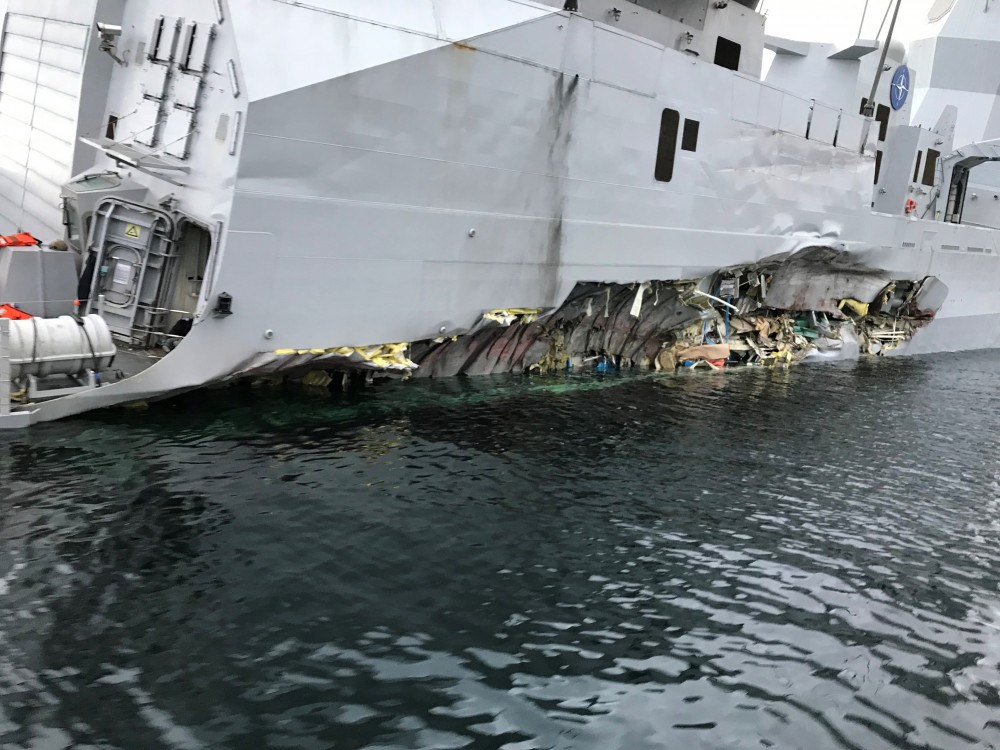 Photo: KV Bergen / Norwegian Coast Guard
Photo: KV Bergen / Norwegian Coast Guard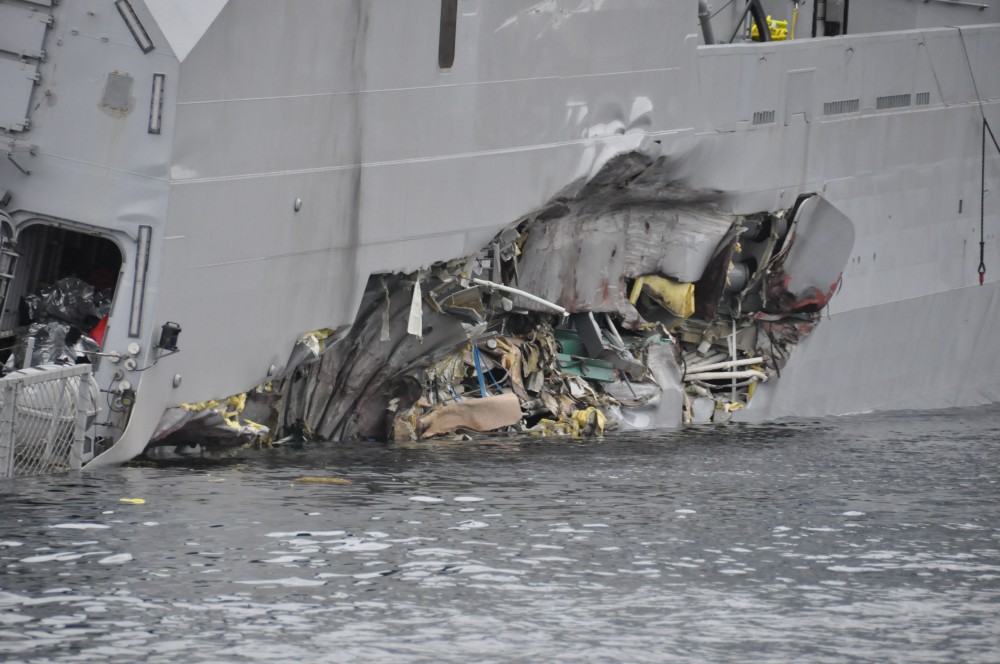 Photo: KV Bergen / Norwegian Coast Guard
Photo: KV Bergen / Norwegian Coast Guard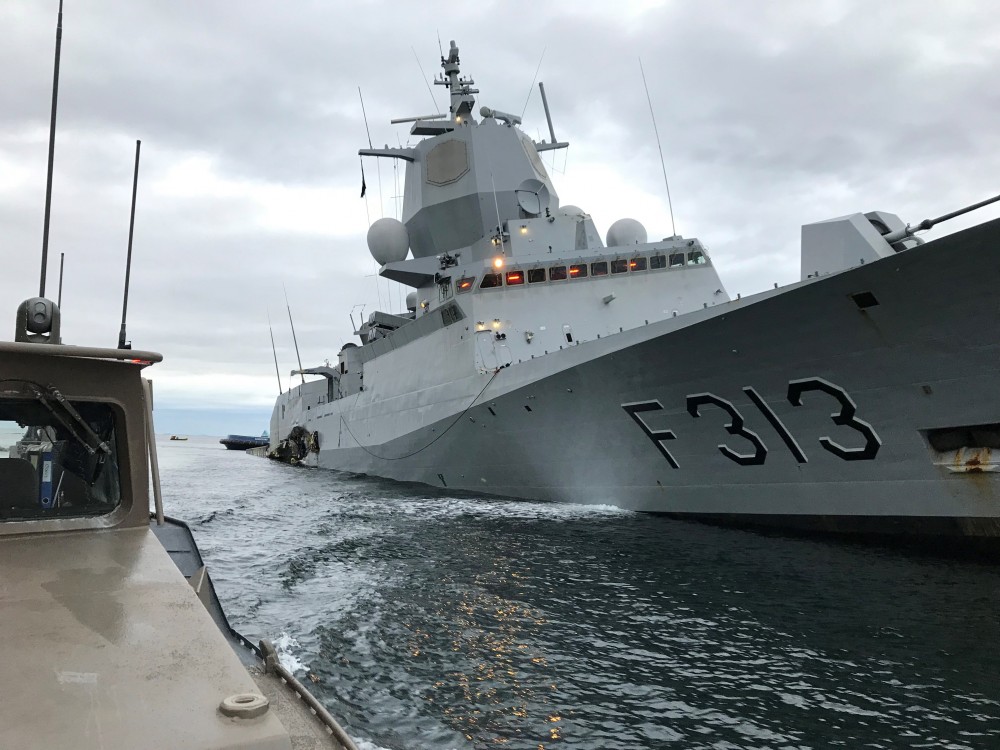 Photo: KV Bergen / Norwegian Coast Guard
Photo: KV Bergen / Norwegian Coast Guard

